

The Ultimate Chile Itinerary For Ten Days and Two Weeks
By Author Steph Dyson
Posted on Last updated: 8th April 2024
With the piercing peaks of the Andes prominent in the north, glacier-riddled national parks of the south, and fertile, wine-growing valleys of the center, it’s fair to say that Chile has jaw-dropping geographical diversity oozing from every pore.
It’s for this very reason why planning a Chile itinerary for ten days or more of travel might seem a bit of a headache. However, I’ve got plenty of ideas about how to organize a showstopping tour of this truly incredible country – and even wrote a guidebook about it .
Click to navigate this article:
How to use this Chile itinerary
Luckily, Chile has one of the best plane networks and road connectivity in South America, meaning you can – and should – zip between its diverse regions if you’re on a short trip.
Staying here longer? Even better; you’ve got plenty of time to really get under the skin of a country I came to love over the three and a half years I was based here. You can also get inspired by my list of the 31 best places to visit in Chile – which includes not just the “must-sees” but those under-the-radar destinations that few other websites mention.
This Chile itinerary focuses on the things to do in Chile broadly, but you’ll find plenty more details about where to go in Patagonia in the following:
- Four itineraries for one and two weeks of travel in Patagonia
- An itinerary for three or more weeks in Patagonia and free e-book download )
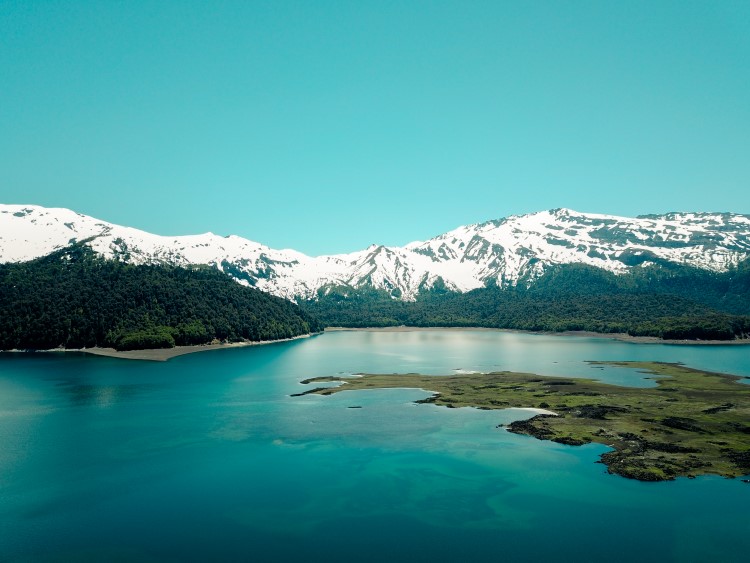
Looking for guidance about what to take with you on a trip to Chile? Check out our detailed Patagonia packing list , as well as our guide to what to pack for South America more generally.
Recommendations for travel in Chile and using this Chile itinerary:
- As a vast, sprawling country, there are plenty of things to do in Chile; it’s always better to slim down your travel itinerary, take it slow and really dig deep into a place than scratch the surface with a whistle-stop tour of all the top attractions. In the latter, you’ll also spend too much time traveling between places which, let’s face it, is not the main idea of a holiday or even longer-term travel.
- Travel in Chile is expensive and while this post doesn’t delve too deeply into how you can travel Chile on a budget, consider booking cheaper types of accommodation, such as local alojamientos or hospedajes (cheap B&Bs) or cabañas (cabins) if you’re in a group, many of which aren’t available to book via hotel booking websites.
- Chile is a safe place to visit. Since the pandemic, parts of Santiago and Valparaiso have become less safe than they used to be (for example, avoid Downtown at night) and the use of Uber or official taxis firm is highly recommended, but once you get out of the city, you’ll find Chile a safe and welcoming place to travel . Patagonia, and pretty much any rural area, is incredibly safe.
- There is a wealth of good hotels and guesthouses across the country. Some of the best had a profound impact on my trips around the country, which is why I’ve pulled together my absolute favorites into this guide to the best hotels in Chile (just 31 of them!!).
- Plenty of hostels and the previously mentioned accommodation types also have kitchens, making it easy to self-cater. Bear in mind that Chile has some excellent restaurants and some surprisingly good local cuisine (even if it might not seem like it at first glance) so make sure to factor in some time and money for eating out!
- Alternatively, camping is relatively easy throughout the country , so pack camping and cooking equipment (see my recommendations in this post about packing for Patagonia ) and use that as a way of seeing Chile on the cheap.
- These Chile itineraries for ten days and two weeks rely on the fact that you will take some long-distance transport to travel between the regions. Yes, flights can be expensive, but if you plan ahead, you can get a good deal with Sky Airline (the low-cost airline) and LATAM (the more upmarket airline). I generally compare prices on Skyscanner and then book directly through the companies themselves.
- Additionally, Jet Smart is Chile’s answer to Easyjet in Europe and has some extraordinarily low fares, although, they don’t yet offer flights to all of the cities and they’re often at slightly more awkward hours. However, they’re definitely worth checking out, particularly as they’re starting to offer direct flights between cities in Chile without having to go through Santiago, which can significantly reduce your flight time (you can see their full list of destinations here ). Be aware that you always have to pay an extra fee for both hold baggage and cabin baggage and they will charge you if you go over the weight limit for either.
- Buses are also an inexpensive and reliable way of traveling through Chile, with long-distance, overnight buses making it easy enough to travel from Puerto Montt to Santiago or Santiago to San Pedro de Atacama in reasonable comfort (although prices of flights, if booked a few weeks in advance, are generally as cheap as bus tickets for these routes). Aim to book a couple of days in advance; websites such as Bus Bud , Viaje en Bus , and Recorrido are really helpful, while you can book off the cuff at the bus terminals in all towns and cities.
- Renting a car is also a great way of traveling. I’ve personally driven through a lot of Chile and it’s much faster than taking buses and gives you the freedom to explore beyond the main tourist destinations. Driving in Santiago is somewhat terrifying and you find drivers don’t pay a lot of attention in most cities and even in rural areas, so you’ll want to keep your wits about you. However, of all the countries in South America, Chile (and Argentina) is definitely the safest place to rent a car. There are lots of tolls on the highways, so make sure you’ve always got cash and download Maps.me for maps available without internet. I always book using Rental Cars , as I find they have the best prices (even better than going directly with companies generally) and have insurance documents in English. Always double-check your insurance documents to ensure your insurance is valid for driving on unpaved roads if you plan on exploring the Carretera Austral , as this is not always guaranteed.
- Uber works in Chile. Uber used to be illegal, but now isn’t. Uber is generally a reliable and safe way of traveling around cities (and better than hailing a cab, which will often try and rip you off or scam you).
- Oh, and I lived in Santiago for close to three years and wrote a guidebook about Chile (you can learn about the project here and buy the book here ), so rest assured that these itineraries stem from some pretty extensive exploration and travel.
Planning Your Trip to Chile?
Save time, stress & money with a customized travel itinerary planned for you by a Chile expert
FAQs about visiting Chile
Chile is a vast country, extending 4,270 km (2,653 mi) from tip to toe and packed with superlative natural landscapes, world-renowned wineries, and remarkable cultural destinations. As a result, the minimum amount of time you want to spend in Chile to truly get a feel for the country is ten days.
Seven days isn’t much time to see this huge country. However, with just seven days, you could spend one in Santiago enjoying the city’s fine restaurants and exploring its museums and street art , before heading out to the Casablanca wine valley to sample the country’s tastiest white wines or to the historic coastal city of Valparaíso .
From there, you can fly three hours south to Punta Arenas, the southernmost settlement in continental South America, where you can see penguins and whales.
Afterward, continue to Puerto Natales (three hours north by vehicle), the gateway town to Torres del Paine National Park . Spend three days in this beautiful protected area kayaking to glaciers, hiking to lofty mountain peaks, and even catching sight of pumas. Then, fly back to Santiago and then home.
January and February mark the hot summer months in Chile, but also the busiest times for tourism. If you want to explore the sights of Patagonia and other popular places around the country without the crowds, the months of November and March are the best times to visit Chile . Expect slightly cooler temperatures but quieter attractions!
Yes I can! While there will be tour agencies operating wherever you’re based in the world, I suggest booking through local company EcoChile Travel , a leading tour operator based out of Santiago.
Because they’re local, they’re far better acquainted with what’s going on in the country and the new, exciting places that should form part of your itinerary than international companies and will also get you the best price.
All of EcoChile Travel’s itineraries can be custom designed and they’ll organize all the logistics of booking your trip, plus set you up with an interactive app with all your travel reservations, and dining recommendations.
If any of the itineraries below tickle your fancy, they you they should be able to turn it into reality for you!
Chile Itinerary for ten days of travel
Day one: santiago.
Arrive at Aeropuerto Internacional Comodoro Arturo Merino Benítez (SCL) in Santiago and take either a transfer ($7,000 with Delfos or TransVIP ; no need to book in advance), Uber or the Turbus airport bus (get off either at Terminal Pajaritos (better if it’s rush hour) or Terminal Alameda and take the metro Line 1 to the centre of town).
Spend your afternoon trotting around Downtown. Visit the Plaza de Armas to see the oldest buildings in the city, some of which date back to the 18th century.
Pop into the Museo Histórico Natural (Natural History Museum) to learn about Chilean history and, more importantly, to take their free tour up to the Reloj de la Torre , the Clock Tower, for incredible panoramas of the entire Plaza de Armas.
Visit the nearby Museo Chileno de Artes Precolombino (Chilean Museum of Pre-Colombian Art), with its incredible collection of pottery, textiles, and artwork covering the pre-Colombian civilizations across Latin America.
You could also spend an afternoon learning about another side of Chile at the Museo de Memoria y los Derechos Humanos (Museum of Memory and Human Rights), which explores the darkest days of Chile’s history: the Pinochet dictatorship.
Finally, read this article about the best things to do in Santiago , this piece about day trips you can’t miss from Santiago , and then listen to my interview on the We Travel There podcast to learn more about my recommendations for visiting Chile’s capital city.
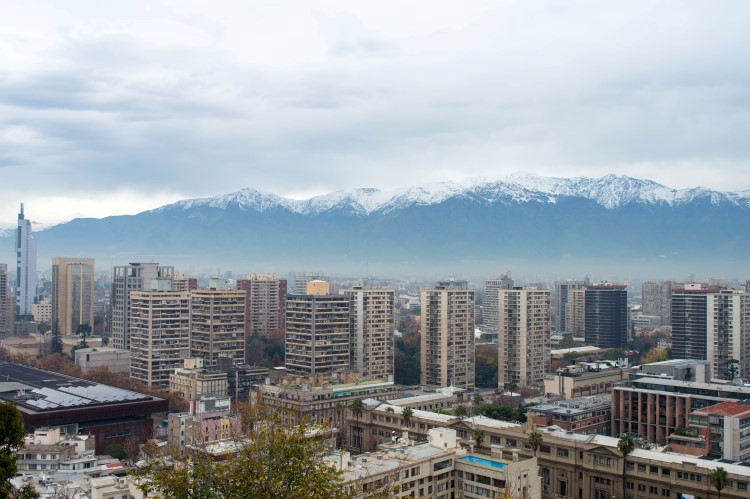
For dinner, you’ve got various options:
- Head to Barrio Bellavista to experience unique, indigenous cuisine at Peumayen or go for gourmet Chilean dishes paired with some of the best Chilean wines at Bocanariz .
- Barrio Lastarria (a couple of blocks west of Plaza Baquedano) is also a good shout for dinner. Learn about Chilean pisco at Chipe Libre or go for traditional Chilean dishes at Liguria , a restaurant popular among local Santiaguinos and even Kate Moss.
- For meat lovers keen to learn about the Chilean art of the asado (barbecue), make sure you head east along Line 1 of the metro for a steak (cooked a punto (medium rare) at Eladio .
Where to stay in Santiago: Stay overnight in Santiago’s first ‘ecoHotel’, Carménère Eco Hotel (Santander 292, double room $155,000 CLP ($196 USD)), which is equally appealing to environmentally conscious travelers and those seeking an authentic Chilean wine experience from their own hotel. It’s in the heart of the hip Barrio Italia, surrounded by a wealth of bars and restaurants and excellent transport links.
Alternatively, read my complete guide to Santiago’s best hotels and hostels for every budget, ordered by neighborhood.
Days Two to Five: San Pedro de Atacama
Head back to Comodoro Arturo Merino Benítez International Airport (SCL) , from where domestic flights leave from a separate terminal. Take a two-hour flight to Calama .
Transfer services at the airport are timed to leave after flights arrive, so hop on one (one hour 30 minutes) to San Pedro de Atacama , one of Chile’s top tourist attractions.
While I explored the region by hire car a few years ago, this isn’t something to do lightly. Elevations are really high and altitude sickness is no joke (trust me, I’ve had it twice), while driving conditions on roads, many of which are unpaved and practically just sand, can be lethal if taken too fast. If you’re in any way unsure, opt instead for a tour.
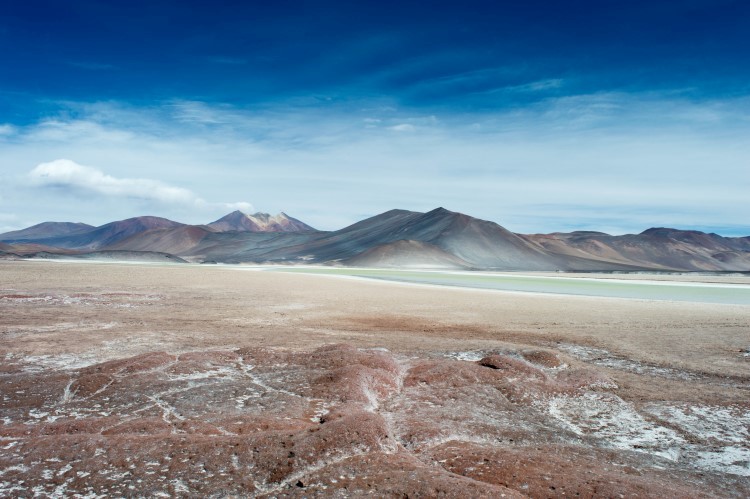
Spend the next two days exploring the region’s top sites, including Piedras Rojas, the Lagunas Altiplanicas and Geisers del Tatio, and spend an evening stargazing and learning what ancient Andean cultures believed lay in the night sky.
I highly recommend taking a tour of the Geisers del Tatio with Trekana , whose guides are borderline obsessed with the wildlife that you can see en route, including two species of flamingoes, a whole host of bird species, beautiful vicunas (the wild cousin of the alpaca), and if you’re lucky, vizcachas (a type of chinchilla with extremely big ears and a penchant for sunbathing).
For more detailed information and inspiration for San Pedro de Atacama read this post on adventurous places to visit in and around San Pedro de Atacama .
Where to stay in San Pedro de Atacama: If you’ve got a bigger budget or are traveling in a couple, stay at Ckuri Atacama (double $63,000 CLP/$80 USD; minimum two-night stay); it’s definitely the nicest accommodation you’ll find in San Pedro. Their three double rooms include private bathrooms, large double beds, a small breakfast area with fridge, cutlery, and plates (breakfast isn’t included – so go and check out Pananderia Franchuteria (Calle Gustavo Le Paige) in town for Chile’s best croissants and other delicious French pastries!).
Where to stay on a budget in San Pedro de Atacama: For smaller budgets, Hostal Lackuntur (dorm $30 USD, $90 USD double) is ideal. It’s got a decent kitchen, loads of hammocks, and a very welcome swimming pool. Its location a few blocks north of the town also ensures it’s nice and quiet during the evenings.
Days Six and Seven: Valparaíso
Return to Calama and take a flight to Santiago. Buses leave from the Terminal Alameda (Av. Alameda 3750) and the Terminal San Borja (San Borja 235) in the city center for Valparaíso (two hours, $3,000 CLP/$4 USD), a historic harbor city set across 42 hills and home to a wealth of street art.
This includes La Sebastiana, the beautiful ship-inspired house of Nobel Prize-winning Chilean poet, Pablo Neruda (well, one of his three), elderly acensores (which are also UNESCO heritage monuments), and a colourful skyline of brightly-painted houses, cobbled streets, and vivid graffiti.
Read all about our favorite things to do in Valparaíso for more information about the city.
If visiting over the summer (be warned: it gets rammed full of Chilean holidaymakers), be sure to hop on a local micro ( bus) and head around the coast towards Viña del Mar where the best beaches are.
The easiest to access is Playa Caleta Abarca as it’s right on the main road that passes through the city, while nearby Reñaca also has a pretty beach.
Viña del Mar is also home to the brilliant Museo de Arqueología e Historia Natural Francisco Fonk , which houses a collection of artifacts from Rapa Nui (Easter Island) – including a 2.9-meter tall moai statue – and is well worth a visit.
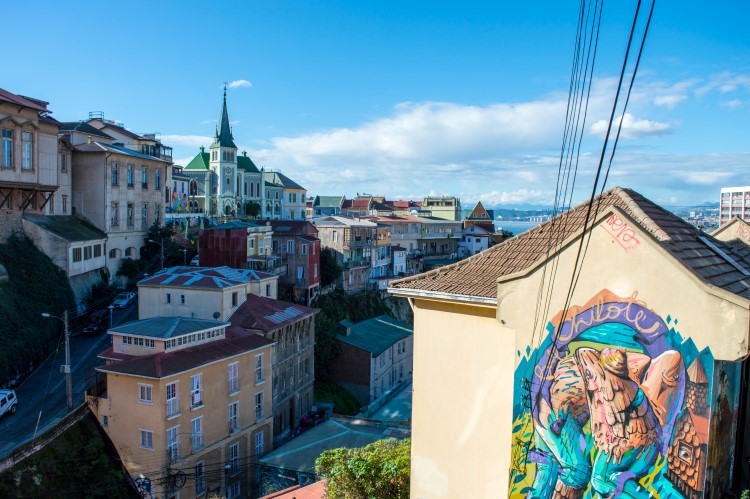
Valparaíso has a reputation for being unsafe, with Cerro Alegre and Cerro Concepción the safest areas to explore during the day, and practically the only areas I would recommend staying at night.
Avoid the bus station where possible (if arriving here, call an Uber to pick you up or arrange a taxi with your hotel) and the area around the harbor. Always stick to areas with plenty of street lights and don’t carry valuables with you.
If driving, look out for your tyres being punctured; it’s a clever trick by thieves, who come and offer to assist you change the type but manage to relieve you of your belongings while they do.
Where to stay in Valparaíso: Winebox (Baquedano 763, $99,000 CLP/$125 USD double) is a truly unique hotel, built entirely from 25 recycled shipping containers. What’s more, they have an urban winery in the basement and a wine bar cum restaurant on the roof (which is open to the public). It’s actually on Cerro Mariposa, so you’ll need to take local colectivos (shared taxis) or taxis to get into the centre at night.
Where to stay on a budget in Valparaíso: For smaller budgets, the pint-sized Puerta Escondida (Templeman 549, $79,000 CLP/$100 USD double room) is a welcoming B&B in the heart of Cerro Concepción. It gets booked up fast, so be sure to reserve in advance.
Days Eight and Nine: Santiago and Colchagua
Return by bus to Santiago and you’ve got two options for exploring another of Chile’s top attractions: vineyards (which, in our opinion, make Chile the best country in South America for wine ).
- For bigger budgets: rent a car and drive to winery Casa Silva, just north of San Fernando.
- For smaller budgets: take the bus from the Terminal Santiago ( Av. Alameda 3850) operated by Nilahue to Santa Cruz (3 hours, $7,000 CLP),
1. For bigger budgets
One of the most awarded wineries in the country and on the northern tip of the Colchagua Valley, Casa Silva not only has a wonderful setting (think rolling hills covered with neat rows of vines and a colonial-style bodega overlooking their polo field) but also an excellent restaurant.
Where to stay: I stayed in their gorgeous accommodation, Hotel Casa Silva (double $181,000 CLP/$210 USD) and spent a day eating in their two fine restaurants, wine tasting in their wine shop, and wandering their vineyards.
You can stay one day at Casa Silva, and then on the next, drive to Santa Cruz, the main town for the Colchagua wine valley, and spend an afternoon exploring some of Chile’s top vineyards (see below).
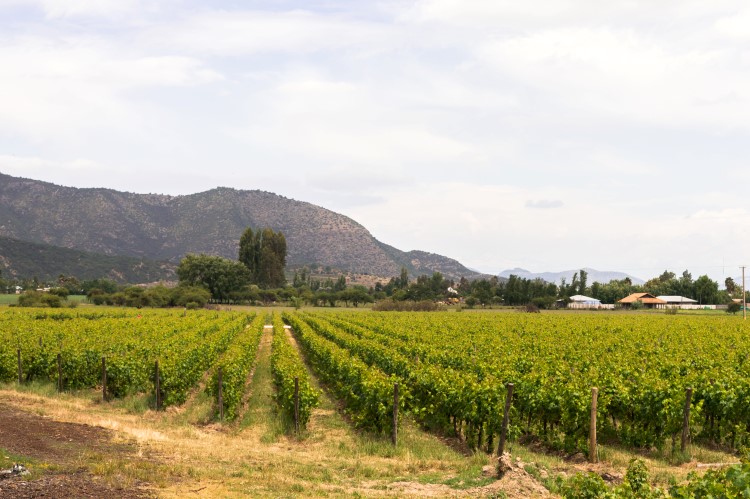
2. For smaller budgets
Take a bus to Santa Cruz where you can rent mountain bikes, complete with panniers, from Casa Suiza ($40,000 CLP/$51 USD double, $19,000 CLP/$24 USD dorm) to explore the local vineyards of the surrounding Colchagua Valley at your leisure.
For all budgets
All of the wineries in the Colchagua Valley offer tastings, tours and many even have fine-dining restaurants (in beautiful settings, surrounded by vines), so I strongly suggest you aim to have lunch at one of the restaurants.
The valley is also known for its carménère wine , a grape similar, and for a long time, confused with Merlot, so make sure you sample plenty while you’re here.
My favorite is Montes , which lies ten kilometers north of Santa Cruz. It’s a renowned winery (they age their wine to the sound of Gregorian chant in an amphitheater-shaped cellar) with tours (from $10,000 CLP/$14 USD), tasting (from $2,000 CLP/$3 USD per glass) and the truly sensational Fuegos de Apalta restaurant.
I had the best steak of my life in their dining room, which surrounds a circular iron grill where you can watch the chefs at work. It doesn’t come cheap (expect to pay $20,000-$24,000 CLP/$28 USD-$34 USD per main) but their lomo liso (sirloin) and entraña (skirt steak), washed down with a Cabernet Sauvignon is an experience you’ll never forget.
Other wineries to visit from Santa Cruz include:
- Boutique winery Laura Hartwig , which you can easily walk to for a tasting as it’s on the outskirts of Santa Cruz. They produce very small quantities of wine each year and while it can sometimes be hit-and-miss, they often strike gold. You can sample glasses for just $1,000 CLP/$1.5 USD).
- Eight kilometers east of Santa Cruz, Viu Manent is a winery set within a beautiful old hacienda. Their star grapes are Carménère and Malbec and they have tours of the vineyard via horse-drawn carriages (from $15,000 CLP/$21 USD) as well as tastings (from $12,000 CLP/$17 USD) and great food in their restaurant Rayuela Wine & Grill ($9,000-$14,000 CLP/$13-$20 USD mains).
Where to stay in Santa Cruz: Hotel TerraViña (Camino a los Boldos, $166,000 CLP/$210 USD double) has a charming location overlooking rows of vines from cast-iron balconies and a swimming pool. The added benefit is they’re a short walk through the vines to the Laura Hartwig winery, which can be reached by a short vine-lined path.
Where to stay on a budget in Santa Cruz: Small budgets will enjoy staying overnight in Casa Suiza (Los Libertadores 199, $40,000 CLP/$51 USD double, $19,000 CLP/$24 USD dorm). There are plenty of places for unwinding, including a grassy garden, plus kitchen access, and owners who run cycling tours to tiny boutique wineries.
Day Ten: Santiago
Spend a final day in Santiago. Dedicate at least three hours to exploring the Museo de Memoria y los Derechos Humanos (Museum of Memory and Human Rights), an excellent museum dealing with a grizzly topic: the Pinochet dictatorship that lasted from 1973 to 1990.
If you want to learn first-hand about the Chilean love of the sanguche , head to La Fuente Alemana for a traditional churrasco (beef or pork sandwich) – just ask them to go easy on the mayo. Alternatively, sample some other key Chilean dishes in Santiago with the help of this guide to Chilean food .
Head over to nearby Barrio Lastarria ( barrio means neighborhood) and take the short hike up to Cerro Santa Lucia for views across the city and the omnipresent Andes Mountains beyond.
For even more impressive cityscape views, take the funicular up to Cerro San Cristóbal in Parque Metropolitano (don’t walk; there have been reports of muggings of people hiking up the hill and those straying from the trails).
Finally, listen to my interview on the We Travel There podcast to learn more about my recommendations for visiting Chile’s capital city.
Return to the airport and fly home.
Chile itinerary for two weeks of travel : Santiago and the Lakes District
In this itinerary, I talk you through how you can organize it yourself. However, if you want someone to take care of the logistics and plan a once-in-a-lifetime trip, then reach out to my recommended local tour operator, EcoChile Travel . They’re experts in planning trips in Chile and can custom design the itinerary to suit you and your budget. Their Chilean Lakes District itinerary follows a similar route to this itinerary. Mention Worldly Adventurer to get a 5% discount off this trip.
Arrive at Comodoro Arturo Merino Benítez International Airport (SCL) in Santiago and take either a transfer ($7,000 with Delfos or TransVIP; no need to book in advance, Uber, or the Turbus airport bus (get off either at Terminal Pajaritos (better if it’s rush hour) or Terminal Alameda and take the metro Line 1 to the center of town).
For more inspiration, read this article about tourist attractions you can’t miss in Santiago .
Where to stay: Splurge on your hotel and stay overnight at the foot of Cerro Santo Lucia in Hotel Magnolia (Huérfanos 539, $276,000 CLP ($350 USD) double) in the heart of the Barrio Lastarria and surrounded by a wealth of bars and restaurants, plus excellent transport links.
Alternatively, read my complete guide to Santiago’s best hotels and hostels for every budget (including much more affordable than Hotel Magnolina), ordered by neighborhood or learn about other things to do in Santiago .
Days Two to Five: Chiloé
The fastest way to reach Chiloé is with a direct flight between the domestic terminal of Comodoro Arturo Merino Benítez International Airport (SCL) and Aeródromo Mocopulli (MHC; just outside of Castro).
This cuts your travel time down considerably, as flying to Puerto Montt means a four-hour journey (including a 30-minute ferry across the Canal de Chaco).
It’s not the most scenic of journeys, either, and you’ll be doing it on the way to Puerto Varas, so save yourself time by flying directly to Chiloé. There are far fewer daily flights to this airport, however, so book early.
From the airport, it’s a short taxi ride to Castro, where you can organize to pick up a hire car .
Chiloé is a small island, however rural public transport – like in most of Chile – isn’t the most frequent nor the most reliable. As a result, I would highly recommend hiring a car for your time here, giving you the freedom of seeing multiple parts of the island in one day – and also handy if you want to stay at one of the more remote lodges (which I highly recommend!).
Driving in Chiloé is straightforward and easy; roads are generally one two lanes and other drivers are relaxed (unlike those in Santiago). There are also no toll booths that require cash to contend with, although I do recomend having Chilean pesos on hand for dining at more rural restaurants and for entering the national parks and reserves.
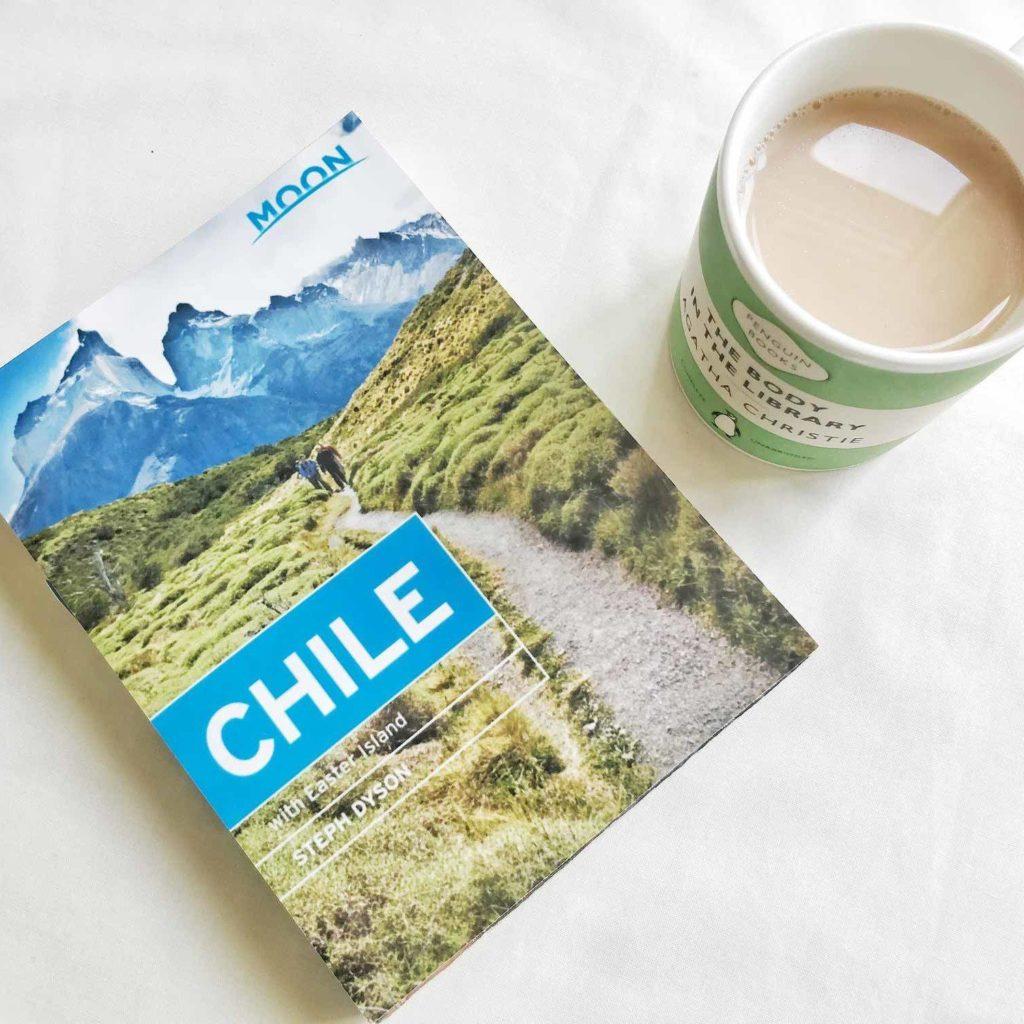
Need more inspiration?
You’ll find even more detailed itineraries, off-the-beaten-path gems, hiking routes and accommodation, restaurant and tour recommendations to suit your travel style in my brand-new guidebook, Moon Chile.
Alternatively: Fly from the domestic terminal in Comodoro Arturo Merino Benítez International Airport (SCL) to Aeropuerto El Tepual (PMC) (one hour 40 mins), the airport just outside of Puerto Montt . Rent a car from the agencies at Aeropuerto El Tepual and drive to Chiloé Island. Puerto Montt airport has some of the cheapest car rents in Chile (from $30 USD per day) and you can book using Rental Cars , who provide insurance documents and all contracts in English.
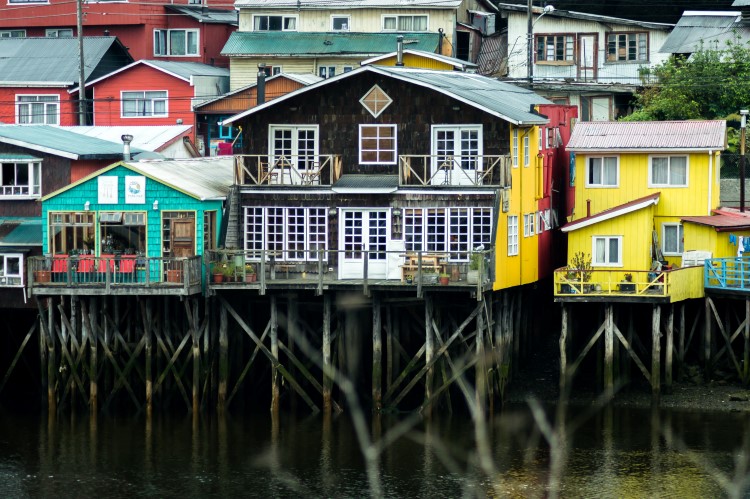
Castro , the capital of Chiloé is famed for its vibrant palafitos: colorful, traditional fishermen’s houses on stilts that line the harbor overlook the bay at two places, just off Calle Ernesto Riquelme and another accessed by Calle Puerto Montt.
However, the best place to appreciate them in all their colorful glory is across the river from Calle Ernesto Riquelme at Mirador Gamboa .
Another unmissable stop in Castro is at the Feria Artesanal (Lillo s/n, just before the harbor), a craft market where you can find both local woolen crafts to buy and a cheap lunch of empanadas (stuffed with seafood or cheese and prawns) or huge plates of fish.
Nip out the back to meet the resident sea lion population, who’ll also be fighting over their lunch – scraps of fish thrown into the sea by the fishermen.
Where to stay in Castro: If you fancy finding out what it’s like inside a palafito, stay at the brown-shingled Palafito 1326 (Ernesto Riquelme 1326, $79,000 CLP/$100 USD double). Rooms are spacious, with crisp white linens and those overlooking the water have a balcony from which you can watch the ocean.
Alternatively, I can’t sing the praises of Refugio Pullao ($185 USD double) enough. Run by its Santiaguino owners, this tiny hotel is located on the Peninsula Rilan, across the bay from Castro, and has astounding views east out towards the ocean. Tierra Chiloé , a five-star hotel a little further around the shore, charges four times the price for the same view (although, admittedly, this includes tours and all-inclusive (and exceptional) dining). The latter is beautiful, but definitely only for those with a very large budget.
Where to stay on a budget in Castro: La Minga Hostel (dorm $16,000 CLP/$20 USD, $25,000 CLP/$40 USD double) is a proper backpacking hostel (run by the wonderful Camila, a Brazilian and former backpacker herself) that is small but perfectly-formed. Rooms are fairly tiny and there aren’t that many bathrooms to go around, but it’s got a really sociable atmosphere without being a party hostel. Camilia also has great local knowledge and can help with suggestions for local things to do.
Spend the rest of your time on Chiloé exploring the churches; my favorite was definitely Tenuan , which you could reach by bus from the terminal in Castro (one hour 10 mins, $1,600 CLP/$2 USD).
If there’s a group of you, take a wander along the shore and you can try negotiating a small boat to take you to Isla Mechuque, which also has its own church and a small museum and is supposed to be stunning.
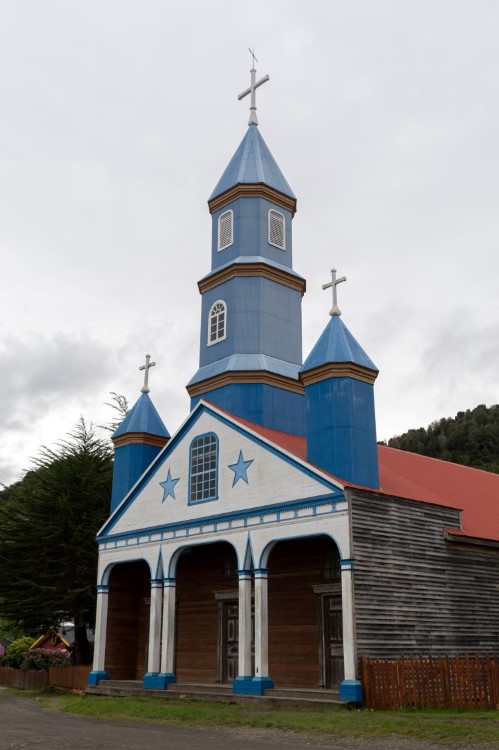
Cucao, a one-hour bus journey (again from the local bus terminal in Castro), is one of my favorite places on the island and has the mind-blowingly beautiful Palafito Cucao ($55,000 CLP/$130 USD double).
Not only is this place hugely comfortable (it has lovely double rooms), it’s the living room area and outdoor terrace with views across Lago Cucao that make this place one of the most sensational places I’ve ever stayed in Chile. I even saw a giant otter swimming past one day.
Palafito Cucao is close to the Muelle de las Almas , a destination that has shot to fame in Chile in recent years.
While it is beautiful – it’s an art installation shaped like a pier that appears to jut out over the cliff edge and into the ocean on a desolate hillside – it’s now so overrun that much of the magic is lost.
If you do want to go, make sure you get here as early as possible in the morning, as 45-minute queues for photos with the muelle are unfortunately common.
Another option, instead, is to visit the Muelle de la Luz near Chepu, another of the artist’s sculptures. Again, this can get very busy with tour groups and, for the boats to run to the muelle, it requires at least 10 people.
There’s not a huge amount there, just the muelle and beautiful views across the beach below – which admittedly ranks among the most beautiful on the island.
Insider tip: Muelles have sprung up all over Chiloé, after the original Muelle de las Almas was constructed by Santiago sculptor Marcelo Orellana Rivera. Note that there are only three original muelles : Muelle de las Almas, Muella de la Luz, and Muelle del Tiempo. All the rest are imitations, designed by local people to capitalize on the craze for selfies on them.
Days Five and Six: Puerto Varas
Drop the car back in Castro and then take the bus to the terminal in Puerto Montt and then take a small micro (a blue local bus) from the terminal to Puerto Varas (20 mins, $1,000 CLP/$1 USD).
Hiring a car for this part of the itinerary: Alternatively, I recommend hiring a car from Puerto Montt; some of the most interesting things to do in the Lakes Region are served by fairly infrequent public transport, so it can really help to have your own vehicle. Book a one-way rental from Puerto Montt to Temuco; this is surprisingly affordable (Puerto Montt is the cheapest place in the country to rent a car) and the one-way free doesn’t add much to the overall rental price.
Known locally as the City of Roses for its abundant blooms in summer, this lovely lakeside town sits beneath the shadow of Volcán Osorno, a volcano that, thankfully, hasn’t erupted since 1869.
There’s not a whole lot to do in the town; the main attractions lie in the activities in the surrounding national parks, lakes and rivers.
If you’ve just got an afternoon here, the somewhat eccentric collection of artwork and accumulated bric-a-brac in Museo de Pablo Fierro , run by enthusiastic owner and artist Pablo Fierro is definitely worth an hour of your time,
I’d also suggest heading to La Mesa Tropera for a pizza and locally brewed beer plus the best views of the lake and the volcano, or, if you’re a wine lover, La Vinoteca has a brilliant selection of wine by the glass, a range of Chilean dishes, and an excellent attached wine shop.
For hikers, you’ve got plenty of options nearby. Alerce Andino National Park has a range of different hikes, including one to a 3,000-year-old alerce tree, and can be reached without 4WD (although bear in mind that both routes include a gravel section of the road (and the southern entrance is in particularly poor condition).
The Llanquihue National Reserve is another beautiful protected area, with a mix of Valdivian temperate rainforest and lava floes from Volcan Calbuco, which erupted in 2015 and closed the reserve until just last year.
Again, this park is accessible without 4WD, but with roads in a similarly poor condition, so drive slowly and carefully.
Another option is to head to Petrohué on the banks of Lago Todos los Santos where there are a handful of treks.
The most interesting is Paso Desolación , which goes around the edge of the volcano, taking you above the tree line with beautiful views of the Osorno volcano and Lago Llanquihue below, over an around eight-hour return hike (23km/14.2mi).
A shorter, 11km (6.8mi) route takes a path along the edge of the lake before heading back in a loop and offering views of the volcano and the valley, with a walking time of around three hours.
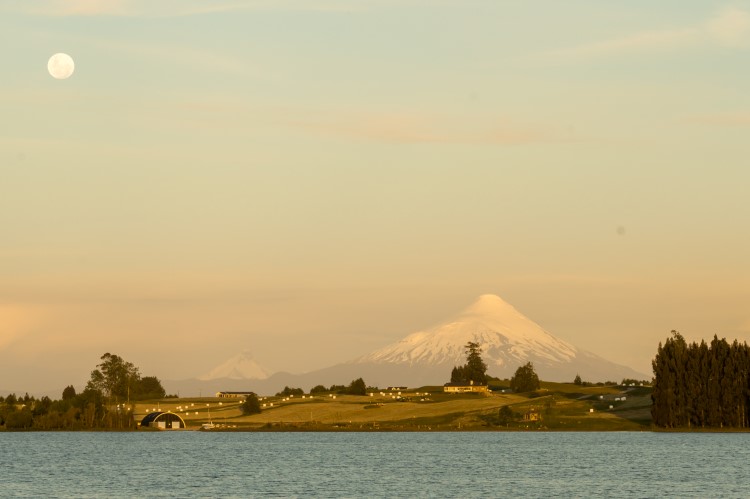
Don’t miss the Museo Pioneros Petrohué ($2,000 CLP/$3 USD), which is run by Petrohué Lodge and details the various “pioneers” who ventured to this once remote part of the Chilean lakes district across history, including explorers and German settlers.
If it’s not open (which it probably won’t be), nip into the Expeditions Office next door to ask to be allowed in.
Another popular attraction here is the Saltos de Petrohué ($4,000 CLP/$6 USD) where the raging, crystalline waters of the Río Petrohué churn over the rocks in a series of waterfalls, with a stunning backdrop of the Osorno volcano.
There are a handful of worthwhile trails to different viewpoints here but be warned: they are absolutely crammed throughout the season (even in October they were busy), so get here early doors. The entrance opens at 9am.
You can also get here by cycling. Lago Llanquihue has a cycling trail that extends from Puerto Varas north. You can hire bikes in Puerto Varas itself or, if you don’t want to have to drive back, Birds of Chile offers an e-biking tour, which can be combined with a half-day hike along the El Solitario trail through Valdivian temperate rainforest and volcanic ash.
Their guides have plenty of fascinating information about the flora and fauna of the region, which contains some of the final remaining tracts of Valdivian temperate rainforest on the planet.
Watersports are another part of Puerto Varas’ adventure offerings. You can also raft down the class II and IV rapids of the Río Petrohué with AlSur Expediciones , a local kayaking and rafting specialist operator.
Alternatively, book a sea kayaking tour out into the Chilean fjords for dramatic, volcano-studded landscapes (AlSur also specialize in epic, multi-day sea kayaking adventures into Pumalin National Park at the northern tip of the Carretera Austral – a must-do tour if you’re a keen kayaker!).
For a more relaxed afternoon, hop on a bus to Fruitillar (from the same place in Puerto Varas) to try locally baked kuchen , a German dessert brought, and cooked, by the German descendants who started this town.
There’s also a really good museum, the Museo Colonial Alemán , with its collection of artifacts brought over from Germany with the settlers and the history of founding the different towns around the lake.
There’s also Frutillar’s elegant, lakeside theatre, Teatro del Lago (they have performances from all across the globe and the building is renowned for its acoustics).
Where to stay in Puerto Varas: It’s definitely pricey, but the location right on the shores of Lago Llanquihue of AWA ($350 USD double) makes this a truly remarkable place to stay. Bedrooms are huge, while the restaurant serves up delicate dishes showcasing local ingredients – all with a serving of volcano views. I’ve stayed here twice now and it’s definitely my favorite hotel. Bear in mind, you’ll need a car – or to organize tours with a local operator – due to it being a 20-minute drive from Puerto Varas. FYI don’t do your laundry here. I almost wept when they gave me the $50 USD bill.
Where to stay on a budget in Puerto Varas: The wonderful Compass del Sur (camping $17,000 CLP/$21 USD, $24,000 CLP/$30 USD dorm, $54,000 CLP/$68 USD double), with its cozy sitting room with wood fire, breakfast room, and huge new kitchen, it’s my personal favorite when I’m in town. Their owners are very knowledgeable about activities to do in the local area and bedrooms are large, most of which now have their own private bathrooms after extensive renovations in 2017.
Days Seven to Ten: Pucón
Drive four hours or take a bus to Pucón (five hours, $17,500 CLP/$22 USD) from the bus terminal for Buses Jac in Puerto Varas.
Pucón is one of Chile’s best-known adventure destinations thanks to a range of highlights, including an active volcano that you can hike up, accessible national parks, and a whole host of other activities to get your pulse racing.
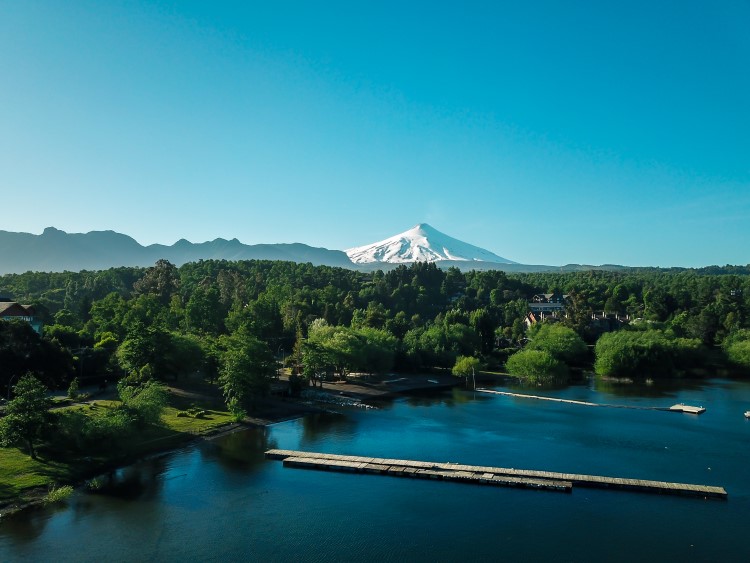
One of the best day trips you can take from Pucón is to nearby Parque Nacional Huerquehue , a one-hour bus ride or drive from the town with Buses Caburgua (they have their bus station at Uruguay 540).
There are five trails in the park, the most exciting being the Sendero Los Lagos , which goes past a pair of impressive waterfalls and ends with glorious views across the lakes at the top of the mountain.
The most challenging (and with the best vistas ) is Sendero San Sebastian , where you’ll see not one, not two but NINE volcanoes and 14 lakes from the top. Uh, yes please!
You can also stay within the park, either camping (there are various places, including Camping Olga ($18,000 CLP/$23 USD for two people, minimum two-night stay) or at the basic Cabañas Tinquilco ($50,000 CLP/$63 USD per night; minimum stay four nights between December and March.
It’s also impossible to visit Pucón without hiking up Volcán Villarrica , the snow-topped volcano that dominates the landscapes surrounding the town and is easily one of the top Chile attractions for visitors.
It’s a tough climb (you start around 6-7am from Pucón and are at the crater by lunchtime), but not one that requires technical expertise; you will need to go with a guide unless you have all of your own equipment (ice axes, crampons etc.). Bear in mind, this trail is packed with other tourists, so can feel like you’re queuing up the side of the mountain, rather than hiking it.
Patagonia Experience is the most recommended of all the agencies in the town. Expect to pay upwards of $80,000/$132 USD.
And don’t miss Termas Geometricas , some really beautiful hot springs located on the southern flanks of the volcano. Unless you’ve got a car, you’ll need to take a tour ($35,000/$58 USD) – but it’s worth the cost as you get to spend an afternoon relaxing in these stunning pools.
Where to stay in Pucón: Another personal favorite, if you’re willing to splash some cash, is the Maison Nomade B&B (double $90,000/$120 USD – but email them as they can offer cheaper prices), which is a few kilometers away from Pucón but has glorious views of the volcano from their huge garden, a swimming pool, beautiful modern rooms decorated with the handicrafts that Carolina, one of the owners, makes, plus a kitchen for guests. Alain, the other owner, also runs an orientation meeting to help you decide what you plan to do during your stay (and he knows the region like the back of his hand).
Where to stay on a budget in Pucón: Having visited this place as part of my research for Moon Chile , I can back up the general consensus that Chili Kiwi (dorm $20,000 CLP/$25 USD, $49,000 CLP/$67 USD hobbit hole) is one of the best hostels in Latin America. I stayed in both a hobbit hole and a treehouse (the hobbit hole was a bit roomier and had its own tiny private terrace, which was a nice touch), but they’ve genuinely thought of everything here: from their private bar to their three kitchens, huge lockers for people who’ve checked out but need somewhere to store their bags and just the enthusiasm of the owners and the staff who can answer practically any question you have about travel in the region (and beyond). It’s not a party hostel, but it does attract a youngish crowd.
Days Eleven to Thirteen: Parque Nacional Conguillio
From Pucón, start early for the three-hour drive to Parque Nacional Conguillio .
Alternatively, get an early bus to Temuco (one hour forty minutes) and catch the 10.30am Nar Bus to Parque Nacional Conguillio (leaves from the Terminal Rural de Temuco only in January and February, two and a half hours). It’ll drop you off right at the campsite and main ranger office for the park.
From here, there are a number of different day hikes that pass through the park’s incredible ancient scenery of thousand-year-old Araucania trees, black lava flows from looming Volcán Llaima, and gloriously blue lakes.
It’s one of my top three national parks in Chile (Patagonia National Park and Torres del Paine National Park take the other two spots) and one I highly, highly recommend.
Travel tip: The park is actually quieter and more beautiful to visit in November and December, when the weather’s warming up, or in April, to see the forests turn shades of autumn yellows and golds. The easiest way to get here in these months (or a faster means than taking the bus in high season) is hiring a car from the rental agencies in the arrivals terminal of Aeropuerto Araucanía (ZCO) in Temuco. You can get to the airport with a taxi (around $15,000 CLP/$21 USD from the bus terminal in Temuco).
You can get hold of maps from the ranger station here. The bus returns back to Temuco at 1pm (soon after it arrives).
Out of season, your only options are to take a taxi from nearby Curacuatin or rent a car in Temuco .
There’s a small shop at the campsite, but otherwise, you’ll need to bring food with you (unless staying at La Baita , who can prepare meals for you).
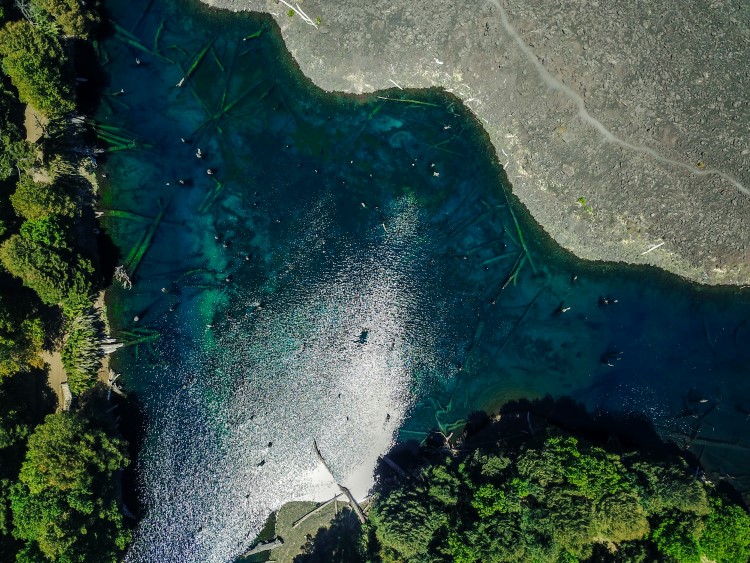
Where to stay in Parque Nacional Conguillio: There are a number of campsites run by Sendas Conguillio . The best of these, if you’re traveling in a pair or alone, is Camping El Estero ($6,500 CLP/$11 USD pp), which you cannot book (but there is normally space). If you’ve got a vehicle, La Baita (double $90,000 CLP/$150 USD) is spectacular, with stylish, wooden bedrooms, cozy communal living room with wood fire, and hot tubs. Outside of the summer, the prices are cheaper (but they’re closed in June).
Drive back to Temuco to return the car or hop the bus back to the city. Fly from Temuco airport to Santiago or take the bus overnight (eight hours).
Chile itinerary for two weeks of travel : The highlights
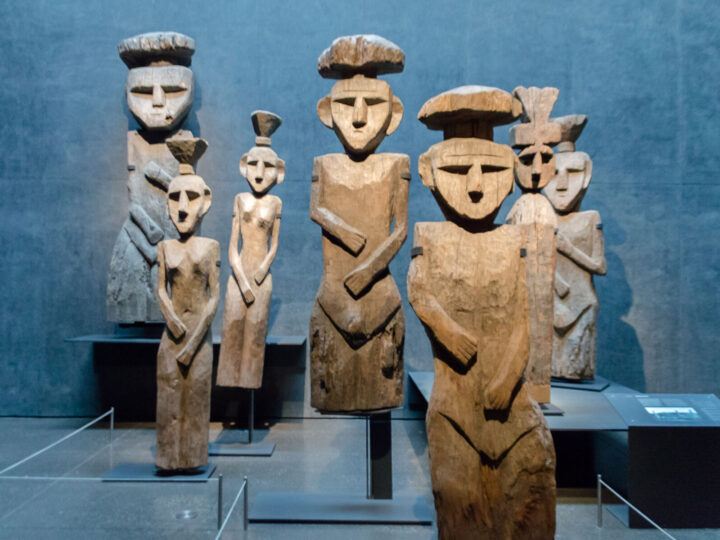
Days Two and Three: Valparaíso and the Casablanca Valley
Either hire a car or hop on a bus from the Terminal Alameda (Av. Alameda 3750) and the Terminal San Borja (San Borja 235) in the city center to Valparaíso (two hours, $3,000 CLP/$4 USD), a historic harbor city set across 42 hills and home to a wealth of street art.
This includes La Sebastiana , the beautiful ship-inspired house of Nobel Prize-winning Chilean poet, Pablo Neruda (well, one of his three), elderly acensores (which are also UNESCO heritage monuments), and a colorful skyline of brightly-painted houses, cobbled streets, and vivid graffiti.
If visiting over the summer (be warned: it gets rammed full of Chilean holidaymakers), be sure to hop on a local micro ( bus) and head around the coast towards Viña del Mar where the best beaches are.
The easiest to access is Playa Caleta Abarca as it’s right on the main road that passes through the city, while nearby Reñaca also has a pretty beach. Alternatively, you can drive further north to the pretty beaches of surf-town Maitencillo , secluded and beautiful Cachagua , or exclusive Zapallar .
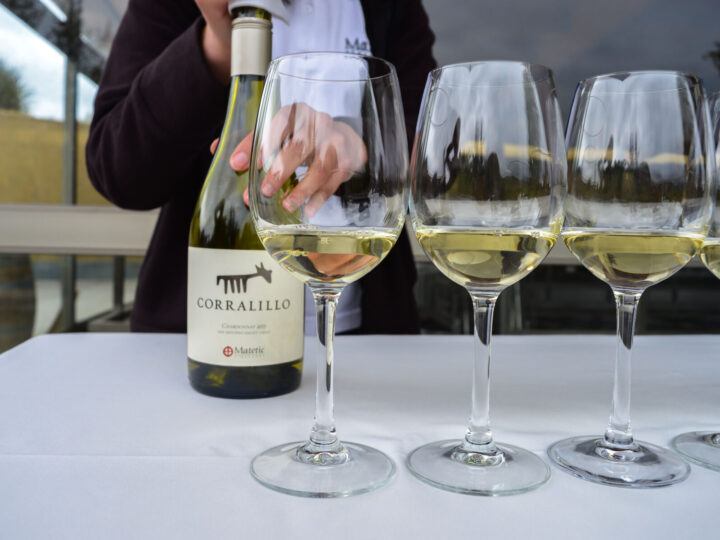
The following day, head out to the Casablanca Valley , Chile’s premier white wine-producing region. A bus to Casablanca and then a taxi can take you around some of the best wineries, including Casas del Bosque (which has a brilliant restaurant), Viña Mar (which is known for its sparkling wines, Bodegas RE (which produces unusual blends), and Emiliana (an organic, sustainable winery).
Alternatively, drive south via Isla Negra (the prettiest of poet Pablo Neruda’s houses) to reach the Valle de San Antonio , where first-rate wineries offer outstanding wines and stunningly-located accommodations.
The best are Matetic and Casa Marin , the latter of which produces delicious sauvignon gris.
Where to stay in Valparaíso/nearby: Winebox (Baquedano 763, $99,000 CLP/$125 USD double) is a truly unique hotel, built entirely from 25 recycled shipping containers. What’s more, they have an urban winery in the basement and a wine bar cum restaurant on the roof (which is open to the public). It’s actually on Cerro Mariposa, so you’ll need to take local colectivos (shared taxis) or taxis to get into the centre at night. Alternatively, stay in La Casona ($774 USD double) Matetic winery’s stylish 10-bed hotel, set within the vineyard and with a welcome swimming pool or at the more affordable Bungalow Miramar ($167 USD one-bedroom bungalow) that has sweeping views across the vineyards of equally brilliant Casa Marin.
Days Four to Seven: Rapa Nui (Easter Island)
Head back to Comodoro Arturo Merino Benítez International Airport (SCL) and take a six-hour flight west across the Pacific Ocean to Rapa Nui (Easter Island).
Having captivated archaeologists and tourists alike for decades, Rapa Nui – while still being part of Chile – lives and breaths the Polynesian culture of its inhabitants: the Rapanui.
After landing on the runway of Matavari International Airport (IPC) , take a transfer with your hotel into Hanga Roa, the island’s only town and the location of most lodgings.
Spend the afternoon snorkeling off Playa Pea on the lookout for Green Pacific, leatherback, and hawksbill turtles, before catching the sunset at Ahu Tahai, where various ceremonial platforms known as ahu play host to the angular stone heads (moai) for which the island is famed.
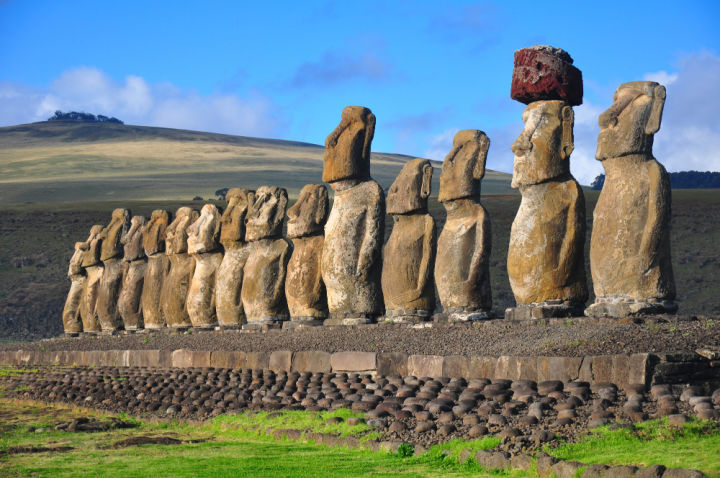
The following day, head out to Parque Nacional Rapa Nui , where the majority of the moai are located. New rules mean you’ll need a guide, who can show you around key locations across the island.
Don’t miss Rano Raraku , the volcanic crater and quarry where the moai were carved, or nearby Ahu Tongariki . With 15 moai statues, it’s the largest of the platforms and ideal for sunrise.
Read our guide to visiting Rapa Nui for more detailed information about getting to the island, as well as recommendations for what to do and where to stay , and the best time to visit Easter Island .
Where to stay in Rapa Nui: The stunning sea views from certain suites and bungalows make Hotel Boutique La Perouse ($210 USD suite; $288 bungalow) an excellent choice for accommodation on Easter Island. Situated right at the heart of Hanga Roa, but with a tranquil setting, this is a great place to relax after a day of touring the island, while a delicious breakfast will ensure you’ve got the fuel you need.
Where to stay on a budget in Rapa Nui: If price is your number one factor when it comes to finding accommodation on Easter Island then look no further than Camping y Hostal Tipanie Moana ($57 USD double room with shared bathroom, $14 USD camping). Offering private rooms (some with shared bathrooms), it’s hard to quibble over the price here, which grants you clean and spacious bedrooms – some with mini-fridges – and a sociable atmosphere among the other guests staying here.
Days Eight to Nine: Punta Arenas
Fly back to Santiago’s Comodoro Arturo Merino Benítez International Airport (SCL) and then hop on a flight to Punta Arenas, a three-hour flight south.
The gateway to Patagonia, Punta Arenas is where the first colonizers landed in southern Chilean Patagonia and is home to some of the best wildlife-watching opportunities.
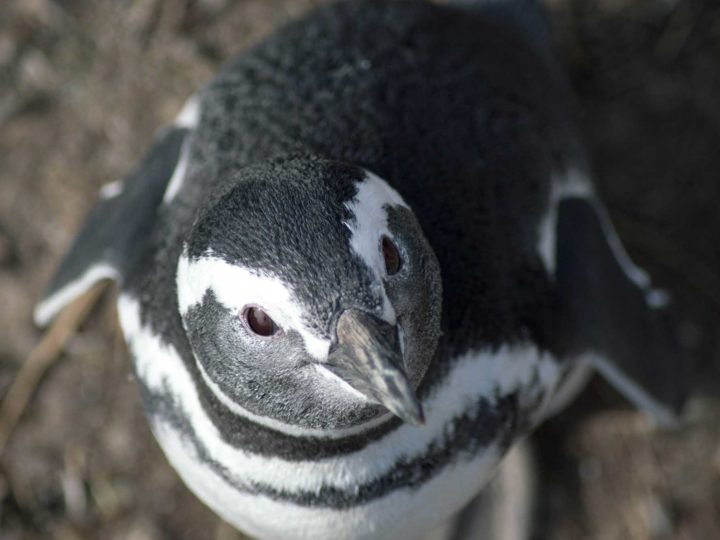
You’ll have time for at least one tour. Head out to Isla Magdalena for a half-day visit to the 120,000-strong Magallenic penguin colony that resides on this island.
Alternatively, take a tour with Solo Expediciones to Parque Marino Francisco Coloane (Francisco Coloane Marine Park) to catch a glimpse of the many species of whales that come here to breed, including humpbacks and sei whales.
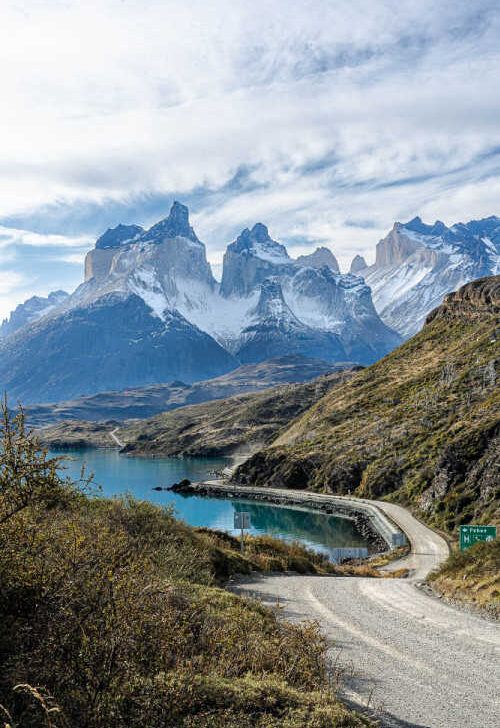
Want a custom-made Chile itinerary, but without the effort of planning it?
Get it planned by an expert (me!) with my travel itinerary planning service ; you’ll give me an overview of your ideal once-in-a-lifetime trip to Chile and/or Patagonia, and I’ll put together a custom itinerary just for you using my expert knowledge of the destination.
Alternatively, if you’re looking for a local operator to plan and book your trip, I recommend our trusted partner EcoChile Travel. They design and book tours throughout the country, such as this 12-day highlights of Southern Patagonia itinerary – and offer Worldly Adventurer readers a 5% discount on their services!
Book here to claim your discount.
At the end of your second day, hop on a public bus to Puerto Natales (three hours).
Where to stay in Punta Arenas: Easily the smartest choice in Punta Arenas is the luxurious La Yegua Loca ($160 USD double), where antique wooden furniture rubs shoulders with superb views of the Strait of Magellan. Don’t miss the restaurant on the ground floor, which specialises in local specialties such as king crab.
Where to stay on a budget in Punta Arenas: Budget digs don’t get much better than the family-run Hostal Aventura Austral ($57 USD double), which has small but comfortable rooms and brilliant hosts.
Days Ten to Fourteen: Torres del Paine National Park
Unless you’re planning on hiking the W or the O Circuit , the best way to explore Torres del Paine National Park is with a rental car .
From Puerto Natales, head north along Ruta 9 and then northwest along the Y-290 to enter Torres del Paine National Park from its southern entrance, where you’ll get the best views of the Los Cuernos mountains that dominate the park.
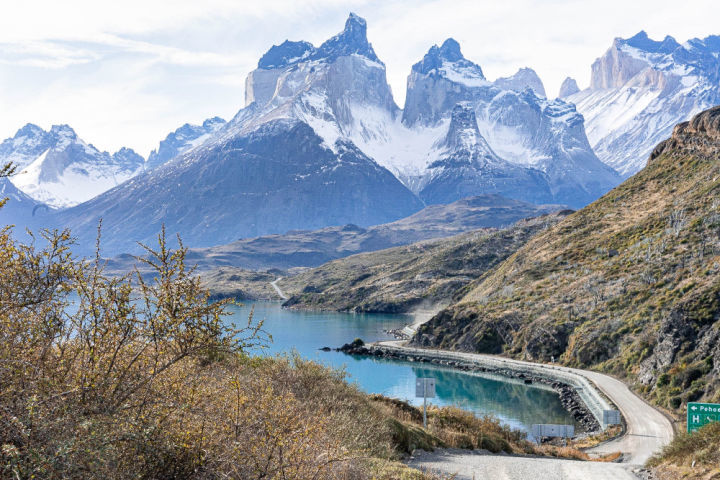
Over the next few days, you’ve got time to hike the park’s ubiquitous route up to Mirador Las Torres where you’ll stand beneath the three sky-spearing shards of granite after which the park is named.
Day hikes and shorter routes to viewpoints abound in the national park, with the steep climb up to Mirador Ferrier for 180-degree views across the park and the short meander along Sendero Mirador Cuernos for dazzling views of Los Cuernos among the best.
Read our guide to day hikes in Torres del Paine National Park for detailed route information.
There’s plenty more to do in Torres del Paine, including tracking pumas , with the park believed to be home to the highest concentration of these big cats in the world.
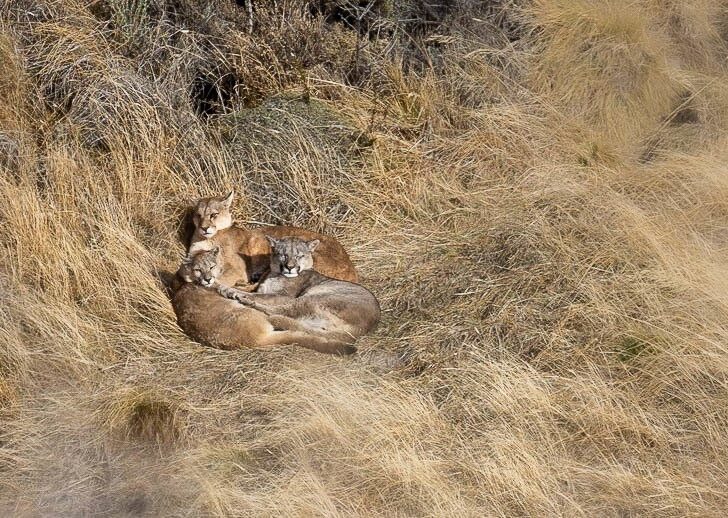
The best way is on a two-day tour with Chile Nativo (use the referral code “Worldly Adventurer” for a 5% discount), which takes you along some of the paths most frequented by the cats and has a close to 100% success rate for seeing them.
Return to Puerto Natales and then fly back to Santiago.
Where to stay in Torres del Paine National Park: With its cluster of 20 deluxe yurts, Patagonia Camp ($2,160 USD double all-inclusive for two nights) sits pretty on the southern shore of Lago Toro as a top luxury accommodation option just 15 kilometres from the park entrance. There’s no TV or internet connection in the rooms, but who needs WIFI when you’ve got a private terrace with panoramic views, and even a jacuzzi in the suites?
Where to stay in Torres del Paine National Park on a budget: Restaurant costs within Torres del Paine have skyrocketed with the park’s popularity. Stock up on food in Puerto Natales and head to Cabañas Lago Tyndall ($110,000 CLP ($160 USD) four-person cabin), which is situated on a bend in the Río Serrano and a short drive from the southern entrance to the park.
Our complete guide to what to do in Torres del Paine National Park is packed with plenty more information about how to visit this incredible place, while our detailed Patagonia itineraries contain recommendations for exploring Southern Patagonia, plus how to combine a trip to Torres del Paine National Park with Argentine Patagonia, including the Perito Moreno glacier and hiking capital, El Chaltén.
How to amend this two-week itinerary
Rather than heading to Rapa Nui, you could spend three days in the Atacama Desert. San Pedro de Atacama is the region’s main hub and jumping-off point for Mars-like scenery and wildlife-packed protected areas, such as the Reserva Nacional Los Flamencos.
We’ve got a full guide to what to do in San Pedro de Atacama , while, if you want to avoid the hassle of organizing your trip, EcoChile Travel can help you plan a four-day trip to the region , including visits to local indigenous communities to learn more about the unique culture of the region. Mention Worldly Adventurer for a 5% discount on the tour.
Itinerary for one or two weeks in Patagonia (Chilean and Argentine)
I’ve written a whole guide to where to go and what to do in Patagonia, so head over to this one- and two-week Patagonia itinerary or these three- and four-week itineraries .
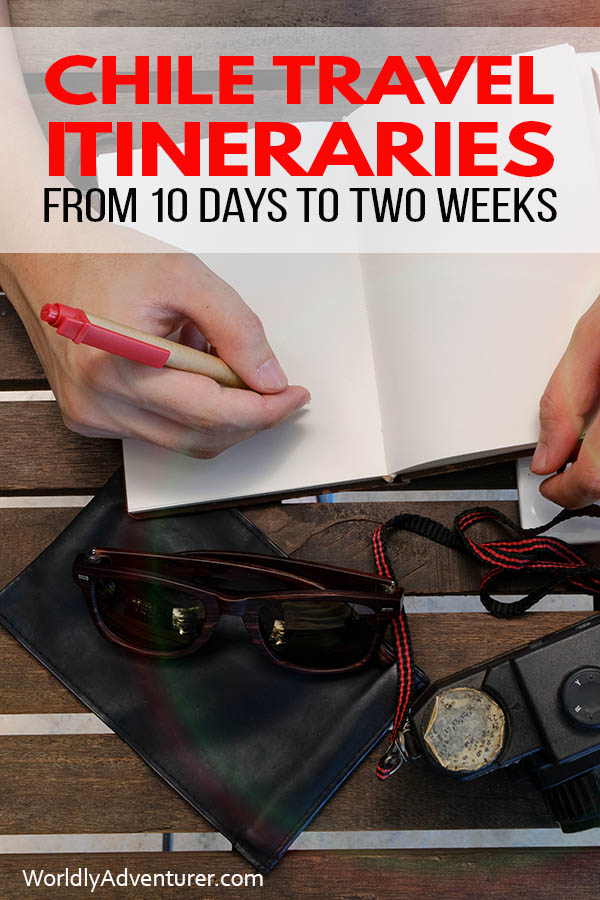
Tuesday 23rd of July 2019
Great article. I love this piece of writing. Thanks
Thursday 13th of June 2019
Hello Steph,
Thank you for your detail guide and the itineraries of 10 and 14 days. My husband and I are planning to go to Chile 10/11 days on late October or early November. I had planned to go to Ecuador but considering the high altitude that we probably couldn't stand.
There are so many blogs on Pinterest just telling me how great the attractions there but very few itineraries provided. So happy that I found yours
Here I have a few questions for the 10 days itinerary: 1) Any tours around the hostels to the attractions @ San Pedro de Atacama (my husband hates driving on vacation and I don't have a license)? 2) any other suggestions for the day 8 to 9 if not going to the vineyard? Thank you in advance!
Steph Dyson
Friday 21st of June 2019
Hi Sarah, yes you can find tour companies for destinations around San Pedro de Atacama on the main drag in the town - there are loads of them! Try and negotiate several tours with one company as this will help you get a discount. Whipala Expedition and 123 Andes Chile Conectado (both have websites) are recommended companies. There are plenty of other destinations to visit in San Pedro. Check out this article for more ideas! Enjoy your trip :)
- South America
- The Ultimate Road Trip Guide...
The Ultimate Road Trip Guide to Chile

This long, thin country stretches 2,670 miles (4,300 kilometers) north to south, with the Pacific Coast to the west, the Andes mountain range to the east, and many jaw-dropping landscapes in between. The country’s diverse landscapes span from the hot, arid Atacama Desert that is the driest non-polar desert in the world, to the cool, glaciar-adorned fjords and temperate rainforests of Patagonia, which all makes for the most epic road trips.
San pedro de atacama: 2–5 days.
Begin the epic journey through Chile in the arid plains of San Pedro Atacama, home to the dramatic landscapes of Valle de la Luna. Geysers spurt out boiling water, salt flats stretch out for miles, volcanoes bubble away and hot springs lure you in. Spoil yourself at the Tierra Atacama Hotel & Spa , where you can watch the sun descend over the desert from the pool. As you drive south through the desert, observe the Mano del Desierto – a 36-foot sculpture of a hand emerging out of the desert – and an abundance of copper mines. As the desert rolls on and on, you may observe the loneliness of the never ending landscapes, as seen in the Chilean film, De Jueves a Domingo.

Valle de Elqui: 2–4 days
Along Route 5 from Antofagasta to La Serena is the Pan de Azúcar National Park and Punta de Choros, where colonies of Humboldt penguins can be spotted, and with dolphins swimming off the coast. Notice how the landscape transforms into luscious green valleys the nearer you are to Valle de Elqui, which is east of La Serena, a large city by the coast that has beautiful colonial and neo-colonial architecture. Fall asleep under the celestial sky at the Elqui Domos – these eco domes and observatory rooms are perfect for stargazing, romantics and astronomy enthusiasts, who can also visit the Tololo Observatory . It wouldn’t be a trip to “Pisco Elqui,” so-called for its pisco distilleries, without a tour and tasting at Destilería Pisco Mistral .

Santiago: 2–7 days
From the vast open terrain to the hubbub of commercial and lively Santiago. Stay at the chic The Singular , located in the romantic Barrio Lastarria. Discover the quaint neighborhood that boasts numerous cafés and a wonderful array of popular restaurants and bars. From Santiago, you can take a jaunt up the Andes and spend the morning skiing, followed by an afternoon by the coast delving into the colorful street art of Valparaíso . Taste some of the finest Cabernet Sauvignon and Carmenere in one of the many vineyards in the Maipo Valley and go hiking in Cajón del Maipo.

Valdivia & Pucon: 2–5 days
Continue your journey down south towards Valdivia. Surfers should check the swell in the surf capital, Pichilemu, while skiers and adventurists should head to Chillán. Valdivia is best known for the Kunstmann Brewery , the Chilean favorite beer that is produced there. From here, drive to Pucón, where you can climb the Villarrica Volcano and trek through Huerquehue National Park and Santuario el Cani. After a long day, soothe your aching muscles in the natural hot waters of Termas Geometricas , and get an early night at Hotel Antumalal in preparation for another day filled with activities.

Chiloé & The Carretera Austral: 2–5 days
Stop off at Castro, Chiloé’s capital, where colorful houses on stilts line the waterfront, before delving into the dense forests of Chiloé National Park. Next, is the scenic drive through Northern Patagonia’s Aysén region. The Carretera Austral Highway is the 775-mile (1,250-kilometer) Route 7 from Puerto Montt to Villa O’Higgins. Chasing the Chilean coastline, meandering through fjords, narrow valleys, dipping in and out of fast flowing rivers and gawping at the dramatic waterfalls. This road is extremely romantic and photo-perfect as well as peaceful, but at times can be lonely.

Torres del Paine: 2–6 days
Finishing your road trip in one of the most beautiful places on Earth, the purity and nature of Torres del Paine is outstanding. Spot guanacos strolling across the roads, hawks circling above you and the fauna growing to its heart’s content. The Lago Grey Glacier is magnificent and sprawls uncontrollably out over the grey lake, while the electric blue of Lago Pehoé catches the eye, rather postcard perfect. The climax is the towering peaks of the Torres del Paine, which you can see from the Tierra Patagonia Hotel & Spa .

Become a Culture Tripper!
Sign up to our newsletter to save up to $1,200 on our unique trips..
See privacy policy .

The Best Destinations to Visit in Chile

The 10 Coolest Neighborhoods in Santiago, Chile

The Best Hotels to Book in Chile for Views

The Best Boutique Hotels in Valparaíso, Chile

The 23 Best Things to See and Do in Chile

The 10 Most Beautiful Towns In Chile

Top 17 Unusual Things to See and Do in Santiago, Chile

The Best Hotels to Book in Chile for Every Traveler

The Best Hotels to Book in Puerto Natales, Chile

The 7 Best Places to See Penguins in Chile

The Most Romantic Honeymoon Destinations in Chile

11 Epic Reasons Why You Need to Visit the Chilean Fjords At Least Once Before You Die
Culture Trip Summer Sale
Save up to $1,200 on our unique small-group trips! Limited spots.

- Post ID: 1252195
- Sponsored? No
- View Payload

My 1-Month Chile Travel Itinerary: Visiting Northern & Central Chile
One month in Chile sounds like a long time, but when you’re talking about a country that is 4,300 kilometres in length, that’s a whole lot of ground to cover!
When we were first planning our trip to Chile I naively thought a month would be plenty of time to travel the full length of the country. I really wanted to make it all the way down to Patagonia (and beyond) and looking at a map it seemed doable; in reality, one month was barely enough time to cover half the length of the country.

Our travels primarily focused on Northern and Central Chile with a quick hop over to Easter Island , and while I may not have gotten to see the majestic mountain ranges further south, I feel like I got a pretty good taste of the country. For anyone planning a similar trip, here’s a breakdown of my month-long Chile travel itinerary :
// 2 days //
We crossed over to Arica from Bolivia by bus and used our 2 short days in the city to catch up on rest and enjoy the warm temperatures. After a few weeks braving the altitude with cups of coca tea and woollen alpaca sweaters, we were ready to enjoy the ocean breeze and bask in the sunshine. Since Arica sits right on the shores of the Pacific Ocean, this proved to be the perfect place to unwind.
As you can probably tell from the lack of photos from Arica, we weren’t feeling particularly ambitious in terms of sightseeing, but if you are up for some exploring, you can climb El Morro de Arica , a hill that looms 110 meters over the city; visit Iglesia San Marcos , which was designed by Gustave Eiffel (yes, the same one responsible for the Eiffel Tower); or stop by Museo de Sitio Colon 10 , which is a small museum featuring 32 mummies that were excavated on site.
Another alternative is getting a taxi to drive you out to Museo Arqueologico San Miguel de Azapa , which is located 12 kilometres outside of Arica. This museum is home to some of the oldest mummies in the world!
We filled our brief visit to the city with lots of walks and foodie outings, and coincidentally ended up discovering one of the best restaurants we have ever eaten at! If you find yourself in Arica, you have to go to El Chalan . They specialize in Peruvian food, and after eating dinner here on my first night, I ended up coming back again and again. Their shrimp risotto is to die for – so rich and creamy – and I also loved their ceviche which was made to perfection and transported me right back to Lima .

San Pedro de Atacama
// 4 days //
From there it was onwards to the Atacama Desert. The town of San Pedro is quite sleepy and there isn’t a whole lot to do here aside from enjoying the cafes , people watching in the square, and visiting the adobe church. That being said, you don’t come to San Pedro to spend your time in the town! This place is meant to be used as a base while you enjoy some really cool day trips around the desert.
Some of our favourite day trips included a sunrise tour of El Tatio Geysers , complete with a soak in the hot springs and a delicious pancake breakfast; a sunset tour of The Valley of the Moon , featuring breathtaking landscapes set aglow by the setting sun; and Sam also did a full day tour of the Altiplanic Lagoons , where he got to see white and pink flamingoes.
If you luck out with clear skies you can also consider a Stargazing Tour , where you get to spot stars, planets, and constellations using fixed telescopes. Just keep in mind that these tours are weather dependant and they tend to fill up fast.

// 7 days //
We passed through Santiago a total of 3 times on our travels through Chile – mostly to catch buses and planes. Our time in the city amounted to about a week , but in retrospect, I’d argue you can cover most of Santiago in 3-4 solid days.
First up, let’s start with the views. Santiago boasts the Andes in the horizon (and while the air can be quite smoggy!) you can still get some pretty cool panoramic views of the mountain range from either Sky Costanera or by riding the funicular to the top of Cerro San Cristobal .
I would also recommend visiting Cerro Santa Lucia , an ancient volcano turned park in the heart of the city. The hill is home to Neptune’s Fountain, Hidalgo’s Castle, and plenty of spiralling staircases and winding trails. Another option for a green escape in the heart of the city is Parque Forestal , an urban park that runs along the Mapocho River.
For the art lovers , there’s no shortage of museums including the National Museum of Fine Arts and the Museum of Contemporary Art , which are back to back. Or if it’s history you crave, you can choose from the National History Museum , the Museum of Pre-Columbian Art , or the Museum of Memory and Human Rights .
As for food experiences , one of our favourite dishes we tried in Santiago was the chorrillana. To me, this is the Chilean version of a Canadian gourmet poutine. Just picture a heaping plate of french fries topped off with fried onions, sausage, shaved beef, olives, eggs and just about anything you can imagine.

Visiting Valparaiso felt like floating through a rainbow. This has got to be one of the most colourful cities in the world!
Since Valparaiso is all about the street art, we started our visit by joining the Free Walking Tour to help us get familiar with the city . The tour mainly focused on Cerro Concepción and Cerro Alegre , where we spotted some really cool murals.
No visit to a port city would have been complete without a tour of the harbour, so we also managed to squeeze that into the schedule. We lucked out with a few unusually sunny days, so we decided to do the 30 minute tour that departs from Muelle Prat . The cost was 3,000 Chilean Pesos and we got to see giant container ships, tug boats, and navy vessels, while the guide talked about the port’s history.
Another cool place to check out in Valparaiso is La Sebastiana . This was the home of Pablo Neruda, Chile’s most famed poet and writer, and it has a pretty eclectic decor. La Sebastiana is 5 stories high and it’s quite artsy and eccentric inside. Upon admission you’ll get a headset, so make sure you turn it on to hear all about Neruda’s dress-up dinner parties where he would often go through several costume changes to stump his already inebriated guests.
Viña del Mar
// 1 day //
Since Viña del Mar is only 8 kilometres away from Valparaiso, we hopped on the metro and took the 15 minute ride out to the popular seaside resort.
We opted for a super relaxed day, so instead of ticking off attractions, we just walked along the Costanera with the sea breeze whipping in our hair, enjoyed the cool sand at the beach, and then grabbed seafood for lunch. Once again, you can probably tell we weren’t feeling particularly ambitious by the lack of photos here!
If you come with more time, you may also want to visit Wulff Castle , which is perched right by the sea; go for a walk through Parque Quinta Vergara , one of the many parks that gives Viña del Mar its status as a Garden City; or spend an afternoon at the Museum of Archaeology and History Francis Fonck , which boasts a moai and an extensive collection of artifacts from Easter Island.
But now let’s talk about music; every year during the third week of February, Viña del Mar hosts the largest and best known music festival in all of Latin America: Festival Internacional de la Canción de Viña del Mar . They’ve had singers like Shakira, Ricky Martin, Chayanne, Marc Anthony, and Carlos Santana grace the stage, so if you’re into Latin music it might be worth planning your visit to coincide with this event (just keep in mind you’ll have to book things really far in advance!)

Easter Island
And now for one of the absolute highlights, let’s talk about the magical place that is Easter Island. I’ve already written about how you can travel Easter Island on a budget and I’m working on another massive post that breaks down my one week itinerary, but in the meantime, here’s a look at what we got up to.
Aside from seeing moai, I wanted to climb volcanoes (duh!), so on our first day on the island we walked to the outskirts of town and found the trail that leads up to Rano Kau . This extinct volcano sits on the southern tip of the island and it’s one of the coolest things I have ever seen. While you can’t set foot inside the crater – that’s a protected area – you can get some amazing views of the wetlands. Rano Kau has its own microclimate and its own vegetation which differs from the rest of the island. From here, you can continue on to Orongo Village , a stone village and ceremonial centre which is just a bit further up the road.
One of the best decisions we made on Easter Island was renting a car for a few days. This gave us the mobility and flexibility to cruise around the island wherever and whenever we wanted. We drove out to Rano Roraku to see the moai quarry, we went to Ahu Tongariki to watch the sunrise over the 15 moai, we visited Ahu Akivi to see the only moai on the island that look out to sea, we dipped our toes in Anakena Beach , and so much more.
Add in a few travel days to get from place to place, and just like that one month was gone! We may not have made it all the way down to Patagonia like I initially wanted to, but I have to admit that our month was full of surprises. Also, this gives me an excuse to come back and explore Southern Chile another time – hopefully with more than a month to spare!
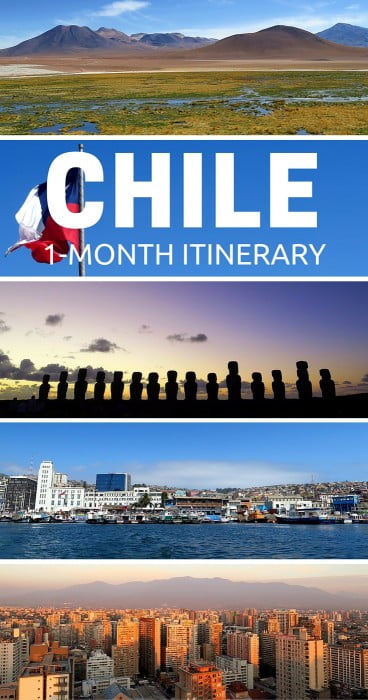
Have you travelled in Chile? What are some destinations travellers shouldn’t miss?
13 Comments
Chile looks fabulous in your pictures! I’d like to visit Santiago and Easter Island. Love the gorgeous colors captured.
Thanks, Renuka! The landscapes were a dream to photograph. 🙂
What a trip… That part of the world that is so mysterious and unknown to me… Thanks for making me dreaming while I’m in the other part of the world!! 🙂
It’s quite the opposite of bustling Hong Kong, that’s for sure! I hope you get to visit sometime, Marie.
I lived in Chile for 3 years there are so many places to see especially in the South if you like nature and hiking. Sounds like you got to see a lot though.
That’s cool! Any places you’d recommend in particular? I’d love to do some of the hiking loops around Patagonia and also make it all the way down to Punta Arenas.
What a cool trip! I feel like not enough people make it a point to visit Chile. Love the photos!
I hear ya! Aside from Patagonia, travel in the rest of the country seems quite underrated.
The Maipo Valley is a really special place – mostly because of the great wineries to tour but there’s some spectacular scenery as well. And it’s really close to Santiago!
Thanks for the tip! It sounds like the ideal day trip.
Yes, Chile is a lot bigger than it looks! There really is a lot to do. Sounds like you have a great itinerary planned out. Can’t wait to read about your adventure 🙂
Being a Chilean and from Santiago specially, all I can say is… great pictures!! I loved your post. You should’ve definitely have gone to a winery as they are top class in the world. Maybe for the next time?
Hello! Your trip looks amazing! I’ve been trying to plan a month long trip to Chile as well, but am puzzled on how much to save for the trip. Do you mind sharing how much you spent for the month?
Your email address will not be published. Required fields are marked *
- Search Please fill out this field.
- Newsletters
- Destinations
- Central & South America
Your Trip to Chile: The Complete Guide
- Best Time to Visit
- Weather & Climate
- Airports in Chile
- Best Santiago Hotels
- One-Week Itinerary for Chile
- Best Places to Visit in Chile
- Beach Destinations
- Top National Parks
- Guide to Chilean Patagonia
- Guide to Valparaiso
- Guide to Vina del Mar
- Best Wineries in Chile
- Things to Do in Chile
- Things to Do in Santiago
- Must-Try Food
South America’s skinniest country spans a volcano-fringed desert, fertile wine valleys, pristine fjords, and glacier stippled mountain ranges making it the ultimate destination for adventure travelers. This guide to Chile is a one-stop-shop for planning, covering everything from must-see places, tantalizing local cuisine, and money-saving tips to help you squeeze the most out of your trip.
Planning Your Trip
- Best Time to Visit: Most trips are timed to make the most of fine weather in Patagonia in the south, with the austral spring, summer, and early autumn (October through April) good months for clear, warm days.
- Language: Chileans speak Spanish but thanks to their penchant for slang and dropping constants at the end of words, bringing a phrasebook is recommended even for advanced Spanish speakers. Most tourist-fronting businesses have good English, as do younger Chileans residing in Santiago.
- Currency: The Chilean peso ($ CLP) is the official currency of Chile.
- Getting Around: Chile has an extensive infrastructure of increasingly low-cost flights that connect most cities across the country and, if booked in advance, are often significantly cheaper than buses. However, most inter-city flights are indirect and pass through the capital, so expect to spend plenty of time in Santiago’s domestic terminal. For local travel, affordable and comfortable bus services cater to short and overnight journeys, while Santiago’s excellent Metro/subway system is an easy and cheap means of exploring the capital. Hiring a rental car is an excellent option in Chile, particularly for exploring Patagonia.
- Travel Tip: Chile is a vast country packed with far more than you can see in a short period of time. We know it’s tempting to cram a whole month’s worth of activities into a far shorter time period, but we strongly recommend stripping your trip down to just a small number of destinations. You’ll spend far fewer hours on flights or overnight buses and come away wowed by the deep and unforgettable moments you’ve had the time and space to experience.
Things to Do
Chile’s remarkable diversity of landscapes and culture means you’re guaranteed to find plenty to fill an action-packed vacation. The north is home to the Atacama Desert, with its world-class stargazing and otherworldly landscapes; Santiago brims with fine museums, trendy new restaurants, and a burgeoning street art scene; the Central Valley is a place of rolling vineyards and classy boutique hotels; while the Lakes region is volcano country, where the intrepid can summit a fiery giant. In the far south, Patagonia is a place of pristine national parks and outdoor adventure, while west across the Pacific brings you to Rapa Nui (Easter Island), a UNESCO World Heritage site dotted with statues of long-lost ancestors.
On a first trip to Chile, don’t miss the following:
- Spend a day exploring coastal Valparaíso ’s tumbling, street art daubed hills, dining on freshly-caught fish in its trendy eateries, and learning about the life and loves of the much-adored Chilean Nobel Prize-winning poet, Pablo Neruda.
- Strap on your hiking boots and discover Patagonia’s most striking wildernesses in Torres del Paine National Park . Clamber up to glassy lagoons or paddle a kayak across icy waters filled with bobbing icebergs to admire vast glaciers. Head out by boat to visit chattering Magellanic penguin colonies or learn how to be a cowboy at a sheep ranch before dining on local specialties of spit-roasted lamb and king crab.
- To appreciate a completely different side to Chile, take the six-hour flight across the Pacific to Rapa Nui—a Polynesian island home to almost 900 moai (stone statues) —to tour these sacred sites, dive into warm, crystalline waters, and sample tuna ceviche.
Get more inspiration with our guide to the top destinations to visit in Chile , the best things to do in Chile , and the best things to do in Santiago .
What to Eat and Drink
Chile might not be known for its dining scene, but prepare to be surprised. This is a country with a tradition of asado (barbecue) and expertly-cooked seafood, while growing indigenous culinary influences promise truly inventive flavors.
Santiago is a hub of increasingly fine dining, with a handful of restaurants that showcase unusual Chilean ingredients now on the world’s best restaurant lists. But it’s not all fancy: traditional markets and no-frills food trucks in the capital are great places for classic Chilean meat and fish stews and savory empanadas. In the south, Chiloé Island is proud of its traditional seafood dishes including curanto (a seafood stew cooked underground), while Patagonia lays claim to juicy lamb roasted for hours over an open fire.
Chile is home to two main alcoholic drinks: wine and pisco. A large proportion of the Central Valley is stippled with vineyards, with Colchagua and Casablanca the most sought after, for their red carménère and white sauvignon blancs respectively, and both offering tours, tastings, and even top dollar dining. Further north in the Elqui Valley, moscatel grapes are fermented to become the grape brandy, pisco, which is best sampled in the zingy cocktail, pisco sour, which any self-respecting bar across the country can whip up.
Learn more about what to eat with our list of must-try Chilean foods .
Where to Stay
Chilean accommodations run the whole gamut of basic campsites to exclusive five-star hotels, with plenty of family-run B&Bs, boutique hotels, and rental cabins in between.
Santiago is home to a wealth of affordable B&Bs and small hotels located right in the heart of the tourist districts of Lastarria, Bellavista, and Italia, granting quick access to the metro, as well as excellent restaurants, bars, and shops on your doorsteps. In more rural parts and in national parks across the country you'll find increasingly stylish chalet-style cabins. They are a hallmark of Chile and a great option for self-catering, with many built to include hot tubs. In Chiloé, you’ll want to stay in an oceanside palafito (a traditional fisherman’s dwelling on stilts) for the best sea views.
In the south, long-distance treks through isolated national parks mean lodgings in campsites or hostel-style accommodation, although many parks are now home to at least one five-star hotel, generally tucked deep into the wilderness and offering outstanding, lavish accommodation. In more remote parts of Patagonia, sheep and cattle ranches, many of which are still operational, also provide comfortable, sometimes rustic lodgings—all with the opportunity to enjoy a traditional Patagonian barbecue feast.
Getting There
Santiago’s one international airport, Comodoro Arturo Merino Benítez, is the hub for all flights into the country with a record-setting 24.6 million people passing through the airport in 2019. Most U.S. airports have connections with Santiago, with many offering direct flights in the summer months. These include American Airlines, Delta, and United Airlines.
If flying from within South America, budget companies including Sky Airlines and Jet Smart, as well as regional mainstay LATAM, provide the most frequent connections from hubs such as Lima in Peru and Buenos Aires in Argentina.
Rickety buses also provide an overland connection to Chile from Peru, Bolivia, and Argentina, although adventure cruise ships from Ushuaia to Punta Arenas in Patagonia in the south are a far more daring means of crossing the border.
For domestic travel, aim for budget carriers Jet Smart and Sky Airlines where possible and plan to book at least a few months in advance for the cheapest fares. If you do, you’ll often find that three-hour flights between cities are the same price, if not cheaper, than 12-hour bus journeys.
Culture and Customs
- Chileans greet family, friends, and visitors alike with a kiss on the right cheek (for women greeting women and men greeting women) or a brief one-arm hug (for men greeting men).
- Much the same as other South American countries, punctuality is not a national strength, and Chileans are known for arriving to social occasions late—although most tour operators and all transport companies pride themselves on their punctuality, so be sure to arrive on time for paid excursions or risk being left behind.
- In restaurants, a 10 percent tip is added to your bill though you’re under no obligation to pay it if the service doesn’t meet your expectations.
- Uber and other ridesharing apps are illegal but widely used in Chile with 85,000 Uber drivers across the country in 2019. Despite the technical illegality, rideshares are a convenient means of getting around and avoiding being scammed by yellow taxi cabs (an unfortunately common occurrence in the capital). Avoid using an Uber from Santiago’s airport to the city, however; police regularly impound Ubers operating here, so you’re better off arranging an official airport shuttle instead.
Money-Saving Tips
- In popular destinations such as Rapa Nui (Easter Island) and Patagonia, prices rise considerably in January and February, so avoid these months for a chance to secure cheaper deals on airfare, hotels, and tours.
- Santiago’s excellent Metro is the fastest and cheapest means of exploring the capital - just keep a close eye on your belongings as pickpockets do operate here.
- Book domestic flights at least a few months in advance to secure the best deals. This is particularly the case for Rapa Nui (Easter Island), where prices can triple closer to the departure date.
- If traveling to Patagonia, take plenty of US dollars with you. Paying in this currency at hotels and tour agencies can save you up to 10 percent off the advertised price.
- Bringing US dollars to switch at exchange houses will also save plenty of cash as ATMs can charge up to US$10 per withdrawal, and these can often be capped at a maximum of US$150 each.
- Request small bills where possible when receiving change. Most national parks accept cash only and may refuse to change large, 20,000 peso notes. If hiring a car, you’ll also want small bills for toll booths on the highways.
Chile Travel. " Currency. "
History.com. " Easter Island ." February 28, 2020.
Arturo Merino Benítez Airport. " Santiago Airport Projects Passenger Traffic to Drop From 24.6 Million to 9 Million by 2020. " September 8, 2020.
Reuters. "Chilean Bank Ordered to Open Uber's Accounts to Taxman." October 15, 2019.
Related Articles
More related articles.
Green Mochila
Budget Backpacking in South America
🇨🇱 [Itinerary] 2 or 3 Weeks in Chile
Chile, the inconceivable land. A stretch of land that patches together the most diverse and unique landscapes. If you’re a city animal, you’ll love to live the life in and around the capital; nature lovers are certainly split between the dry deserts in the north, and the rugged icy mountains in the south. Our itinerary for 2 and 3 weeks in Chile isn’t a promise for everything – you’ll have to make a choice. But whichever direction you decide, we’re sure you will love the country. When you’re hundreds of kilometres and a dozen of bus rides older, everything will find its meaning on the horizon.
Chances are that this Chile travel guide contains affiliate links. We’re not selling anything ourselves – we just help out products we find great. If you click one of them and decide to purchase, it’ll be at no extra cost to you; and we’ll get a trifle that’ll help us bring you more awesome travel guides.
Jump to: 2 week list & map | 2 week detailed itinerary 3 week list & map | 3 week detailed itinerary Budget | Packing list
2 weeks in Chile without taking the plane
Well, no. Getting yourself a return ticket to Chile doesn’t mean you’ll be able to see all of the country’s attractions. Especially in such a short time, and even more so if you only have 10 days in Chile; if you had 2 months in Chile, then maybe.
Let’s just consider 2 of the main highlights: Patagonia and the Atacama desert. They’re more than 2,500 km away (1,600 mi). In Europe, that’s the equivalent of a journey from Lisbon to Prague, crossing 5 different countries and 2 time zones. How long would it take you to visit Portugal, Spain, France, Germany and maybe Switzerland, before reaching the Czech Republic? Hopefully a tad longer than 3 weeks.
What we want to say is that visiting a place shouldn’t be based on borders, but on distances. In other words, we shouldn’t be visiting countries, but regions. Some say that’s the idea behind slow travel – for us it just makes sense.

In this situation, it means that visiting Mendoza from Santiago –which are less than 400 km apart– makes more sense than jumping to the other side of the country.
Therefore, your 2-week itinerary as a first-timer in that part of the world could perfectly look like this:
- 5 days in and around Santiago: also exploring the wine region and Maipo Canyon
- 4 days on the coast and at the beach, in Valparaíso and Viña del Mar
- 4 days in Argentina: Mendoza and its vineyards, the mountain town of Uspallata and a day hike at the Aconcagua
But if you’re ready to spend a few nights on the bus, our itineraries below will bring you to different latitudes…
For more practical travel tips, read our guide to backpacking Chile
Chile itinerary 2 weeks
This itinerary brings you to the central region around Santiago, and to the north of the country: Valle del Elqui the stargazer’s paradise, and Atacama , the famous otherworldly land. Considering its location, Atacama can be perfectly combined to a salt flats Bolivia Chile itinerary.
Depending on your travel mood, you can spend your time soaking in the urban life of Santiago either at the beginning or at the end of this loop circuit; or you could also split it.

2 weeks in Chile itinerary
As usual, we imagine that you fly to Santiago and from there again. This overland itinerary is therefore built as a loop.
This route involves 2 long bus rides to and from the distant Atacama. Don’t worry though, buses in Chile are very comfortable and the semi-reclining seats allow you to spend decent nights for an affordable price. In a way, the long distance increases the feeling of getting to a different planet.
But if you plan on travelling north, you end up very close to the Uyuni Salt Flats in Bolivia ; or to the Northwest of Argentina , part of our Argentina itinerary .
3 days in Santiago
Santiago de Chile is a large and modern metropolis. It’s full of museums, street art, neoclassical buildings, crowds, street food, and everything a large and modern metropolis can offer.
Our favourite districts for a stroll, a cake or a drink are:
- Bellavista , for the chilled vibes, the colourful streets and the many going-out options
- Brazil , for the street art and the local life on Plaza Brazil
- Bellas Artes , for all the trendy shops and bars, and the lively street life in the evenings
If you’re interested in museums, we highly recommend the fascinating Museum of Pre-Columbian art , near the main square. It’s a comprehensive display of the many Indigenous groups all around Chile and Latin America in general. It explains their traditions, beliefs and customs in such words that it makes it all seem pretty much alive today. Ah, it’s free on the first Sunday of the month by the way.
Cerro Santa Lucía gives a bucolic view on the city; but for a longer (and of course more rewarding) hike, climb up Cerro San Cristóbal , the city’s lung, with its infamous Madonna at the top.

Santiago is very widespread, so wherever you dwell there, you’re bound to take the metro. It runs smoothly and efficiently, but you’ll need to buy a Bip! top-up card, available at any station.
Read more: Things to do in Santiago
3 days in Valparaíso
We warn you straight away: we fell in love with Valparaíso. And if you’re anything like us and like what is not precisely clean and tidy, you will too. This harbour and university town, a 2-hour bus ride from the capital, is the vibrant city par excellence .
Full of cultural events, alternative venues, street art, re-purposed abandoned factories, vegan or community-run cafes, historical buildings… there’s enough life here to keep you busy for a week. Set it across a handful of hills and along the Pacific shoreline. Sprinkle it with a series of exquisite viewpoints. Add in some lazy sea lions and a couple of nearby beaches. And you get Valparaíso –or Valpo as Chileans call it– a UNESCO world heritage site that is Chile’s cultural capital.
Read more: Things to do in Valparaíso
Viña del Mar is as different from Valparaíso as it is near. They literally touch but seem like worlds apart. Cleaner, tidier, less of a labyrinth, it’s a very enjoyable day trip; there are buses connecting the two cities all day. A bit further still, Concón offers a better beach, a surfing spot and cool dunes for sand-boarding and sunset-watching.
Then steal swap a book at your hostel and take a night bus.

3 days in La Serena & Valle del Elqui
La Serena, with a long promenade along the ocean but the town centre 2 km inland, is not particularly attractive. Except maybe for a night out. We might be biased though: we were there with friends and had the craziest night of our trip. Or so we gathered from our very blurry memories…
Anyway, the centre is small but rather lively and there’s a cool food truck place somewhere. We’re sure you’ll stumble upon it sooner or later.
The real attraction lies even more inland, deep within what is called Valle del Elqui . If you manage to rent a car for a few days, that will give you valuable freedom. Otherwise, take a bus to the main town of Vicuña (a large village, really), or further to Pisco Elqui .
Elqui Valley is famous for 4 things: one of the purest skies in the country, a real paradise for stargazers; a strong energetic place with a deep meaning for ancient tribes and modern mystics; the birthplace of Gabriela Mistral , the 1st Latin-American woman to win a Nobel Prize for literature; and the production of pisco , a national brandy made of grapes.
You can therefore visit an observatory or go on an astrophotography tour; see ancient petroglyphs or visit for free a remote Buddhist temple ( Estupa de la Iluminación ) outside Cochiguaz; visit Mistral’s home in Vicuña or her school in Montegrande; or do a guided tour of a pisco factory and learn how to prepare pisco sour .

3 days in the Atacama
You’ve made it. After a 15-hour bus ride from La Serena, with probable change in Calama, you made it to the nondescript visitors’ hub that is San Pedro de Atacama . A hamlet you know for sure would be completely empty if it wasn’t for the tourist dollars flowing all year.
Visiting the Atacama is stressful because there’s a lot to see; and expensive because, for the great majority of the places, you need to book a tour . But hell is it worth it! It gathers the most unique landscapes: salt flats and salt lakes, geysers and natural hot pools, deserts, colourful lakes… These places remind of the vastness of some national parks in North America.
Among the highlights on the Atacama planet, we recommend Valle de la Luna , Geysers del Tatio and the Lagunas escondidas .
We advise you to prepare well before getting there, so you know what you want to see. Take a bus that arrives in the morning of the next day, so you can already go on a tour in the afternoon. Agencies will tell you to start off with a tour that’s in low altitude, so you acclimatise on the 1st day ; follow their advice.
It would be a bad idea to visit the Atacama in high season, from December to February. It gets ridiculously crowded and prices await you with a nasty grin, if you see what I mean. But if you’re set on doing so, book your accommodation beforehand. During the rest of the year, there’s no need for that.
Start planning: What to see in the Atacama region
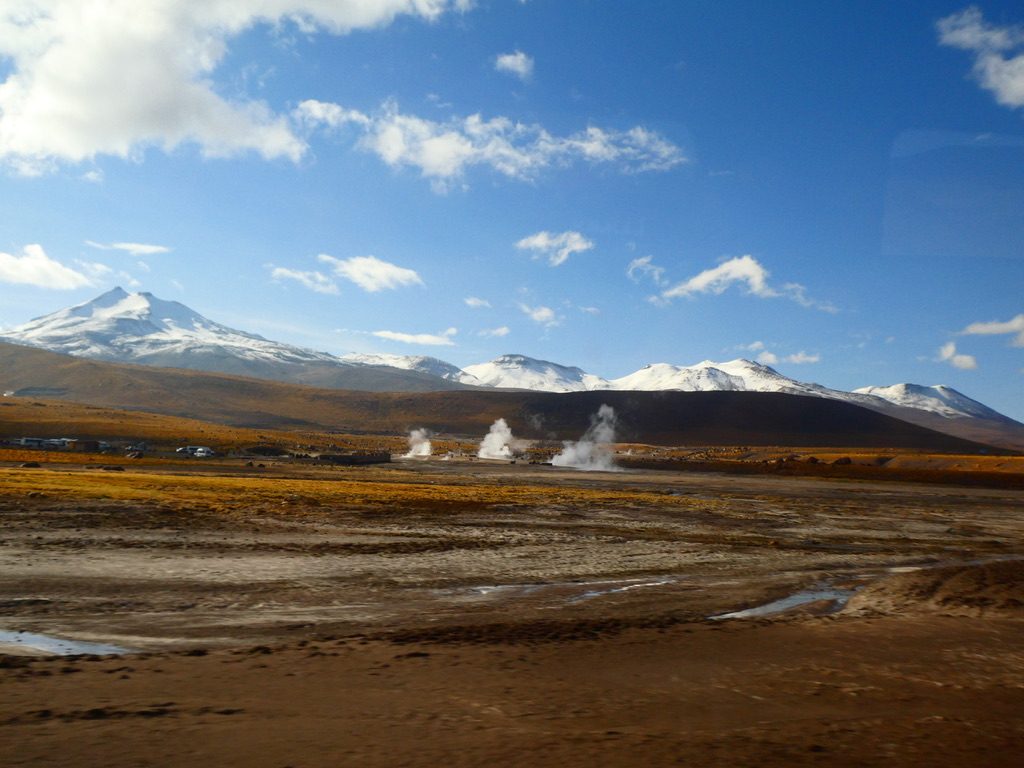
Last day in or near Santiago
There are many pretty places around Santiago that are perfect for a day trip:
- do a wine tour in one of the several wine regions: the Maipo valley, the Aconcagua valley, the Casablanca valley
- spend a day out in the nature, hiking, rafting or horse riding at the Maipo Canyon (“ Cajón del Maipo “)
- trek to the mountain through the Altos de Cantillana nature reserve
Read more day getaways around Santiago , on The Lost Passport
Or just rest your tired legs from the very long bus ride back from the Atacama; and your eyes from the manifold impressions of your 2 weeks in Chile!
Chile itinerary 3 weeks
This 3-week itinerary brings you from Santiago to the southern part of Chile, halfway down through picturesque Patagonia. It’s going crescendo into the adventure, leaving the cities behind to dive slowly into wild and unspoiled nature.
If you wanted to go down the whole way, you would need at least one more week of travel; or maybe come back for a standalone Patagonia itinerary in both Chile and Argentina.

3 weeks in Chile itinerary
We did our best to break down the long bus rides which cover no less than 1,700 km (1,600 mi). The longest journey you’ll have is 10h, including several changes, to come back from Coyhaique to Puerto Varas.
See the 2 week Chile itinerary above.
3 days Valparaiso & Vina del Mar
If you’ve already been to Valparaíso before, or if the description above doesn’t hook you, there is a whole list of natural places to explore near the city. Read about them in this post , then hop on a 6-hour day bus journey to Chile’s best wine region.
2 days in Santa Cruz
There are several wine regions in Chile, one of the most recognised being the Colchagua Valley , between Rancagua and Talca. It’s home to many wineries that open their doors to visitors, as long as they pay.
You could easily choose San Fernando as a base for your wine tour; but the small Santa Cruz is prettier, more rural and closer to the uncorking action. There’s also a Wine Train (“ Tren del Vino “) going around several wineries –but that seems exceedingly touristic to us.
Once you’ve tasted all the varietals of the terroir (or shortly before), lie down on a night bus to Temuco.

2 days in Temuco
This Chile trip itinerary is smoothly pushing you, step by step, into the wildest of the country’s natural landscapes. Departing from the urban life and after visiting a wine valley, you’re now getting introduced to the beautiful Araucanía region. Here starts the country’s Lake District, a rugged land of high-altitude lakes and volcanoes.
The Conguillío National Park lies less than 2 hours away from Temuco, at the foot of the Andes. It’s a photogenic landscape of volcanoes and lakes (of course) that offers a perfect setting for all levels of hikers. The most adventurous can climb up Volcan Llaima , or roam the area on mountain bikes.
Hike to your heart’s content before taking a direct night bus to the town of Castro.
3 days on the Chiloé Islands
The Chiloé archipelago is in the Los Lagos region of Patagonia . It was certainly one of our highlights while we were backpacking Chile and Argentina. Imagine a rainy scenery of hilly islands connected by ferries and home to some of the smallest fishermen villages. Add UNESCO-listed wooden churches , colourful boats and probably the friendliest people in the whole country.
Castro is the main town and a perfect central base to discover the splash of islands. To the west, the Chiloé National Park offers several hikes through different types of vegetation. You could even trek through the dense park and spend a night alone on a beach.
To the north near Ancud , you can take a half-a-day tour to see penguins lazying on the cliffs. Dalcahue is also a pretty little town with a crafts market. For the smaller islands, the best is to follow your nose, the wind, or whatever is the most random at the moment.
And to go from one point to the other, nothing easier than holding your thumb on the side of the road. Unless a tsunami takes you (and they’re frequent here), you’ll love your time on Chiloé!
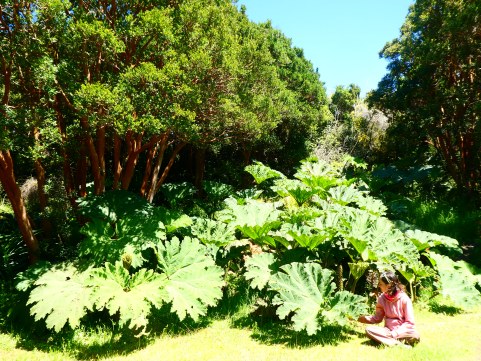
2 days in Chaitén
From Castro to Chaitén, you can either plan to cross on the 5-hour direct ferry , but that’s only on Sundays and subject to weather conditions; or take a more frequent 4-hour bus.
And there you are, at last. In mythical Patagonia , the land of fjords and glaciers, the land of imposing mountains and millennial forests. Adventure travel at its best.
Chaitén, which was covered in volcanic ashes in 2008, is a perfect base for many hikes in the region; most of them go through the Parque Nacional Pumalín and can be done in a day; for example, the short adventure hike to the volcano crater.
Honestly, you could cut this Chile itinerary short and revel in this wonderful area without travelling further south; we wouldn’t blame you! Otherwise, face the wilderness of the Carretera Austral , that dives into the remotest of places you’ll ever find while backpacking through Chile.
Anna traveled the Carretera Austral in April 2022. Check out our post about her hiking-filled road trip in Patagonia
3 days in Coyhaique
From Chaitén, there’s a night bus driving only twice a week to Coyhaique. This mere fact already puts a tint of adventure to any Patagonia travel. The more South you venture, the trickier transportation becomes and the wilder and more impressive Nature gets.
There are several playgrounds for nature lovers around Coyhaique; and it’s possible to simply hike out of town and be mesmerised in less than an hour. But the main landmark lies 1 hour by bus to the South, under the name of Cerro Castillo national reserve . It gets a bit busy in summer (although not nearly as much as Torres del Paine National Park) so book your bus seat in advance.

The reserve’s 50-km (30-mi) trail goes through enchanted forests with a constant mountain background that could perfectly fit the wildest scenes in Lord of the Rings. Enough said. It’s possible to camp inside, in designated areas. Make sure you bring enough food and layers of clothing!
If you manage to make it that far South, visit the fantastic Marble Caves (“ Cuevas de Mármol “), on Lago Carrera General.
Are you in for more trekking in the region? Read our post about the best multi-day hikes in Chilean Patagonia .
2 days in Puerto Varas
This is the most demanding journey in these 3 weeks in Chile itinerary, lasting 10h with 3 or 4 changes. But when you finally get to Puerto Varas, the peacefulness of Lake Llanquihue will soothe your soul. From many aspects, Puerto Varas is a much better place to stay than Puerto Montt, too big and ugly.
This Swiss-looking little town is the epitome of what the Lake District is: rustic, appeasing. With a wind of old-time Europe blowing in its streets and across the waters of the placid lake. In the near distance, a couple of volcanoes stand guard.
Volcan Osorno seems like a stone’s throw away and is indeed perfectly accessible; there are a few buses, but hitchhiking is also fairly easy. So is the climb up, on foot or by chairlift, rewarding with a beautiful view of the lake. There again, the words that come to mind are ‘peaceful’ and ‘appeasing’. You will see for yourself.
If you prefer, go around the lake, stopping at small villages and secluded beaches on the way. In the evening, indulge in a hot chocolate or a craft beer, both local specialities.
Start dreaming: Our stay in Puerto Varas and our hike up Volcano Osorno

Finally, finish your three weeks in Chile with a night bus back to Santiago for your flight home.
More best places to visit in Chile
Looking for more? There are still many attractions that didn’t fit in this overland Chile travel itinerary. Can you imagine that some visitors want to travel Chile in 9 days?
Here’s a list of places you should consider, depending on how many days in Chile you’re ready to spend. Let’s add more destinations to your Chile bucket list!
- Cerro La Campana
- Lauca National Park
- Humberstone & Santa Laura Saltpeter Works
- Easter Island
- Isla Robinson Crusoe
- Pichilemu & Punta de Lobos
- Pucón & Volcano Villarica
- Parque Nacional Torres del Paine
- Punta Arenas & Isla Magdalena
- Puerto Natales
2 or 3 weeks in Chile budget
Going out in Chile can be expensive but bus transportation is affordable and the entrance to most sites is either free or cheap. It’s also fairly easy to couchsurf and hitchhike, bringing down the overall cost of travel in Chile.
You can check departures times and prices for all bus journeys on Recorrido.cl .
Therefore, the cost for 2 weeks of travel in Chile , including cheap accommodation (hostels, hotels or camping), bus transportation between destinations, your ticket to Santiago’s Museo de Arte Precolombino , a guided tour of an Elqui observatory, a tour of El Tatio Geysers & Lagunas Escondidas and renting a bike to Valle de la Luna could be around:
200,000 Chilean pesos ($ 260 USD / 235 €)
For our 3 weeks in Chile itinerary including accommodation and bus transportation, your ticket to Santiago’s Museo de Arte Precolombino , entrance to Conguillío & Chiloé national parks in high season and to Cerro Castillo national reserve without camping, and a penguin watching tour on Chiloé, count with an estimated budget per person of:
300,000 Chilean pesos ($ 385 USD / 350 €)
These amounts don’t include food , drinks, city transportation or any souvenir you should decide to bring back.

Weather and what to pack for 2 or 3 weeks in Chile
What to wear in Chile depends firstly on which part you decide to take on.
Unsurprisingly, the north of Chile remains mild all year , with day temperatures between 21ºC and 24ºC. You’ll need shorts and short sleeves but also a very thick jumper for potential early starts. The temps in Patagonia, on the other end, oscillate more, between -2ºC in Winter and 22ºC in Summer; they can get even colder at high altitudes . You’ll require a good wind blocker anyway, a hat and probably a scarf.
The rest of the country, known as the Central Valley, is of mild Mediterranean-style temperatures. They go between 15ºC (especially on the coast) and 30ºC (especially in Santiago) throughout the year.
Wherever you go, make sure you bring sun-blockers (hat, sunglasses, sunscreen).
Other things not to forget:
- your usual responsible traveller’s kit : foldaway bag, reuse cup, water filter, lunch box, cutlery
- a water bottle for the many hikes
- a camera , how could you forget it?!
- useful phrases and words in Spanish
- entertainment for long bus travel: book or podcast
- a sleeping bag – also for Couchsurfing
- a tent if you go camping
Read how we went wild camping in Argentina without a tent
Back in Santiago for your final night, you keep wondering whether all you’ve seen on your Chile vacation is true. Whether you’ve followed the 2-week itinerary to the north or the 3 weeks in the south of Chile, you’ve experienced unique landscapes that you didn’t know existed. It was demanding –both on your body and on your soul– but you know those memories will never leave you. And already, acting like cocaine on your nervous system, you’re craving for more of Chile, the inconceivable land.
Are you planning a trip to Chile? Are you looking for other types of destinations? Contact us for a personalised Chile itinerary!
Like it? Pin it!

Don’t miss anything from our Chile travel blog!
First Name:
Email address:
Not sure whether you want us in your mailbox? Read here what it means to subscribe.
By joining, you agree to share your email address with us (and Mailchimp) to receive emails from Green Mochila. You can unsubscribe at any time from any of our emails.
Share this post on:
Anthony fell in love with the world, and more particularly with South America. He wants to offer inspirational guides to the curious backpacker, travel stories to the online generation, and incentives for a more responsible and greener way-of-travel for everyone.
You could also like this:

Bus Transportation in South America: Everything You Need to Know
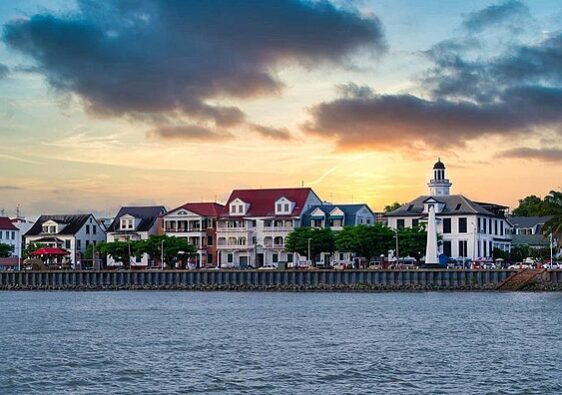
Capitals of countries in South America

🇨🇴 Cartagena to Santa Marta or Vice Versa: Travel by Bus with a Clear Head, Stress-Free

Essential Packing List for your Road Trip
I appreciate your creativity and the effort you put into every post. Keep up the great work!
Your blog posts never fail to entertain and educate me. I especially enjoyed this one about travelling to Chile for a couple of weeks. Keep up the great work!
Keep up the fantastic work!
Leave A Comment Cancel reply
Your email address will not be published. Required fields are marked *
This site uses Akismet to reduce spam. Learn how your comment data is processed .
Privacy Overview
- [ June 3, 2024 ] MONGOLIA – Itinerary for a thrilling winter expedition through snow and time visiting UNESCO sites Itineraries
- [ January 14, 2024 ] EQUATORIAL GUINEA – Best 10 day itinerary with island marvels and mainland hidden gems Equatorial Guinea Travel Guide
- [ May 10, 2023 ] TOGO – Best 10-day itinerary for a road trip from south to north Itineraries
- [ November 20, 2022 ] DJIBOUTI – The best 1-week Djibouti roadtrip itinerary with a 4×4 landcruiser Djibouti Travel Guide
- [ November 18, 2022 ] YEMEN – Mainland Yemen itinerary with all the best places to visit in Hadramout Itineraries
- [ January 21, 2022 ] TRINIDAD – Port of Spain city walk: Top 12 things to see and do Trinidad & Tobago Travel Guide
- [ January 18, 2022 ] TRINIDAD – Hyatt Regency hotel review: Best luxury place to stay in Port of Spain Hotel reviews
CHILE – Road trip itinerary for 10-14 days: from Santiago to the northern desert
Table of Contents
Chile Itinerary Day 1 – 3: Santiago de Chile
Chile itinerary day 3 – 7: atacama desert, chile itinerary day 7 – 8: calama, chile itinerary day 8 – 10: iquique, chile itinerary day 10 – 14: easter island.
Chile is a very long and narrow country offering a huge variety in naturel & cultural destinations. In this article I will show you a sample Chile itinerary for 10-14 days. Starting in the capital Santiago de Chile towards the northern Atacama Desert and Iquique on the coast. The itinerary takes you to bustling city life, beautiful nature and old mining towns. This trip could be extended with a visit to Easter Island easily or combined with a trip to the south of Chile. I enjoyed my trip to Chile with its unique nature and culture.
The first day is a day to acclimatize. If you arrive late in the evening I suggest you to stay at the Holiday Inn Hotel at the Santiago de Chile airport. It’s member of my favorite chain IHG and is a great hotel. Santiago de Chile is a huge city but the places of real interest are limited. I visited the most important ones in a day and even did a wine tasting in the evening. If you like to go party all night long this is definitely possible in Santiago de Chile; just add a few days or weeks depending how long you need to recover. On the third day the journey continues to San Pedro de Atacama by flying from Santiago de Chile to Calama and a two hour drive.
Read all about my experience: CHILE – Top things to do in Santiago de Chile in a day
The Atacama Desert is the driest place on earth. This desert is a beautiful destination for nature lovers and adventure seekers. I prefer to travel in luxury so I suggest staying at the Alto Atacama Hotel which offers 5 star services and excursions which are included. The time is actually not enough to go on every excursion but it’s the perfect amount of days to see all the different unique places. On the day of arrival I planned to do the sunset tour to maximize my time. The departure to Calama was in the evening the last day so that in total I could go on tours for four and a half day. This didn’t leave much time to swim, go to the SPA or do other things. If you would like to have a more relaxed schedule I suggest adding a day here. You won’t get bored I’m sure. Keep in mind you are arriving at an altitude of about 2500 meters and tours go up to 5000 meters. Make sure you acclimatize to the altitude to avoid altitude sickness.
Read all about my experience: CHILE – El Tatio Geysers and Moon Valley at sunset in Atacama desert CHILE – Back in history in Atacama desert & cactus valley CHILE – Two Chile salt flats and a 5* lunch at 4300m altitude
Calama itself is not of big interest but the nearby Chuquicamata mine is. It’s the biggest open-pit mine in the world. Visits are on a guided basis only and depart in the morning from the Codelco office; the company that runs the mine. I picked up my 4×4 in Calama in the evening and stayed overnight to be in time for the Chuquicamata tour. It’s a must do! From there I drove to Iquique which is a 5-6 hour drive pending traffic. It goes through beautiful desert landscape with amazing views. You will arrive late evening in Iquique.
Read all about my experience: CHILE – Mining in the Atacama desert at Chuquicamata mine and Humberstone
Iquique is a port town on the Chilean coast. I experienced my first earthquake there! I stayed two nights so that I would have one full day to go to the Humberstone & Santa Laura Saltpeterworks. I passed there the evening before already. It’s an hour drive from Iquique. These towns and mines are a UNESCO World Heritage Site and a unique place. Deserted towns with winds howling through them giving a bit of a creepy atmosphere. For photography they are also a unique place to shoot. In the evening I went back to the hotel in Iquique and explored the upscale neighborhood Punta Cavancha where you can have dinner and visit one of the many bars. The next day I dropped my car at the Iquique airport and flew back to Santiago de Chile. This trip I continued back to Europe but you could extend the trip with a trip to Easter Island.
I visited Easter Island as a single trip from Argentina earlier but it would be more efficient to add it to the above itinerary. Easter Island is a magical place in the middle of nowhere. Thousands of kilometers of ocean around it make this one of the most remote places on earth. Its home to the Moai statues and the island is a UNESCO World Heritage Site. It’s a long flight from Santiago de Chile but well worth it. To explore the island 3 nights are enough but of course you can extend it to as long as you want to unwind and relax. It’s however a small island and there is not much to do in the evening. You can continue back to Santiago de Chile or onwards to Tahiti or New Zealand from there.
Read all about my experience: CHILE – Easter Island Rapa Nui in 3 days; a magical remote place
The above Chile itinerary is just as sample if you plan a 10-14 day visit. It takes you to the capital and the most important places in the north. The magical Easter Island can be added to the itinerary easily as an extension. I want to return to Chile for sure to explore the south.
Stay tuned for more stories and subscribe to the newsletter or follow CTB on social media ( Facebook , Twitter , Instagram including Instagram stories; on all social media you can find CTB @christravelblog) to get updated information.
Did you visit Chile too or do you have questions? Please leave a comment at the bottom of the page. Love to hear from you!
- santiago de chile
Related Articles
China – two times disappointing hainan: monkey island abused animals and closed wuzishan.
Hainan, the Hawaii of China, has been long on my bucket of things to see in China. During the Christmas holidays of 2015 I finally had the chance to visit. My family joined me. It was a great trip to Sanya and Haikou, the major [read more]
USA – Yosemite to Mono Lake: The best stops on Tioga Pass Road
Table of ContentsTioga PassTioga Pass: Half Dome viewTioga Pass: Tuolumne MeadowsTioga Pass: Ellery LakeMono LakeGallery Tioga Pass to Mono Lake If you are visiting Yosemite park as part of a west coast two week itinerary as I did I recommend adding a one-day tour to [read more]
ARGENTINA – A wine tour in the Uco Valley, the better region near Mendoza
Table of ContentsUco Valley Wine TourBodegas Salentein VineyardBodegas Andeluna VineyardCasa de Uco Vineyard & ResortGallery Uco Valley Wine Tour Mendoza has been a long time on my bucket list because it’s one of the best wine regions in Argentina. Every year I have a conference [read more]
All text, images, photos and videos are copyright © by Chris Travel Blog / CTB Global® 2009-2024, all rights reserved. Unauthorized use and/or duplication of this material without express and written permission is strictly prohibited. Excerpts and links may be used, provided that full and clear credit is given to Chris Travel Blog / CTB Global® with clear written note and link to the original content. Read the privacy statement to learn how personal data is collected and stored!

Chile Travel Guide
Last Updated: September 3, 2024
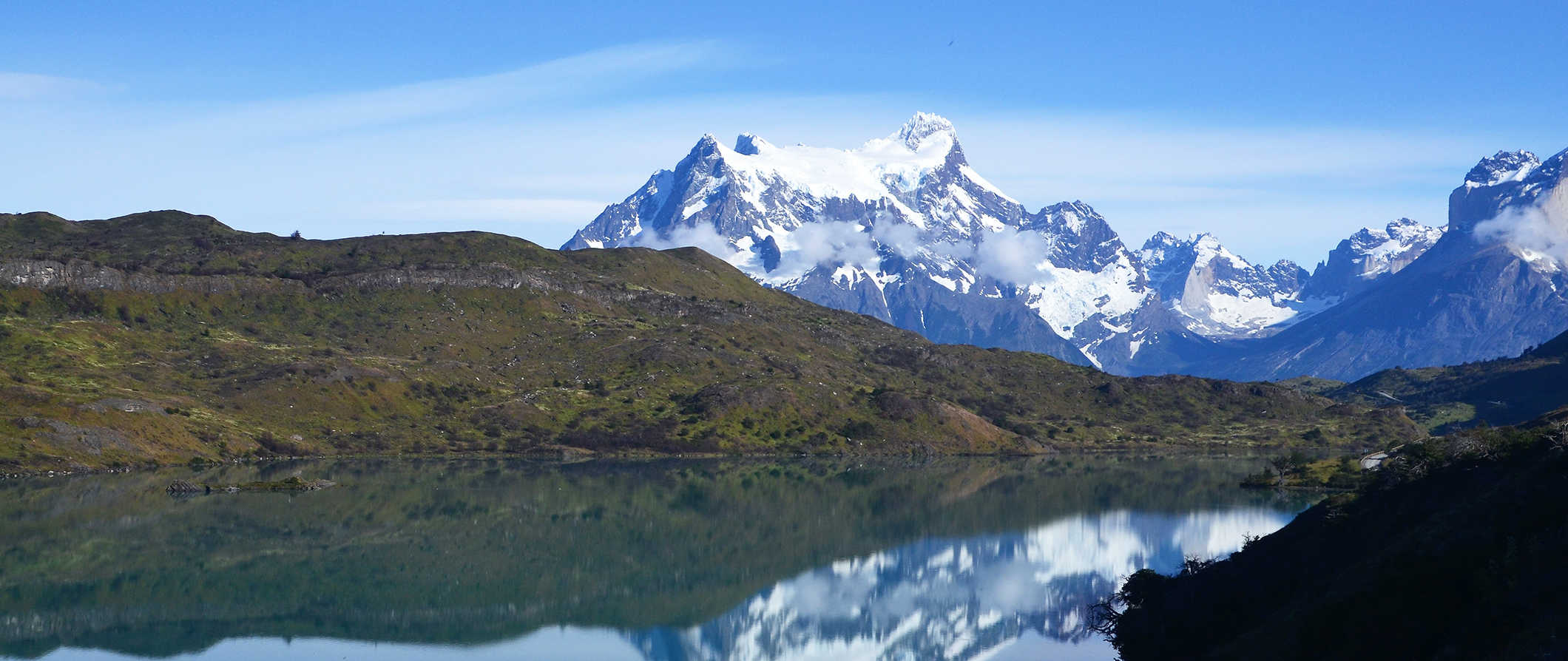
Chile is one of the most slender and longest countries in the world — it’s just 150 miles across at its widest point! From the snow-capped volcanoes of Patagonia and blistering heights of the Andes to world-class wineries and Maoi sculptures of Easter Island , there are a lot of wonderful things to see in Chile.
Traveling to Chile was one of the best experiences I’ve had in South America. It just constantly blew me away. It’s one of the most developed South American countries (the capital, Santiago, is a tech hub for the region), the people were awesome, the food was incredible, and the scenery made me feel in awe of nature.
Not only is there lots to do but the country is budget-friendly, which really rounds it out as a must-see destination.
Use this travel guide to Chile to plan your visit, save money, and make the most out of your trip!
Table of Contents
- Things to See and Do
- How to Stay Safe
- Where to Stay
- Typical Costs
- Suggested Budget
- Money-Saving Tips
- How to Get Around
- Best Places to Book Your Trip
- Related Blogs on Chile
Click Here for City Guides
Top 5 things to see and do in chile.
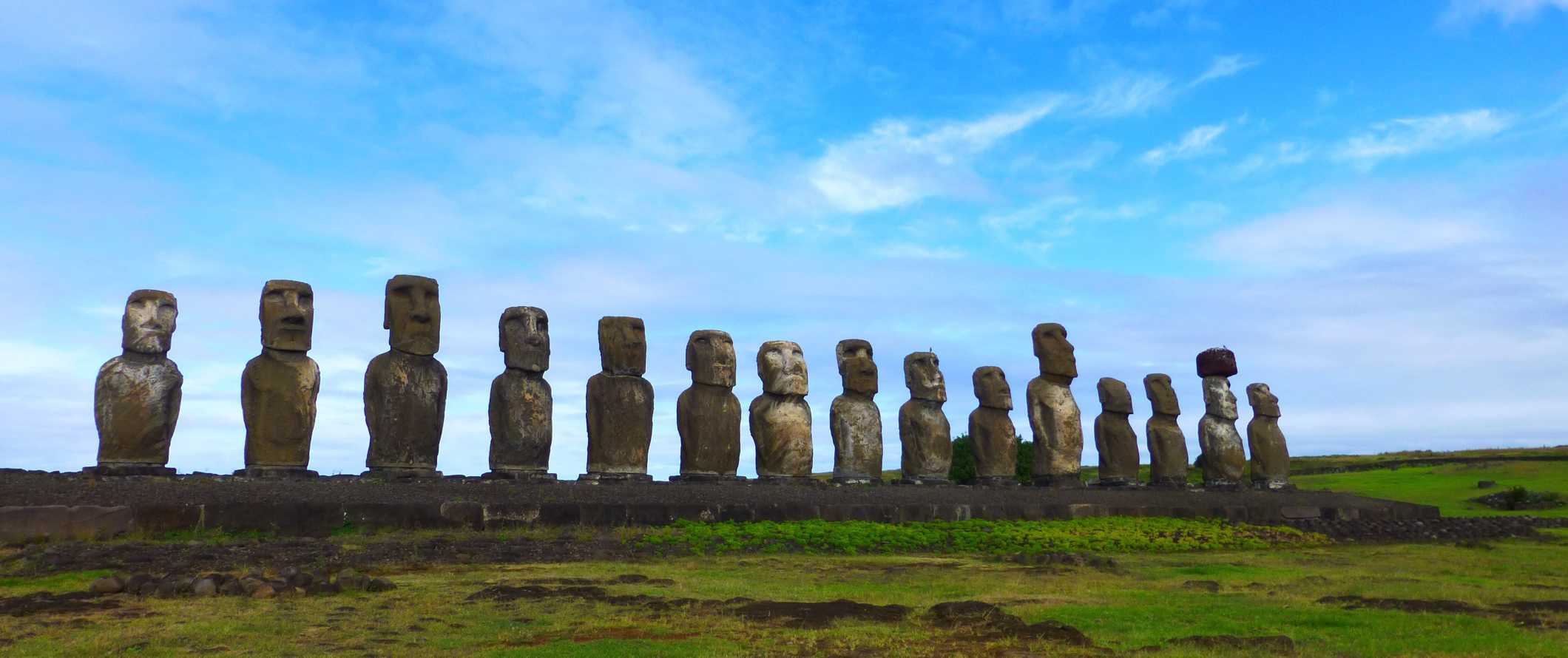
1. See Easter Island
Easter Island, located 3,540 kilometers (2,200 miles) off the coast of Chile, is the most isolated inhabited island on earth and home to the Rapa Nui Polynesian indigenous people that have lived there since 300 CE. Named after explorer Jacob Roggeveen’s ‘discovery’ of the island on Easter Sunday in 1722, this protected UNESCO World Heritage Site is famous for its Moai sculptures (the iconic big faces dotted all over the island). However, there is so much more to the island, including thousands of archaeological sites, volcanic craters and tunnels, pristine beaches, and excellent diving. To explore this magical place, hike around the dramatic cliffs and extinct volcanoes around the Moai archeological sites or around the spectacular Rano Kau crater and the Ana O Keke Cave. Or go sun yourself on Anakena’s beautiful white coral sand beach or Ovahe, a secluded pink sand beach hidden in a little cove with sparkling turquoise waters.
2. Discover Torres del Paine National Park
Torres del Paine lies between the Andes and Patagonian steppe and is made up of snow-clad mountains, glacier lakes, and some of the best hiking in Chile. It also happens to be one of the most beautiful and desolate regions on the planet. There is no end to the scenic views here, including the three rugged, towering peaks of Central, Monzino, and Dagostini as well as the Southern Ice Fields. Be sure to wander around the enchanting Sarmiento Lake and see the Amarga Lagoon and the giant Salto Grande Waterfall. Admission is 29,250 CLP for up to three days for foreigners.
3. Explore Santiago
Chile’s capital is a thriving city and home to a third of the country’s entire population. Founded in 1541, this vibrant capital offers gorgeous panoramas, great restaurants, tasty locally-produced wine, and of course, Barrio Bellavista’s nightlife. There are quite a few must-see attractions in the city: Parque Metropolitano (a large urban park) as well as Cerro San Cristóbal, where you can hike around taking in beautiful views of the city, shouldn’t be missed. The Museum of Human Rights is also a must-visit site, as it chronicles the dark years of Pinochet when thousands of people ‘disappeared’ at the hands of his violent regime.
4. Marvel at San Pedro de Atacama
Located in Chile’s Norte Chico northern region, San Pedro de Atacama is one of Chile’s hottest tourist towns. Literally. Sitting at 2,400 meters (7,874 feet), the ancient town is in the driest desert in the world (it reportedly hasn’t seen rain since 1870). But the rock formations here are stunning, and it’s the perfect place to stargaze. This little town with adobe houses and dirt streets only has 5,000 inhabitants but plenty of tourists visit up to explore the stunning valley landscapes, the Atacama Salt Flats, and the Chaxa and Miniques Lagoons. Don’t miss the famous beautiful jagged geological formations of Valle de la Luna and Valle de la Muerte valleys that can be reached by bicycle from town.
5. Visit colorful Valparaiso
Nicknamed the “Jewel of South America,” this colorful city near Santiago is a mesh of bohemian bars and Victorian architecture along a coastline of sheer cliffs. The laid-back atmosphere and beauty of the area have inspired generations of writers and poets, including poet Pablo Neruda. Be sure to bring your camera because the whole city is painted in vibrant Insta-worthy colors. Take the Ascensor Reina Victoria funicular up to the Concepcion neighborhood and have a cocktail on the hilltop overlooking the city as you try some of the delicious local seafood dishes. Also, be sure to check out two of Chile’s top beaches nearby, the upscale Viña del Mar and the super cool Reñaca.
Other Things to See and Do in Chile
1. see the san marcos cathedral.
The same architect who was responsible for the Eiffel Tower, Alexandre Gustav Eiffel, designed San Marcos Cathedral. The cathedral is in Arica, Chile’s northernmost city, and was built to replace the original cathedral destroyed by an earthquake in 1868. The new cathedral was commissioned in 1876 and is a rare example of Gothic architecture in South America.
2. Get tipsy on a wine tour
Chile’s vineyards have been producing world-class wine for over 400 years. There are plenty of tours available around the country as vineyards stretch the entire length of Chile. I think the best wineries are located near Santiago. Expect to pay around 15,000-20,000 CLP for a basic tour, though fancier tours at more prestigious vineyards can easily be over 55,000-100,000 CLP per person. Most tours last 4-8 hours.
3. Hike a volcano
Chile is home to the world’s tallest active volcano, Ojos del Salado, which lies in the Andes near the Argentine border. Villarica and Osorno are also popular volcanoes (and both lie close to lakes). Most volcanoes in the country have thermal spas at their base too. Experienced hikers can do the trip on their own, though there are plenty of guided tours available for travelers looking for a group tour. Most multi-day tours span 10-14 days and cost millions of pesos. For day trips like the Cajon de Maipo, Osorno Volcano, Termas Colina, and Petrohue Falls, expect to pay 32,000-56,000 CLP per person.
4. Valle de la Muerte
Also known as “Death Valley,” this is an astounding place to hike, go horseback riding, or even go sandboarding. Located in the northeast of the country near San Pedro de Atacama, there are also guided moonlight walks that take you out over the rocky martian landscape. You can rent a sandboard for around 8,300 CLP or go on a sandboard tour for 23,000 CLP per person which includes transportation. There are even tours that sandboard at midnight, using spotlights to light the way (they have a DJ too!). If you’re looking to hike, check out the Corniza Trail. It’s a 7-hour loop that’s relatively easy (many families do it).
5. Santuario de la Naturaleza Valle de la Luna
Also located near San Pedro de Atacama, the “Valley of the Moon” is an otherworldly landscape that is home to stones and sand formations that have developed an extraordinary texture due to thousands of years of winds and flooding. The rock formations look like the surface of the moon, hence the park’s name. It’s a great place to go hiking — just don’t forget to bring water as it can get quite warm. Tours are available for around 26,000 CLP per person.
6. See the El Tatio geysers
A popular tourist attraction, these geysers are incredibly beautiful and well worth a visit as they make up the largest geyser field in the Southern Hemisphere (and they are the third largest in the world). You have to get up around 4am as all the tour companies aim to get you there by sunrise and it’s a 90-minute drive from San Pedro de Atacama. But it’s worth the effort! Bring a swimsuit as there are thermal pools nearby. Tours cost around 33,000-38,000 CLP. You can visit without a tour (admission is 15,000 CLP) but you’ll need to rent your own vehicle to get there.
7. Museo de Bellas Artes
This museum is one of the best in the country. Located in Santiago, it’s home to a wide display of fine art, sculptures, photography, paintings, and digital media. Built in 1910, the building is somewhat small but the architecture is equally as impressive as the collection within (it was built in the Beaux-arts style and has a very Parisian feel to it). Admission is free.
8. Mingle among the wealthy in Viña del Mar
Considered a Chilean Miami, this city next to Valparaiso serves as a hotspot for casinos, upscale cafes, and seaside restaurants. Even if you don’t have money to burn, it’s an interesting place to spend an afternoon people-watching as you wander the beach promenade. You’ll find lots of world-class restaurants here. If you’ve got some money to burn, stay a night!
9. Tour Pablo Neruda’s homes
One of the world’s most famous poets used to call Chile home. With homes in Valparaiso, Santiago, and Isla Negra, this Chilean icon stuffed a lifetime of knick-knacks, literature, and interesting maritime architectural pieces into his three abodes. All of them are open to the public. Even if you’re not a huge fan of his work, his homes alone are an interesting glimpse into Chilean culture as Neruda is a cultural icon and one of the most famous poets of the 20th century. Admission to each home costs around 7,000 CLP and includes an audio-guide system in multiple languages.
10. Get off the beaten path
Some lesser-known treasures worth visiting in Chile are Frutillar (a beautiful lakeside community in southern Chile’s Los Lagos Region), Lonquimay (another gorgeous lakeside town in the Malleco Province of southern Chile’s Araucanía Region), Caleta Tortel (a rugged seaside town with wooden walkways instead of streets in the heart of Patagonia) and Coyhaique (a less pricey Northern Patagonia city that’s a hub for great nature adventures). If you’re looking to beat the crowds, be sure to visit some of these lesser-known destinations.
11. Swim in the world’s largest pool
If you’re looking for some luxury, head to the Crystal Lagoon, home to the world’s largest swimming pool. It’s located at the San Alfonso del Mar resort in Algarrobo, just west of Santiago. The pool is the size of twenty Olympic swimming pools and is the biggest recreational swimming pool in the world, requiring 66 million gallons of water just to fill it! A 1-2 bedroom apartment rental here costs 70,000-120,000 CLP per night.
How to Stay Safe in Chile
Chile is considered a safe destination and generally ranks as one of the safest on the continent. That said, crimes still do occur so you’ll want to take some precautions during your trip. The most common crimes in Chile are petty theft and bag snatching. Since these are crimes of opportunity, you’ll always want to make sure your possessions are secure. Be extra vigilant when riding the bus and when you’re in areas popular with tourists.
When taking the bus (especially the night bus) make sure you don’t have any valuables in your checked bag. Additionally, keep any valuables secure and out of reach from any would-be pickpockets.
If you’re enjoying the nightlife of Santiago, keep an eye on your drink as drink-spiking can occur.
Be sure to read about the common travel scams to avoid here .
Earthquakes are also common enough in Chile that you’ll want to make sure you are prepared should one occur. Know where your emergency exits are in your accommodation as well as any local evacuation locations for major emergencies. If you have a map downloaded on your phone, save the location of the nearest hospital and airport as well, just in case.
If you need emergency services, dial 113 for assistance.
The most important piece of advice I can offer is to purchase good travel insurance. Travel insurance will protect you against illness, injury, theft, and cancellations. It’s comprehensive protection in case anything goes wrong. I never go on a trip without it as I’ve had to use it many times in the past. You can use the widget below to find the policy right for you:
Where to Stay in Chile
Hostels can be found in all the major destinations across Chile. Here are my recommended places to stay if you’re on a budget:
- Chili Kiwi Lakefront (Pucon)
- Hostal Forestal (Santiago)
- Poker Hostel (Santiago)
- Hostal Po (Valparaiso)
- Hostal Rural (San Pedro de Atacama)
- Kona Tau (Easter Island)
Chile Travel Costs
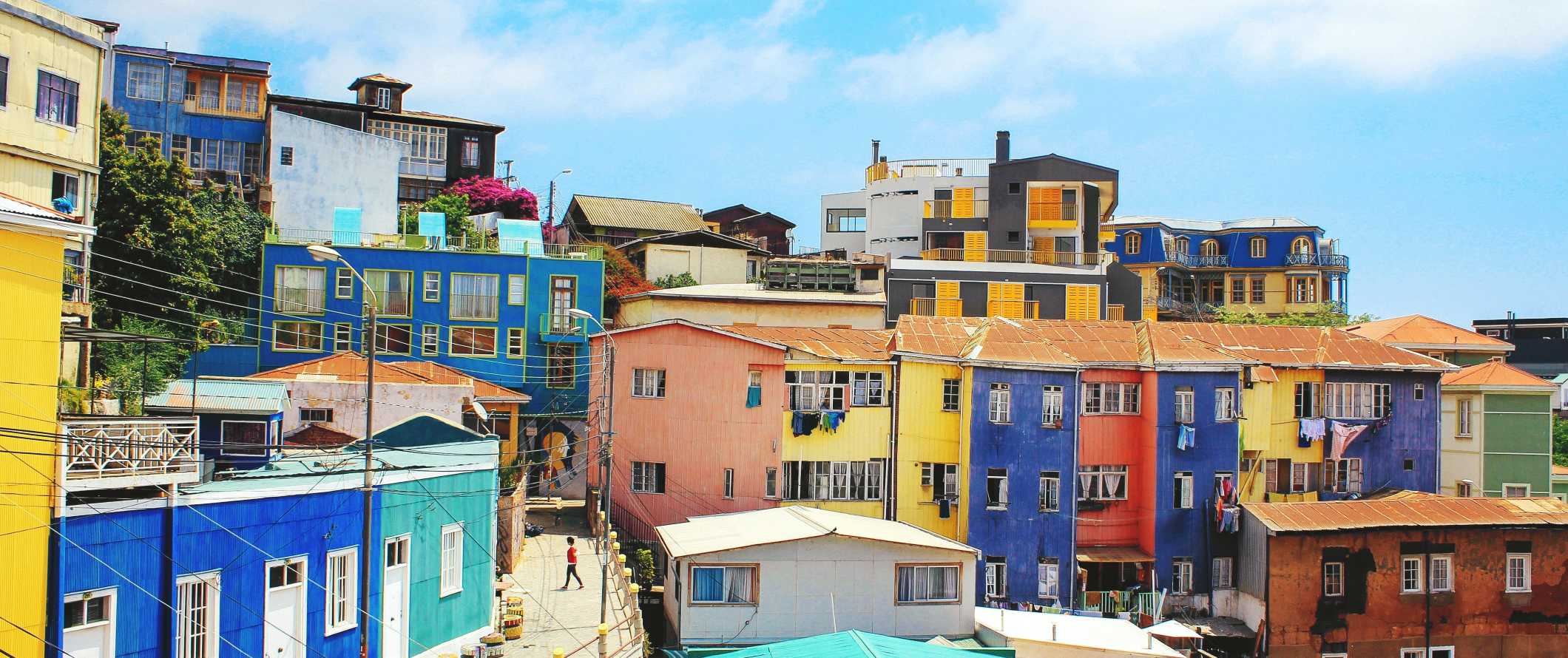
Accommodation
- Hostel dorms – 9,800 CLP per night
- Hostel private rooms – 22,000-30,000 CLP per night
- Budget hotels – 25,000-55,000 CLP per night
- Airbnb private rooms – 16,000 CLP per night
- Airbnb apartments – 45,000-60,000 CLP per night
- Campsite – 5,300-35,000 CLP per night
- Set-menu lunch – 7,000 CLP
- Sit-down restaurants – 35,000 CLP
- Fast food (think McDonald’s) – 6,000 CLP
- Beer – 3,000 CLP
- Cappuccino/latte – 2,300 CLP
- Bottled water – 850 CLP
- Groceries for a week – 25,000 CLP
Note: As everything must be shipped south, food prices in Patagonia are about 30% higher than elsewhere in the country.
Chile Suggested Budgets
How much does it cost to visit Chile? That depends on a few different factors, specifically, what you plan on doing while you’re here as well as your travel style.
Backpacker – 36,000 CLP Per Day
On a backpacking budget, you can stay in a hostel dorm, cook your own meals, use public transportation to get around, and visit a few museums. If you plan on drinking, you’ll need to add 5,000-8,000 CLP per day.
Midrange – 105,000 CLP Per Day
On a mid-range budget, you can stay in a private Airbnb room, take buses between destinations, eat out at street stalls and cheap restaurants, take the occasional taxi, enjoy some drinks, and do some paid excursions like guided hikes and wine tours.
Upscale – 205,000 CLP Per Day
On this budget, you can stay in a hotel, rent a car to get around, do more guided tours, drink as much as you want, and eat out at nice restaurants. This is just the ground floor for luxury, though. The sky is the limit!
Chile Travel Guide: Money-Saving Tips
Chile can be an expensive place to visit, especially if you’re doing a lot of tours and activities. The size of the country also means you can end up spending a lot on transportation. Here are some tips to help you save during your visit:
Bring a water bottle – LifeStraw is a reusable water bottle with a built-in filter that you can use instead of buying single-use plastic bottles. It removes bacteria, parasites, micro plastics, and other contaminants so it’s perfect for cities as well as if you’re out hiking in nature.
Buy wine at the supermarkets – Surprisingly, buying wine from vineyards can be more expensive than in the supermarkets. Buy from the supermarkets if you’re on a tight budget.
Take the bus – Bus service is inexpensive and efficient here. Night buses are comfortable and a good way to save on a night’s accommodation (they often have lie flat beds).
Buy food from La Vega Market – La Vega Market in Santiago sells everything you could possibly need and all sorts of local ingredients from Chile and Peru. Shop here for your veggies, fruits, and to get an authentic experience.
Eat at the local fish markets – In the coastal cities, the local fish markets are usually the best place for a seafood meal. Though the restaurants look cheap and thrown together, they’re delicious!
Shop around – Haggling is not common and vendors stick to their guns even when called out for price discrimination. So, if you’re quoted an inflated price for being a tourist it’s best to just move around and find alternatives where the prices are already set and visible. Otherwise, you’ll just be wasting your time and energy.
Ride in a micro or colectivo – Regular buses are for intercity transportation. “Micros” are intracity, and “colectivos” are taxis that drive a specific route once they get four people in the car, and charge a very low rate. If you want to go somewhere, chances are there’s a micro or colectivo that can get you close — just ask a local and they’ll know where to point you.
Stay with a local – Chile doesn’t have a huge Couchsurfing community, but you can still give it a shot and try to find a host (and get a local friend and a free place to stay). Just be sure to send your requests early!
Take a free walking tour – There are some great options available when it comes to free walking tours in Santiago, such as Tours 4 Tips or Free Tour Santiago . If you want to explore the city while learning about its history, architecture, and people then be sure to take a free tour. Just remember to tip at the end!
Stay at a Hola Hostel – Hola Hostels is a network of hostels predominantly in South and Central America. They offer 10% off to their members, as well as other local discounts for food and activities. Joining is free, and their hostels are also committed to environmentally sustainable practices.
Travel in the shoulder season – Prices in the country are cheaper outside of the high season (which is November-March). This includes admission to parks like Torres del Paine, which charge double during the busy summer months. Beat the crowds and save some money by skipping the high season.
How to Get Around in Chile
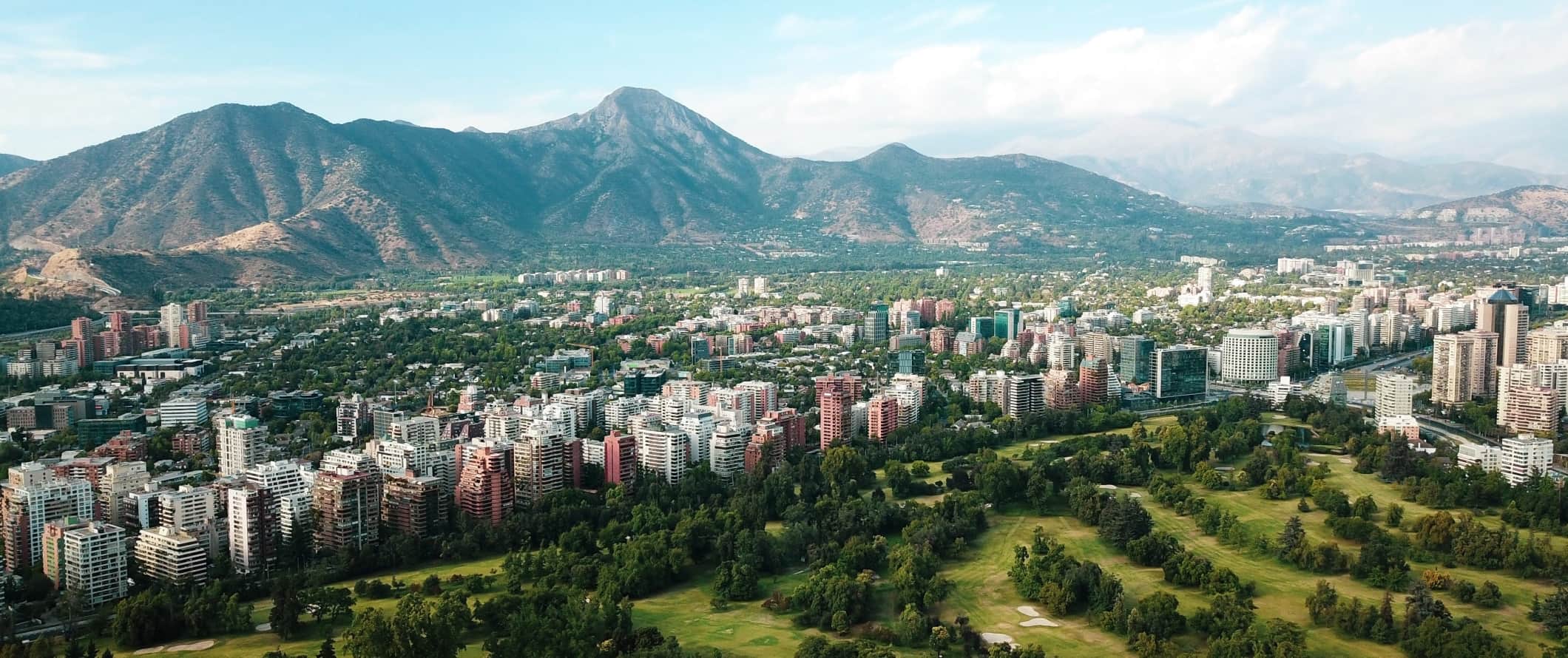
Public transportation – Public transportation, especially in Santiago, is reliable and affordable. In Santiago, you need to purchase a refillable bus pass (BIP Card) for your journeys as individual tickets are no longer available. The card costs around 1,550 CLP with the average ride costing around 700 CLP (prices vary depending on the time of day). BIP cards need a minimum initial credit of 1,000 CLP. You have to pay for your card and top-ups in cash; non-Chilean credit cards are not accepted.
Bus – For intercity travel, buses are the cheapest way to get around — and they are nice too! Reclining seats are common and many even recline almost all the way down. Additionally, some night buses even have a curtain between the seats so you can have a little privacy from your neighbor. The best companies to use are Turbus and Pullman.
Expect to pay at least 38,000 CLP per person from Santiago to Antofagasta. From Santiago to Valparaiso, bus tickets cost around 6,000–10,000 CLP each way. For something like the cross-country journey from Santiago to Punta Arenas, expect to pay at least 60,000 CLP for the 40-hour bus ride (this is an incredibly long distance so you have to change at Osorno or choose flying).
Train – Traveling by train in Chile is virtually non-existent. Much of the tracks have been left to decay beyond repair outside the central region of the country. Trains link Santiago with Curico, Talca, Linares, and Chillan with air-conditioned cars but that’s the extent of Chile’s train infrastructure. You can visit trencentral.cl for the available routes and prices.
Flying – Flying around the country is surprisingly affordable. Expect to pay around 28,000-35,000 CLP for the two-hour flight from Santiago to Antofagasta. Prices are similar for trips from Santiago to:
- La Serena (one hour)
- Calama (two hours)
- Arica (two hours forty-five minutes)
- Concepcion (one hour)
- Puerto Montt (one hour forty minutes)
For a flight between Santiago and Puerto Natales, expect to pay around 40,000-55,000 CLP. Round-trip flights from Santiago to the remote Easter Island cost around 240,000-300,000 CLP.
Car rental – Driving in Chile is much easier (and safer) than driving in other South American countries. Many of the highways are well-maintained thanks to their liberal use of toll roads. While driving in Santiago can be a little chaotic, once you get out of the city things generally become much easier. Expect to pay around 178,000 CLP for a one-week rental. Drivers need to be at least 21 years old.
For the best car rental prices, use Discover Cars .
Hitchhiking – Hitchhiking in Chile is generally quite safe for foreigners. Avoid hitchhiking on rural roads, where there is much less traffic. If you do plan on hitchhiking regularly, bring a tent with you in case you don’t find a ride. It’s relatively easy to wild camp in Chile, and often you can ask at gas stations or police stations to pitch behind their building. Check Hitchwiki for more information.
When to Go to Chile
Since Chile is in the southern hemisphere, the summer months are December, January, and February. With landscapes ranging from desert to tundra, the weather and temperatures can vary tremendously here. Expect daily highs around 28-30°C (82-86°F) in Santiago, while the highs in Torres del Paine are closer to 13°C (55°F).
Winter is not a particularly great time to visit as the temperatures can drop below freezing, with snowfall common in certain regions. Daily lows reach -15 °C (5 F), making it rather unpleasant to be out and about during the day. Unsurprisingly, you can see why most travelers visit during the summer.
Fortunately, the shoulder season is also a fantastic time to visit Chile as you’ll be able to beat the crowds and save yourself some money. It’s an especially good time to visit if you plan on visiting Torres del Paine as there will be fewer hikers here and the park admission will be much cheaper. November and March are usually included in the high season, so aim for late October or early April. The weather won’t be perfect, but it’s a good compromise for travelers looking to dodge the crowds.
Chile Travel Guide: The Best Booking Resources
These are my favorite companies to use when I travel. They consistently have the best deals, offer world-class customer service and great value, and overall, are better than their competitors. They are the companies I use the most and are always the starting point in my search for travel deals.
- Skyscanner – Skyscanner is my favorite flight search engine. They search small websites and budget airlines that larger search sites tend to miss. They are hands down the number one place to start.
- Hostelworld – This is the best hostel accommodation site out there with the largest inventory, best search interface, and widest availability.
- Booking.com – The best all around booking site that constantly provides the cheapest and lowest rates. They have the widest selection of budget accommodation. In all my tests, they’ve always had the cheapest rates out of all the booking websites.
- Get Your Guide – Get Your Guide is a huge online marketplace for tours and excursions. They have tons of tour options available in cities all around the world, including everything from cooking classes, walking tours, street art lessons, and more!
- SafetyWing – Safety Wing offers convenient and affordable plans tailored to digital nomads and long-term travelers. They have cheap monthly plans, great customer service, and an easy-to-use claims process that makes it perfect for those on the road.
- LifeStraw – My go-to company for reusable water bottles with built-in filters so you can ensure your drinking water is always clean and safe.
- Unbound Merino – They make lightweight, durable, easy-to-clean travel clothing.
- Top Travel Credit Cards – Points are the best way to cut down travel expenses. Here’s my favorite point earning credit cards so you can get free travel!
Chile Travel Guide: Related Articles
Want more tips for your trip? Check out all the articles I’ve written on Chile travel and continue planning your trip:
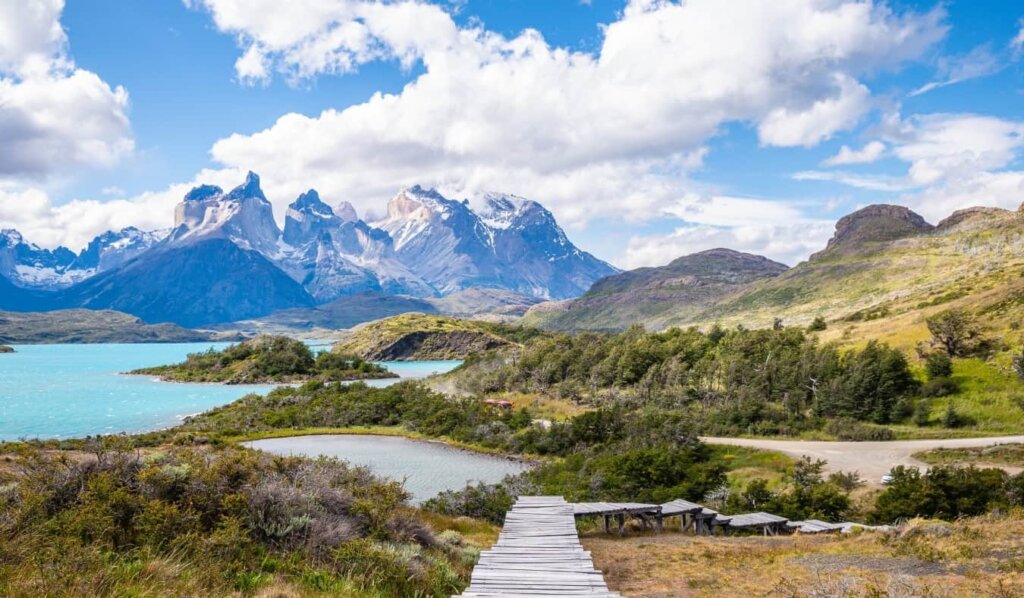
Is Chile Safe to Visit?

The 10 Best Cities to Be a Digital Nomad
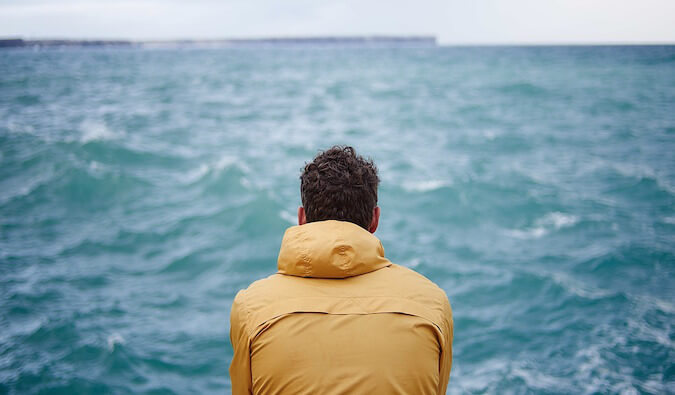
My (Non-Existent) South American Itinerary (and My Anxiety)
Get your free travel starter kit.
Enter your email and get planning cheatsheets including a step by step checklist, packing list, tips cheat sheet, and more so you can plan like a pro!

- Where To Stay
- Transportation
- Booking Resources
- Related Blogs
National Geographic content straight to your inbox—sign up for our popular newsletters here

Take the perfect road trip at the bottom of the world
Glacial waterfalls, tropical plants, dolphins, marble caves: Patagonia’s remote Carretera Austral is an explorer’s paradise.
Waterfalls cascade from a hanging glacier in Quelat National Park, a spectacular stop along Chile’s Route 7—also called the “Carretera Austral”—which winds through Patagonia.
Chilean Patagonia is a rugged region—isolated, wild, and ecologically diverse. Where else could you stand next to human-size rhubarb leaves, watching dolphins play in a fjord while impressive waterfalls cascade from the glaciers behind you?
To see it all would take years. But on a road trip down Chile’s Route 7—also called the Carretera Austral—you can pack the Patagonian adventures of a lifetime into a two-week journey. Here are our tips for the perfect road trip at the bottom of the world.

Before you go
Much of the 770-mile, north-to-south route connecting Puerto Montt and Villa O’Higgins is unpaved, so prepare for a bumpy drive. Though it’s possible to navigate the Carretera via public transportation or mountain bike, it’s best to rent a car and drive yourself during the summer (November to March), when more accommodations are available and it’s less likely that extreme weather will affect the roads.
Brush up on your Spanish skills (or download a translation app) and pack your bags with gear suited for Patagonia’s notoriously windy days. Then head to Puerto Montt to stock up on food, repellent for mosquitoes and horseflies, sunscreen, and plenty of cash. While it’s possible to find groceries and ATMs along the way, you won’t meet another big town until 16 hours south in Coyhaique.
The first leg: volcanoes and rainforests
From Puerto Montt, drive eight hours south to Chaitén , a volcano dormant for 9,000 years until a recent eruption in 2008 buried the nearby town in ash. The townspeople of Chaitén have since reconstructed part of the town and opened a three-mile, round-trip hike where visitors can overlook the volcano’s steaming dome and witness firsthand the death and rebirth of a forest ecosystem.
After Chaitén, head to Pumalín National Park , an area connecting the Andes with the fjords of the Pacific, to wander trails through the ancient Valdivian temperate rainforest.

A Chilean gaucho rides above Lago General Carrera, near Puerto Río Tranquilo.
The second leg: enchanted forests and hanging glaciers
Three hours south of Chaitén lies Queulat National Park , famous for its jagged rock walls, hanging glacier, and glacial waterfall. After admiring the scenery from the shores of the lagoon, explore the mossy (and often muddy) bosque encantado , or enchanted forest.
For lodging and restaurants, make your way 25 minutes south to Puyuhuapi, a small fishing village tucked in a fjord alongside dense forests, misty mountains, and thermal springs. Enjoy a break with yerba mate, a traditional tea sipped from a gourd through a metal straw with a strainer at one end.
From Puyuhuapi, drive five hours to Coyhaique , where accommodation can be booked online ahead of time. Try pisco, a brandy made from fermented grape juice, before resting up overnight for the next day’s drive through arid and colorful mountains to Parque Cerro Castillo , a national reserve.
Tackle a strenuous hike through forests of Antarctic beech and lenga trees to reach the turquoise lagoon at the base of Cerro Castillo’s jagged peaks. Stay in the small, pioneer town of Villa Cerro Castillo or continue three hours to Puerto Río Tranquilo.

The last leg: ancient marble caves and glacier trekking
Puerto Río Tranquilo earns at least two days of your trip. Kayak through the General Carrera Lake’s Marble Chapels , a network of glacial caves veined with blue striations carved from calcium carbonate by over 6,000 years of water pressure. Or unpack your crampons to explore vibrant glacial caves on the Exploradores Glacier , one of the more affordable glacier hikes in Patagonia and only recently opened to the public.
Drive 2.5 hours further south to find Valle Chacabuco. Use Valle Chacabuco as a rest stop—or hike the 14-mile Lagunas Altas Trail to spot guanacos and condors among the alpine lakes.
Finish the trek with an 8.5-hour drive to the isolated Villa O’Higgins, which marks the end of the Carretera Austral. Hop on a boat to cross Lake O’Higgins for impressive views of the O’Higgins Glacier, where you can sip a glass of whiskey chilled with ice from the glacier itself.
Travelers who chose to drive must turn around and retrace the road north. But those who journeyed by bike or public transportation have a couple options: Cross the lake into Argentina , hike to Laguna del Desierto, and grab a bus to the base of towering Monte Fitz Roy, or head south by boat to explore the Southern Patagonian Ice Field, the largest temperate ice sheet in the Southern Hemisphere.
- Nat Geo Expeditions
Become a subscriber and support our award-winning editorial features, videos, photography, and more—for as little as $2/mo.
Related Topics
You may also like.


Get ready to hit the road with these road trip essentials

An epic rainforest road trip along North Queensland's Cassowary Coast

25 essential drives for a U.S. road trip

How to plan the ultimate road trip adventure in Canada

How to take the ultimate Florida road trip
- Environment
- Paid Content
History & Culture
- History & Culture
- Terms of Use
- Privacy Policy
- Your US State Privacy Rights
- Children's Online Privacy Policy
- Interest-Based Ads
- About Nielsen Measurement
- Do Not Sell or Share My Personal Information
- Nat Geo Home
- Attend a Live Event
- Book a Trip
- Inspire Your Kids
- Shop Nat Geo
- Visit the D.C. Museum
- Learn About Our Impact
- Support Our Mission
- Advertise With Us
- Customer Service
- Renew Subscription
- Manage Your Subscription
- Work at Nat Geo
- Sign Up for Our Newsletters
- Contribute to Protect the Planet
Copyright © 1996-2015 National Geographic Society Copyright © 2015-2024 National Geographic Partners, LLC. All rights reserved
- Getting around Chile: Transportation Tips
Book your individual trip , stress-free with local travel experts
Select Month
- roughguides.com
- South America
- getting-around
- Travel guide
- Itineraries
- Local Experts
- Travel Advice
- Accommodation
Plan your tailor-made trip with a local expert
Book securely with money-back guarantee
Travel stress-free with local assistance and 24/7 support
Travelling in Chile is easy, comfortable and, compared with Europe or North America, inexpensive. Most Chileans travel by bus, and it’s such a reliable, affordable option that you’ll probably do likewise. However, internal flights are handy for covering long distances in a hurry. The country has a good road network, and driving is a quick, relatively stress-free way of getting around. Chile’s rail network has fallen into decline and only limited services are available. South of Puerto Montt, ferry services provide a slow but scenic way of travelling as far as Puerto Natales.
By local bus, colectivo and taxi
Travel ideas for chile, created by local experts.

Luxurious Chile - Atacama Desert & Easter Island
Explore two of Chile's extraordinary highlights: the Atacama desert with its salt flats and lagoons and Easter Island. The island is famous for its stone monoliths and source of mystery for many. Your stay will be complemented in the best hotels, making this trip even more special.

Chile Explored: From Santiago to Torres del Paine
The vast expanse of Patagonia is home to extreme landscapes, from jagged mountains, stark glaciers, clear blue lakes, and grassy fields. You will find them all in Torres del Paine, a huge contrast to the start of the trip in the historical, bustling city of Santiago.

Self-Drive Santiago, Wines & Lakes
Discover the beauty of Chile independently in your own rental car. Start in Santiago before heading to Pucon, Huilo Huilo and Puerto Varas. As you'll be in your own car, you can plan each day at your liking - hikes, relaxing or cultural exploration? Decide spontaneously.

From Chile to Argentina, across the Andean Lakes
Travel from Chile to Argentina across the stunning Andean Lakes, also known as the Lakes District. Beginning in Santiago, you will travel to Puerto Varas, in Chile, and then across the lakes to Bariloche, Argentina, taking in the stunning mountain scenery, before ending your trip in Buenos Aires.

Andean Triangle - Chile, Bolivia and Argentina
Start your South American adventure in Santiago de Chile before exploring the wonders of the Atacama desert. A short hop across the border and you'll find yourself in the middle of the Bolivian salt flat. Afterwards, you'll continue to Argentina with Salta and Buenos Aires.

Wild Patagonia
Argentina has lots to offer its visitors: a glacier the size of a city, sizzling tango, fashionable barrios, artisan towns, ranches with horses and gauchos and wild untamed natural beauty. From Buenos Aires to Patagonia, you’ll get to see it all in this adventure-laden vacation.
Chile is a country of almost unimaginable distances (it’s more than 5000km by road from Arica to Punta Arenas), which makes flying by far the quickest and most convenient way of taking in both its northern and southern regions in a single trip. Fares are quite high, though you can find good promotions from time to time.
The leading airline is LAN (600 526 2000, LAN.com), which besides offering the widest choice of domestic flights, is Chile’s principal long-haul carrier and the only one with flights to Easter Island. Sky Airline (2 352 5600, skyairline.cl ) has more limited routings but usually lower prices.
Air taxis and regional airlines operate regular services to smaller destinations between Puerto Montt and Puerto Williams, but they are susceptible to weather delays and won’t fly without a minimum number of passengers (usually six). Two companies also fly out from Santiago to Isla Robinson Crusoe.
Chile’s long-distance buses offer an excellent service, far better than their European or North American counterparts – thanks mainly to the enormous amount of legroom, frequent departures and flexible itineraries. Facilities depend less on individual companies than on the class of bus you travel on, with prices rising according to comfort level. A pullman (not to be confused with the large company of the same name) or clásico contains standard semi-reclining seats; a semicama has seats with twice the amount of legroom that recline a good deal more; and a salon cama , at the top of the luxury range, has wide seats (just three to a row) that recline to an almost horizontal position à la first class on a plane. All buses have toilets. Some include meals or snacks, while others stop at restaurants where set meals might be included in the ticket price. Videos, piped music and bingo games are also common attractions (or irritations). Check out the locations of video screens first and seat yourself appropriately.
Thanks to the intense competition and price wars waged between the multitude of bus companies, fares are low. As a rule of thumb, reckon on around CH$1500 per hour travelled on standard inter-city buses; the most luxurious services are at least four times that. It always pays to compare fares offered by the different companies serving your destination, as you’ll almost certainly find one offering a special deal. This price comparing is easily done at the central terminal used by long-distance buses in most cities, where you’ll find separate booking offices for each company (though Tur Bus and Pullman Bus, the two largest companies, often have their own separate terminals). Some towns, however, don’t have a central terminal , in which case buses leave from their company offices.
Try to buy your ticket at least a few hours in advance, and preferably the day before travelling, especially if you plan to travel on a Friday. An added advantage of buying ahead is that you’ll be able to choose a seat away from the toilets, either by the aisle or window and, more importantly, the side of the bus you sit on. Even with a/c, seats on the sunny side can get extremely hot. There is little reason to buy a round-trip ticket unless you are travelling at peak season.
When it comes to boarding , make sure that the departure time on your ticket corresponds exactly to the time indicated on the little clock on the bus’s front window, as your ticket is valid only on the bus it was booked for. Your luggage will be safely stored in lockers under the bus and the conductor will issue you a numbered stub for each article.
If you’re travelling north of Santiago on a long-distance route, or crossing an international border, the bus and all luggage may be searched by Ministry of Agriculture officials at checkpoints, and all sandwiches, fresh fruit and vegetables will be destroyed.
Local buses , often called micros, connect city centres with suburbs and nearby villages. These buses are often packed, and travelling with a large rucksack can be difficult. The main points of the route and final destination are displayed on the inside of the front window, but it always helps to carry a street map and be able to point to your intended destination. Buses that leave the city for the countryside normally depart from their own terminal rural , usually close to the Mercado Municipal (market building).
Colectivos , which are shared taxis operating along a set route with fixed fares, are normally only slightly more expensive than local buses. Most colectivos look exactly like regular taxis (apart from being all black, not black and yellow) and have their route or final destination marked on a board on the roof, but in some cities colectivos are bright yellow cars, often without a roof-board.
Taxis are normally black with a yellow roof. Foreigners are often overcharged, so check that the meter has been turned on before you start a journey and get an estimate for the fare, if possible in Spanish. Fares should be shown in the windscreen.
While Chile’s towns and cities are linked by plenty of buses, most visitors are here for the country’s wilderness areas, which are often difficult, and sometimes impossible, to reach on public transport. Many remote attractions are visited by tour companies, but for more independence, your best bet is to rent a car . To do this, you need to be at least 21 years old and have a major credit card so you can leave a blank voucher as a guarantee. You’re allowed to use your national driver’s licence, but you’re strongly advised to bring, in addition, an inter-national licence . Chile’s carabineros (police officers), who frequently stop drivers to check their documents, are often suspicious of unfamiliar foreign licences and are always happier when dealing with international ones. Traffic regulations are rarely enforced, except for speeding on the highways. The speed limit is 50km per hour or less in urban areas and 100km per hour on highways, and radar speed traps are commonplace. If an oncoming vehicle flashes its headlights, you’re being warned of carabineros lurking ahead. If you do get pulled over, exercise the utmost courtesy and patience, and under no circumstances do or say anything that could possibly be interpreted as bribery.
Rental outlets and costs
Several international car-rental companies have offices throughout Chile. In addition to these, you’ll find an abundance of local outlets which are often, but by no means always, less expensive than the international firms. Rates can vary quite a lot from one company to another, and it’s always worth phoning as many as possible to compare prices. Basic saloon cars go from around US$400–500 per week. Make sure the quoted price includes IVA (the 19 percent Chilean value added tax), insurance and unlimited mileage. Your rental contract will almost certainly be in (legal and convoluted) Spanish – get the company to take you through it. In most cases your liability, in the event of an accident, is around the US$500 mark; costs over this amount will be covered in total by the company. Petrol, at the time of writing, cost around US7–9 a gallon.
Driving in towns
Most Chilean towns are laid out on a grid plan, which makes navigating pretty easy. However, the country is obsessed with one-way traffic systems, and many streets, even in the smallest towns, are one-way only, the direction of traffic alternating with each successive street. The direction is usually indicated by a white arrow above the street name on each corner; if in doubt, look at the direction of the parked cars. Parking is normally allowed on most downtown streets (but on one side only), and around the central square. You’ll invariably be guided into a space by a wildly gesticulating cuidador de autos – a boy or young man who will offer to look after your car (quite unnecessarily) in return for a tip. In larger towns there’s a small half-hourly charge for parking on the street, administered by eagle-eyed traffic wardens who slip tickets under your wipers every thirty minutes then pounce on you to collect your money before you leave (a small tip is expected, too). If you can’t find a space, keep a look-out for large “ estacionamiento ” signs, which indicate private car parks.
Driving on highways
The Panamerican highway, which runs through Chile from the Peruvian border to the southern tip of Chiloé, is known alternately as Ruta 5, la Panamericana , or el longitudinal , with sur (south) or norte (north) often added on to indicate which side of Santiago it’s on. Thanks to a multi-billion dollar modernization project, it is quickly becoming a divided highway, with two lanes in each direction and a toll booth every 30km. This is undoubtedly a major improvement over most single-lane highways in Chile, which are prone to head-on collisions involving buses and trucks.
Backcountry and altiplano driving
You’ll probably find that many places you want to get to are reached by dirt road, for which it’s essential to rent a suitable vehicle, namely a Jeep or pick-up truck . On regular dirt roads you rarely need a 4WD vehicle. For altiplano driving , however, you should pay extra to have 4WD (with the sturdiest tyres and highest clearance), as you can come across some dreadful roads, hundreds of kilometres from the nearest town. Make sure, too, that you take two spare tyres, not one, and that you always carry a funnel or tube for siphoning, and more than enough petrol. Also pick up several five-litre water jugs – it may be necessary for either the passengers or the engine at some point. It can be difficult to navigate in the altiplano , with so much open space and so few landmarks – make a careful note of your kilometre reading as you go along, so you can chart your progress over long roads with few markers. A compass is also helpful. Despite this tone of caution, it should be emphasized that altiplano driving is among the most rewarding adventures that Chile offers.
Finally, a general point on tyre punctures . This is such a common occurrence in Chile that even the smallest towns have special workshops (bearing signs with a tyre painted white) where they are quickly and cheaply repaired.
While we don’t recommend hitching as a safe way of getting about, there’s no denying that it’s widely practised by Chileans themselves. In the summer it seems as though all the students in Chile are sitting beside the road with their thumb out, and in rural areas it’s not uncommon for entire families to hitch a lift whenever they need to get into town.
South of Puerto Montt, where the mainland breaks up into an archipelago, a network of ferries operates through the fjords, inlets and channels of Chile’s far south, providing a more scenic and romantic alternative to flights and long-distance buses. Two ferries in particular are very popular with tourists: one from Puerto Montt to Chacabuco and the San Raphael glacier, the other between Puerto Montt and Puerto Natales. In addition, there are ferry links with Quellón on Chiloé, and with Chaitén, on the Carretera Austral, as well as a number of shorter routes forming a bridge along various points of the Carretera Austral. There’s also a ferry trip across Lago Todos Los Santos, in the Lake District, connecting Petrohué with Peulla, near the Argentine border.
Main ferry routes
Petrohué–Peulla, across Lago Todos Los Santos Five hours; daily crossings (year-round) with Andina del Sud.
Puerto Montt–Chacabuco 24 hours; one sailing per week with Navimag (year-round; www.navimag.com) and TransMarChilay (year-round; www.transmarchilay.cl ).
Puerto Montt–Chacabuco–Laguna San Rafael Five days, four nights (returning to Puerto Montt); one sailing per week with Navimag (year-round) and two, three or four with TransMarChilay (year-round).
Puerto Montt–Chaitén Ten hours; one sailing per week with Navimag (Jan&Feb); three or four per week with TransMarChilay (year-round).
Puerto Montt–Puerto Natales Four days, three nights; one sailing per week with Navimag (year-round).
Quellón–Chaitén Five hours; three sailings per week with Navimag (Jan & Feb).
With the right amount of time and energy, travelling by bike can be incredibly rewarding. Your time is your own and you won’t find yourself stuck to rigid timetables or restricted to visiting destinations only served by public buses.
Supplies in Chile can be unreliable so it’s best to bring as much as you can from home. A good, sturdy mountain bike is a must, along with the usual locks and chains, strong racks, repair kit, lights, waterproof panniers, jackets and over-trousers. All equipment and clothes should be packed in plastic to protect from dust and moisture. Your major problem will be getting hold of spares when you need them – bike shops tend to be found only in Santiago and a few major cities. When on the road, bear in mind that long stretches are bereft of accommodation options and even the most basic services, so you must be completely self-sufficient and prepared for a long wait if you require assistance. Some bus companies will not transport bicycles unless you wrap frame and wheels separately in cardboard. When you enter the country, you may well find that customs officials enter details of your bicycle in your passport to prevent you from selling it.
The main danger when cycling on Chile’s roads are drivers. Make sure you stand out in the traffic by wearing bright colours, good reflective gear and lights when the vision is poor. It goes without saying that you should wear a helmet ; it’s actually illegal to ride in Chile without one. Before you set off get your hands on one of the many good guidebooks available on long-distance cycling. Alternately contact the Cyclists Touring Club in the UK (0844 736 8450, ctc.org.uk).
Chile once possessed a huge network of railways , particularly in the far north where hundreds of kilometres of lines transported the region’s nitrate ore down to the ports to be shipped abroad. Now the nitrate days are over, no national railway lines operate north of Santiago, and what lines are left south of the capital are unable to compete with the speed, prices and punctuality offered by buses.
The Rough Guides to Chile and related travel guides
In-depth, easy-to-use travel guides filled with expert advice.

Travel advice for Chile
From travel safety to visa requirements, discover the best tips for visiting Chile
- Sports and Outdoor activities in Chile
- Eating and drinking in Chile
- Travel Tips Chile for planning and on the go
Find even more inspiration for Chile here

- Travel Tips
written by Rough Guides Editors
updated 26.04.2021
Ready to travel and discover Chile?
Get support from our local experts for stress-free planning & worry-free travels.
- Where to stay
- Travel advice
- Meet the Team
- Our Manifesto
- Work with Us
- Budget Travel
- Personal Development
- Work & Travel
- United Kingdom
- More of Europe
- Philippines
- More of Southeast Asia
- More of South America
- More of Central America
- South Korea
- More of Asia
- More of North America
- New Zealand
- Pacific Islands
- More of Oceania
- South Africa
- More of Africa
- More of the Middle East
- Travel Essentials
- Travel Gear
Home » South America » Chile » Backpacking Guide
Backpacking Chile Travel Guide (2024)
Backpacking Chile is all about the extremes. From trekking through insanely beautiful glacial national parks in the south to exploring the vast deep red Atacama desert in the north, it is one epic country to travel. There are 36 National Parks in Chile, all stunning and unique in their own way. This awesome country is also home to Easter Island, one of the most mysterious places on the planet.
Chile really is one of the most underrated countries for intrepid backpackers, it is a trekkers dream, you just need to know where to go. This culture-packed country also has some impressive volcanoes, hot springs, and world-class wine.
To make your Chile adventure even better, we’ve created this massive Chile travel guide, filled with information about how to plan and where to stay, hidden gems, and loads more.
Let’s get right to it!
Why go Backpacking in Chile
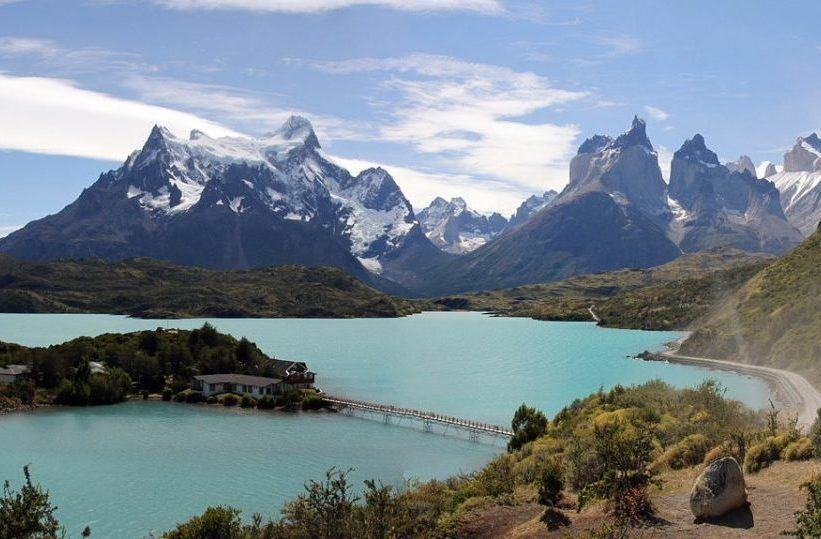
The Broke Backpacker is supported by you . Clicking through our links may earn us a small affiliate commission, and that's what allows us to keep producing free content 🙂 Learn more .
Chile is one long strip of awesome things to do, yet it can be surprisingly tricky to pick out a good itinerary, especially when the distances are way bigger than you may realize at first. Unless you have the readies to fly, you can lose huge amounts of time to travel.
As a general Chile travel guide, you want to decide whether you’re heading north or south. You may, however, also want or need to consider a Santiago based round route if you’re short on time or have a flight in and out of there.
Because Chile can suck up a lot of time, you need to know what you really want from it. Whatever you do, make sure you soak up the Latin vibes, drink wine, and go to at least one Chile National Park .
Best Travel Itineraries For Backpacking Chile
Places to visit in chile, top things to do chile, backpacker accommodation in chile, chile backpacking costs, best time to travel to chile, staying safe in chile, how to get into chile, how to get around chile, working in chile, what to eat in chile, chilean culture, some unique experiences in chile, final advice before backpacking chile.
- Buy Us a Coffee!
Below I have listed several itineraries for backpacking through Chile. All of them have an intended flexibility. Most of the places mentioned will have more than enough things to do if you have a little longer in Chile.
Backpacking Chile 10 Day Itinerary #1: Taste of Chile
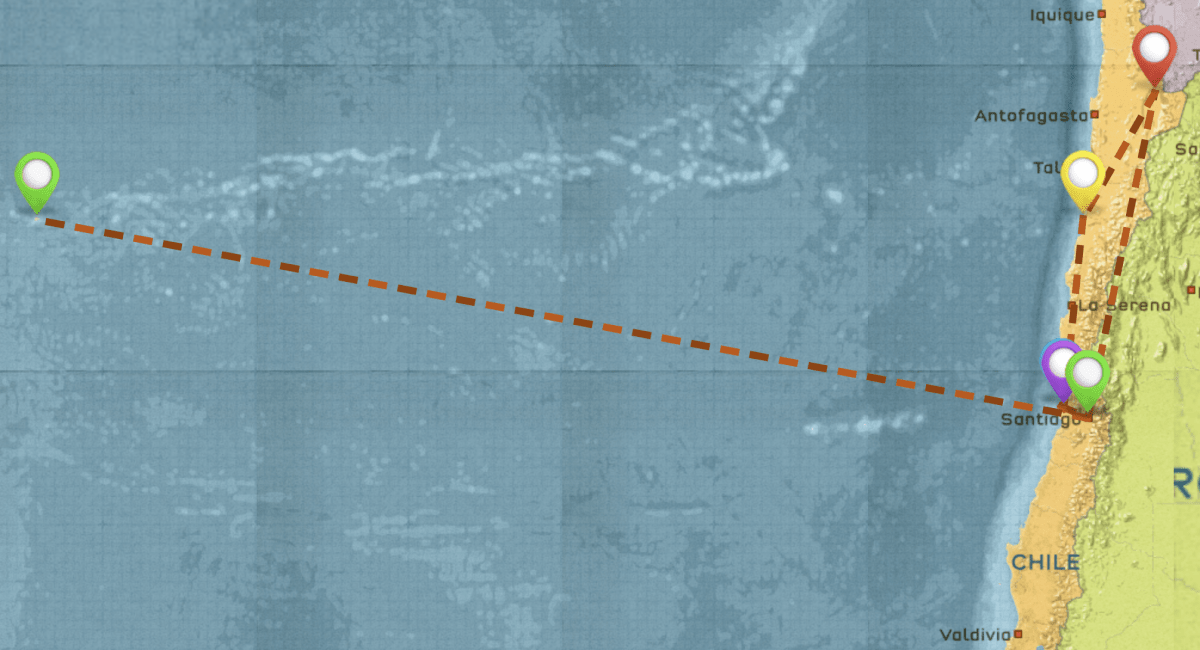
In this Chile itinerary, we start out in the capital city of Santiago.
Then we head on an overnight bus straight up to San Pedro De Atacama to explore the driest desert in the world. After Atacama, we head back down via Bahía Inglesa Beach and Ojos del Salado , the world’s highest active Volcano.
The final stop off before looping background to Santiago is the colourful art capital known as Valparaíso . This is a round-route based if you need to fly in and out of Santiago – the case for many backpackers.
If you have more time you could also fly out to Easter Island from Santiago. If your time is really tight, you could squeeze most of this Chile itinerary into one week. No matter how you use this route, it is mainly focused on making sure you get a real taste of Chile even if time isn’t on your side.
The other great thing about this one is that Santiago is a pretty kick-ass capital to kill time in if you end up with an extra few days.
Backpacking Chile 2 Week Itinerary #2: 1 Month in Patagonia
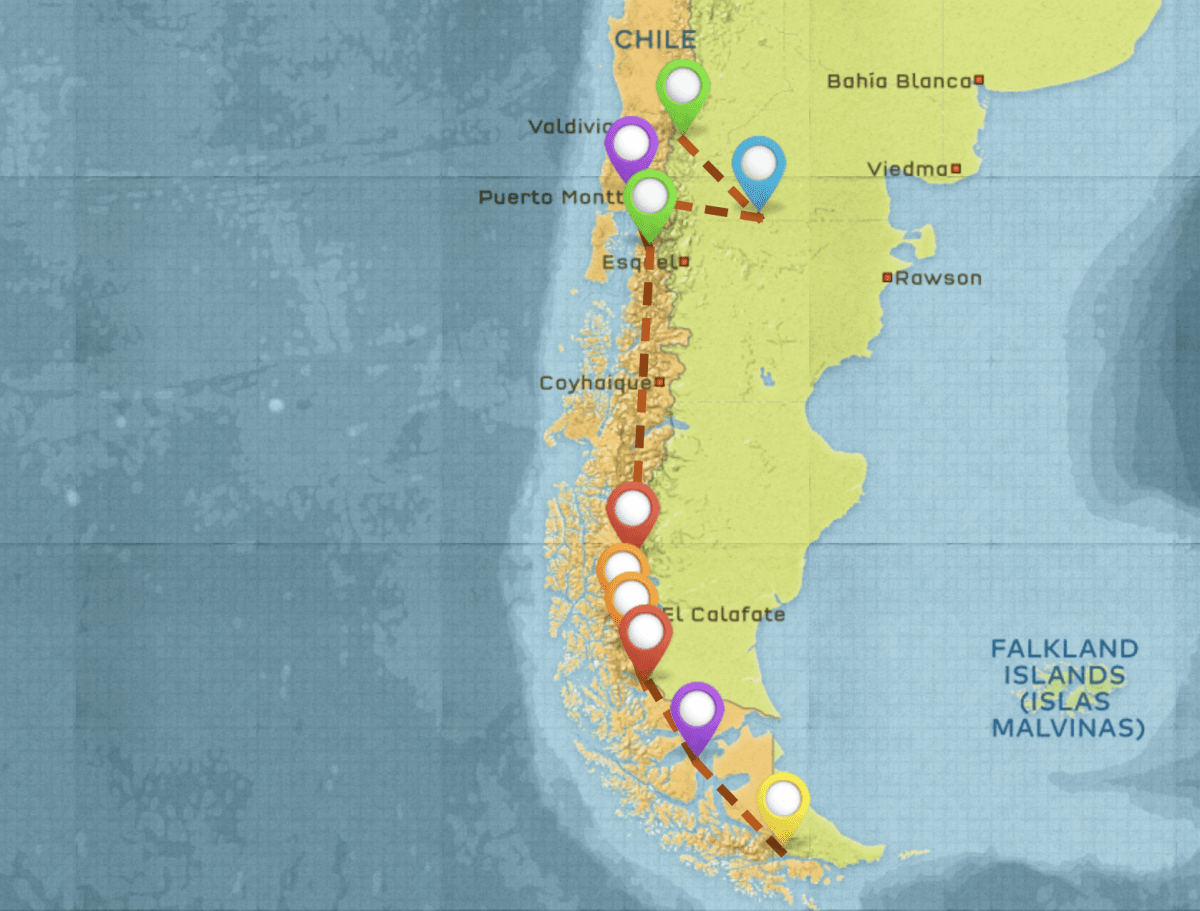
Patagonia is home to some of the most beautiful, majestic, and harshest scenery in the world. This Chile and Argentina itinerary will hit all of Patagonia: the impressive Andes mountains crowned with glaciers, waterfalls, glacial lakes and marshlands.
Some travellers fly into Ushuaia and work their way up, though many people go to Ushuaia to begin an Antarctica cruise or excursion. You can complete this itinerary in 2 weeks, if you cut out stops and include a lot of overnight buses, or perhaps just focus on the south: El Chatan and Torres del Paine .
Start in Chile’s capital, Santiago, and bus or hitchhike down to the private reserve, Pumalin Park . The longest hike in the park is Volcano Michinmahuida , a 24km trail (return) that takes between 8-10 hours.
Then make the long journey to El Chalten. This park is considered the hiking capital of Patagonia due to some incredible camping and trekking sites, like Cerro Fitz Roy and Cerro Torres. It is a part of Argentina though.
You can end your Patagonia trip by visiting Punta Arenas and Ushuaia to access the Tierra del Fuego National Park and Beagle Channel. Ushuaia is the southern-most city in the world and gateway to Antarctica.
Backpacking Chile 3 Week Itinerary #3: South to North
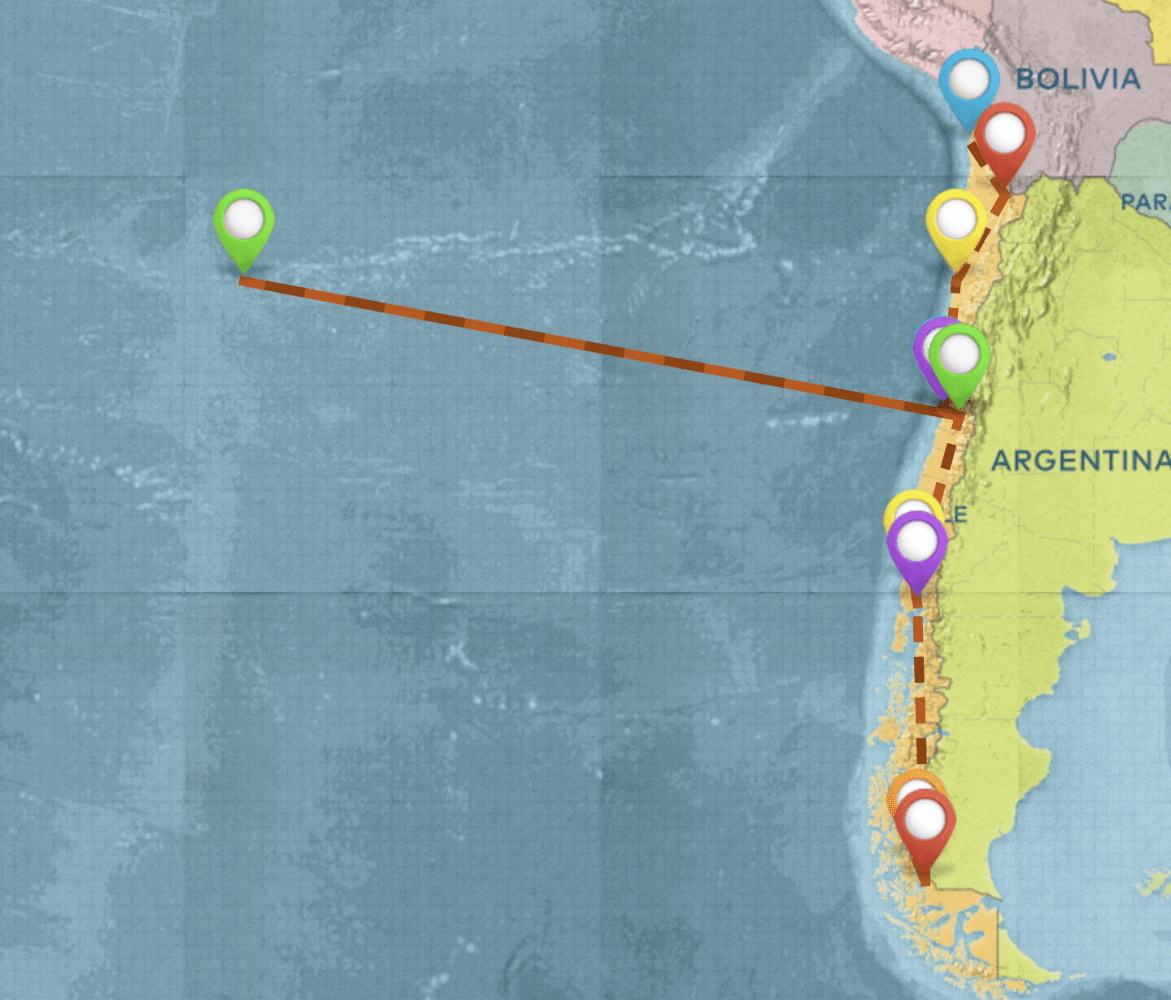
This is one of those ‘once in a lifetime’ outrageous trips that might hurt your wallet, but you’ll never regret it.
We’re going to lay this out as a trip from the south up to the north, but of course, it can be done the other way round.
We are kicking this Chile guide off in the famous Torres Del Pain e National Park by doing the O Trek, which takes around seven to ten days. From here you will need to head to Puerto Natales as a hub to get you to Puerto Montt .
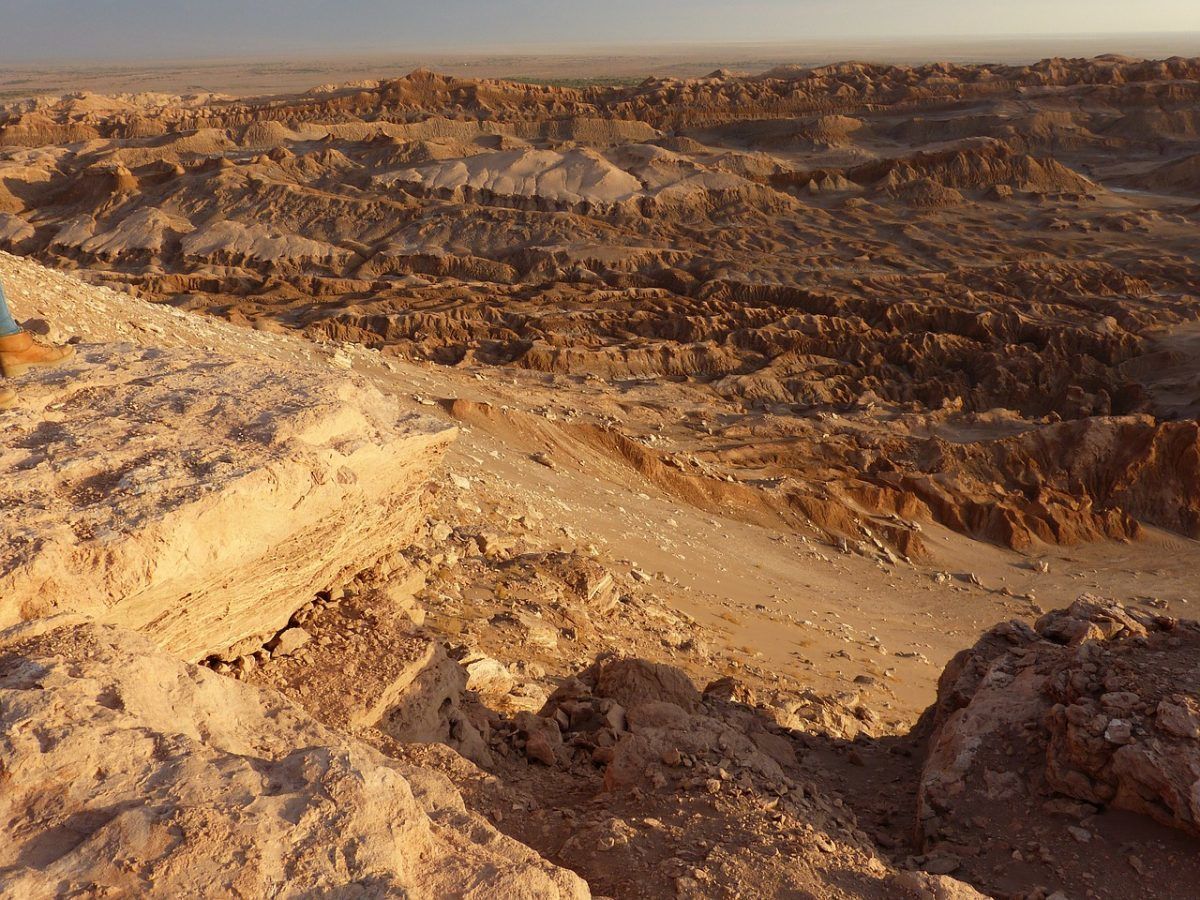
From here you can then head up to Osorno to make the most of volcanoes and thermal baths. The next stop is the capital city of Santiago where you can explore the vineyards and soak up the Latin vibes. Santiago is also the place from which you can fly to the mysterious Easter Island for around 5 days.
Once you arrive back in Santiago, you can head to the colourful Valparaiso. The next stop as you head north is Iquique for a bit of sandboarding before finally arriving in San Pedro De Atacama . This is an incredible place from which many people travel from to Bolivia in a jeep overland. It used to be around $40, but now you’re looking at $140 after much bartering and shopping around.
Want to save money on accommodation?

We got you. For reals.
Well, now that we’ve covered a few awesome Chile itineraries, I’ve listed some of the best places to visit in Chile below, complete with advice on what to do, where to stay, and how to get the best deals.
Backpacking Santiago
Santiago is a beautiful, exciting city with a sweet Latin atmosphere, great street food, and even better wine. It also has a bit of a boho vibe going on. Keep an eye out for what the students are up to. They’re often handing out flyers, but most of Santiago’s hostels can also hook you up with what’s happening that week.
When we were there, there was a cool party in the park with free yoga lessons, people dreading each others hair and everyone giving and exchanging clothes around. Totally hippy fest!
You’ll probably want to stay in Barrio Bellavista . It’s colourful, full of culture, has great places to chill, and has some of the best hostels in Santiago.
Plaza de Armas is another place to check out and hang out. They have some impressive restaurants around the square, ranging from cheap and tasty guacamole hot dogs to fine dining. Watch for speeches, marches, performers, and even dancers in the street, but don’t stand too still or look too British they may grab you for a twirl!

The best ways to get around Santiago are by walking, biking and using public transport. There are some great walking and cycling tours, but you’re probably just as well to pick a few places you want to see and explore yourself. If you like museums, don’t miss the ever classic Museo Historia Nacional and the ever fun interactive geekfest that is Museo Interactivo Mirador.
Allow at least one day to explore the city and one day to enjoy the wineries. Having been to quite a few, I would recommend Concho y Toro. You do have to pay a pretty steep $20 for the tour but it does include quite a bit of wine and you actually learn something on the tour. The other option is just to buy a few bottles and party in your hostel.
It’s worth noting that Barrio Bellavista is Santiago’s neighbourhood where the majority of travellers stay. It’s one of the most beautiful, action-packed and popular neighbourhoods, so you want to book in advance.
Backpacking San Pedro de Atacama
The stunning little town gives you access the driest non-polar desert in the world, incredible stargazing, and some badass sandboarding. San Pedro de Atacama is often the starting point for their trip overland through the salt flats into Bolivia.
The big question here is which things are better to do on tours and which are better to explore independently. Because there is so much to do and it is so spread out, you will probably want to plan well.
Make sure you make time to watch a sunset in San Pedro de Atacama. They’re out of this world, it really feels like the closest you’ll ever get to mars! You can get tours that take you out there, or you can do what I did and hop on a bike and get peddle out there to get it to yourself. If you do this, make sure you take an extra layer, as it suddenly gets shockingly cold when that sun drops.
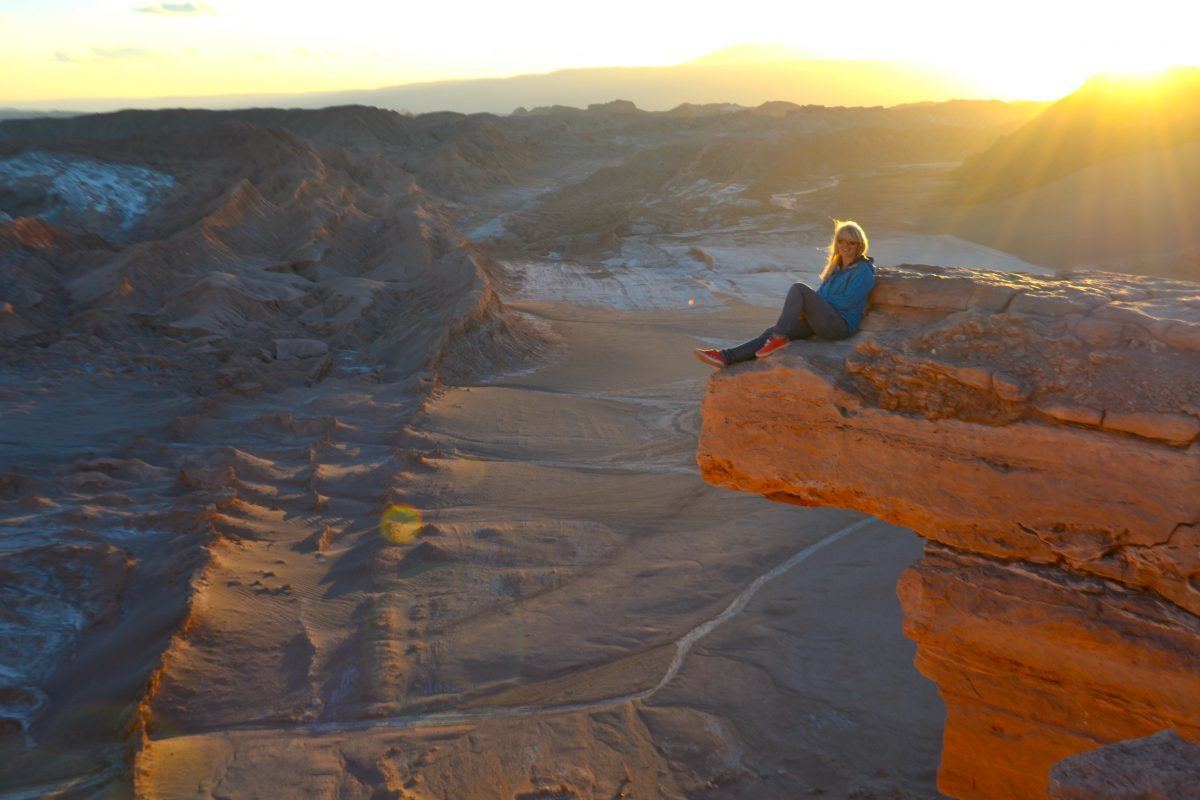
You can book so many cool trips from San Pedro de Atacama and this can be a great way to meet other adventurous backpackers as all the trips are pretty intrepid. Mountain biking, sand boarding, hiking, seeing the geysers exploring rainbow valley and moon valley. This place is an adventurous explorers Nirvana!
The red roads, whitewash buildings and colourful stalls really do make this a pretty dreamy little travel town to wander around. You’ll be spoilt for opportunities for great shots that get everyone on Instagram jealous!
Even the accommodation is part of the experience in San Pedro de Atacama. They have some pretty lux stuff with pools, which you may want to splash out on in the heat. But if like me, you want the best budget thing going, then you’ll still be pleasantly surprised at what you get for your dollar. There are loads of quirky mud hut style hostels with comfy beds and kitchens so you can cook for yourself. From rural, nomad, party, solo or for couples, San Pedro de Atacama offers some great hostel options . It’s worth having a browse and booking up early as it’s a busy little town.
Backpacking Bahía Inglesa
Windsurf, dive or just chill on the beach. Bahía Inglesa is a great option if you’re missing the coast. Now I’m not claiming it’s going to compete with the Caribbean Islands, but it does have a certain ruggard beauty to it. There is a mix up of both rocky and sandy beaches, all with beautiful clear teal oceans hugging the coast line. As you may imagine, there pretty the beach, the busier it tends to be. There are however so many options you will be able to find something you love.
There is a pretty awesome reason I’m suggesting Bahía Inglesa. What would you say if I told you, you could go to a beach one day and the highest active volcano the next!!!!
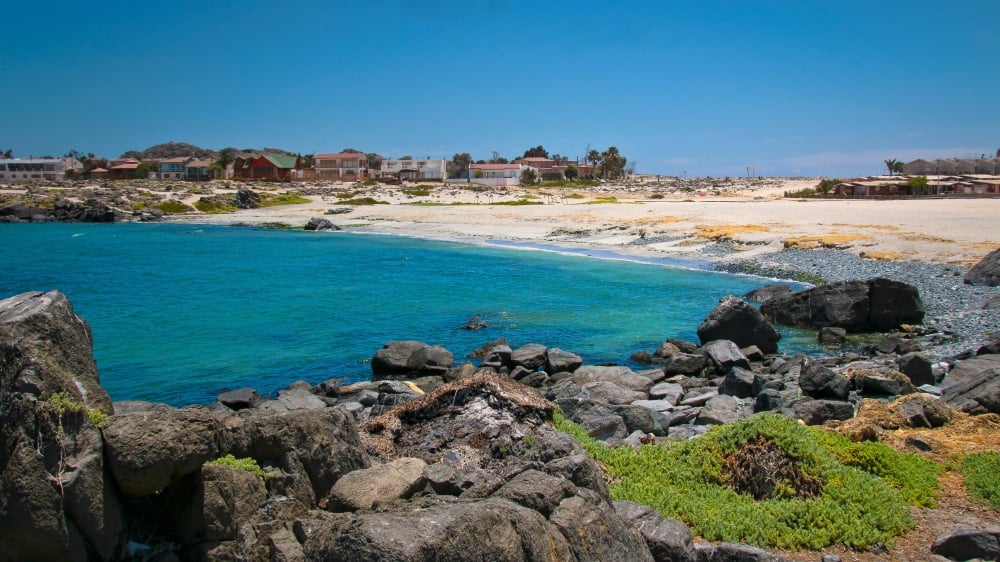
Well you can, I told you Chile was all about epic extremes! You can take a day trip to Ojos del Salado, which hugs the Argentinian border. If you can take a bit of extra time here as the landscape is insane!
Oh, and you can chill in a hot spring whilst you enjoy the view. This isn’t your posh spa style hot spring, this is your rugged as mother nature intended hole in the ground with a breathtaking view kind of hot spring.
I have pinned this location as Bahía Inglesa, but you may want to stay Copiapó as you will have a few more options. Plus it is easier access to both the beach and the volcano… now that’s a cool sentence, get your bed booked!
Backpacking Valparaíso
This coastal boho beauty is best known for its hills and colourful buildings, both of which are really worth exploring. It is also known as an art capital depicted by stunning murals and some of the most creative and philosophical graffiti you will ever see. You’ll find a couple of artsy Valparaíso hostels as well, perfect for backpackers that want to stay in the area for a bit longer.
You must take time to see the iconic Cerro Alegre Dare. I’m not sure I trust its structural integrity, but if you’re feeling brave you may like to use the rickety mountain elevator to get to the top. It’s an experience in itself.
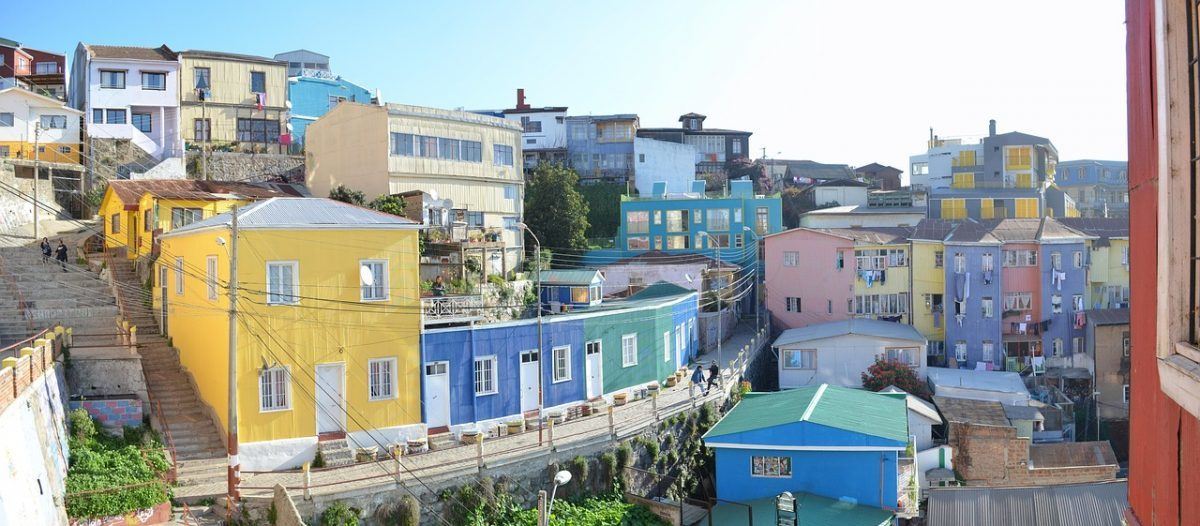
As way of celebrating surviving this you could go hunt down some local gelato. The locals love it, so you can find this delicious ice cream all over Valparaíso.
As you may expect in a place this hip, the hostels are some of the best you’ll stay in and they’re impressively cheap, make sure you have a quick look and pick one with a good vibe.
Backpacking Iquique
Iquique is one of those places where you can go cosmo or go crazy. You can relax in the city and chill on the beach whilst sipping some great cocktails. If this is your scene be sure to try the famous Terremoto cocktail, which translates as earthquake, so you can imagine the hangover. If you’re more crazy and cosmo, you can paraglide, surf and sand board till you drop.
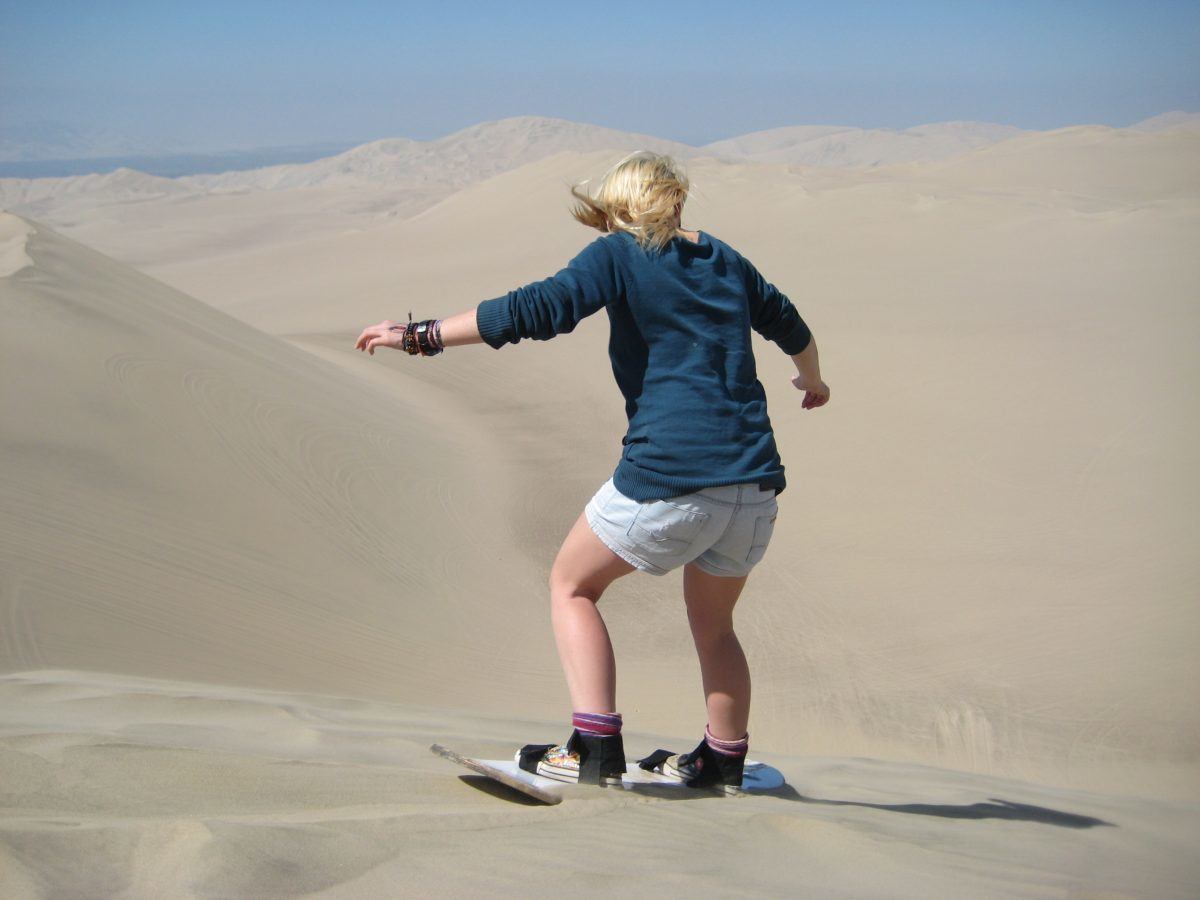
In my opinion, the sand boarding is the main reason to stop in Iquique. There’s just something awesome about strapping yourself to a board and hurtling down a giant sand dune! You can book sand boarding through some hostels, or a company called Denomades can also help you arrange it.
There are some great hostels around Iquique. If you are looking to meet people and get a good balance of party and peace, then Feel Iquique Hostel is definitely worth checking out.
Backpacking Osorno
Osorno is a great place to stop. The city itself isn’t especially special, just a typical latin american city with the usual questionable clothes stalls and fried chicken on every other corner.
So why stop here?
There are a few beautiful lakes to trek and camp around. There are also some picturesque archetype volcanos to explore, just like the ones you drew as a kid. Once you get outside the city, everything about the area screams intrepid adventure. You are only about an hour away from Puyehue National Park, which is a great way get into and explore the Andes Mountain Range.
The waterfalls, thermal springs, and evergreen trees make for picture perfect hiking. Just watch out for the pumas! You can see it as a warm up and preparation for heading further south into the depths of Patagonia.
If you’re interested in thermal springs, it’s worth knowing that there are a few spas and hot springs in the area and that they are usually referred to as Aguas Calientes. Probably the most satisfying one is in Puyehue National Park because you can enjoy it after a long hike!
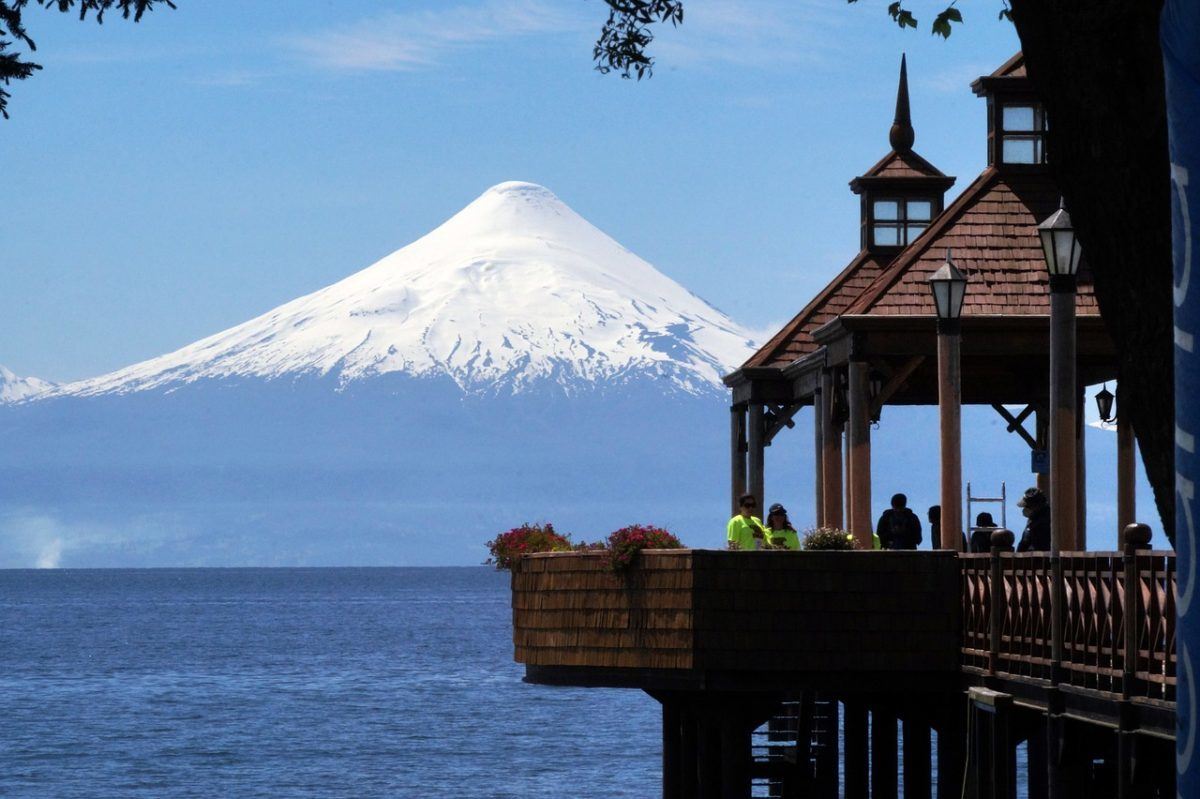
On a practical note, Osorno is also a great hub for crossing over into Argentina if you are heading down into Patagonia overland.
As it’s not really a tourist destination it can be tricky to find somewhere to stay. Hostels don’t seem to really be a thing, but there are a few local guest houses.
Backpacking Puerto Natales
Puerto Natales is a hub where trekkers prepare to trek and camp in Torres Del Paine National Park. It’s an exciting place as everyone is either stoked about starting an intrepid personal challenge, or feeling pumped and triumphant as they have just finished one.
The thing many overlook, however, is that the town is actually quite nice within itself. It has a beautiful dock for enjoying sunsets and few great bars to hang out and meet other intrepid travellers. Erratic Rock is a great hub for sorting your kit and they host a meeting every day at 3 o’clock that helps you prepare for your adventure. There are a couple of nice hostels in Puerto Natales too, where you can rest your head and recharge before your next adventure.
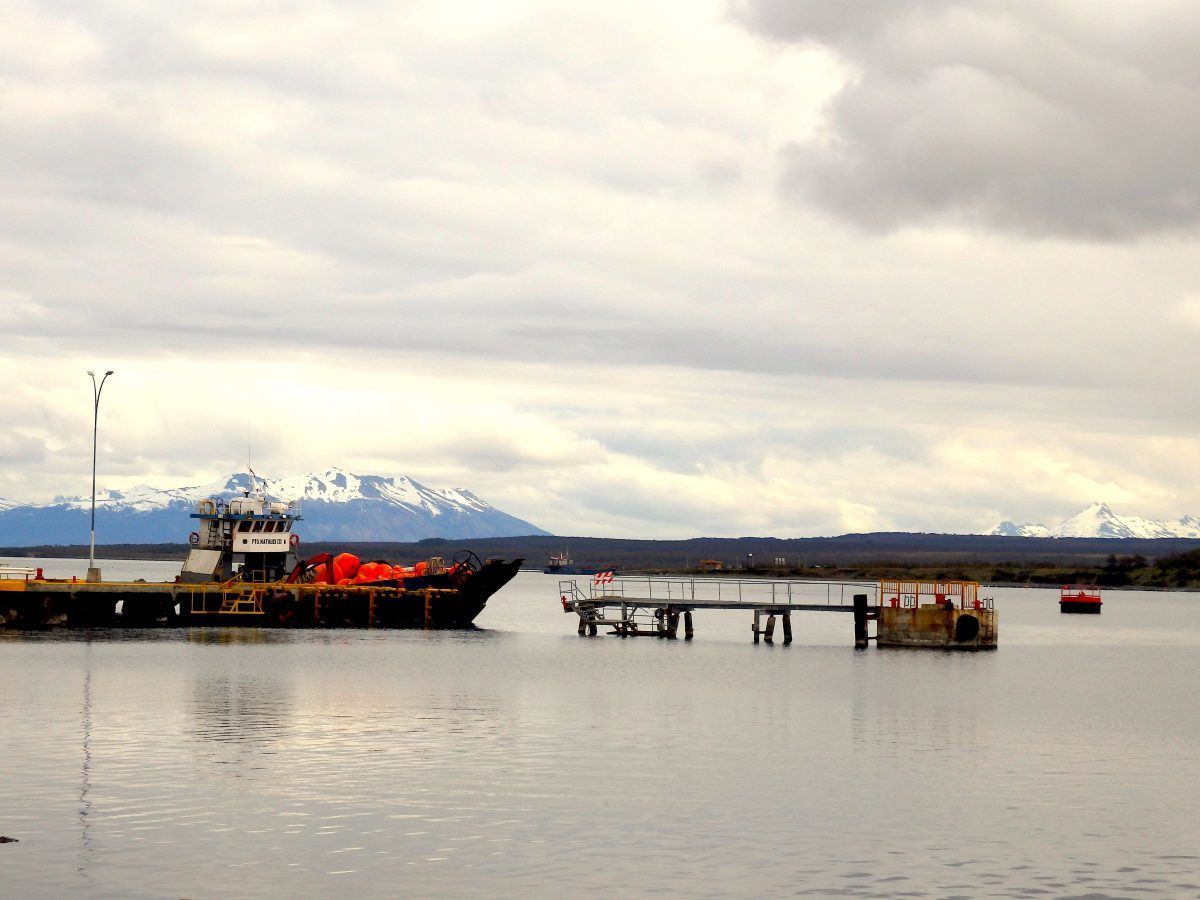
Now don’t get me wrong, I love camping and cooking meals in the wild, but you might want to use Puerto Natales as somewhere to get a big send off meal before you have to carry everything you want to eat.
There are quite a few places to stay in Puerto Natales, but make sure you decide on a good place you stay to make some travel buddies for the trek. Where you stay can really affect the kind of people you’re going to meet.
Backpacking Torres Del Paine National Park
Chile is home to Torres Del Paine, one of the greatest national parks on the planet! This is where adventurous travellers dreams come to life!
The famous “W” trek is the best trek for those of you who are a little short on time, but still want an outrageously stunning and challenging trek that will leave you with memories that will last a lifetime! It can be done in as little as 5 days.
The “W” trek is, however, only one of the three main treks through this epic national park. The other two routes are known as the “O” trek and the “Q” trek; all of the names are based on the shape of the letter. They vary in length, so the main factor in choosing a trek is simply how much time you have.
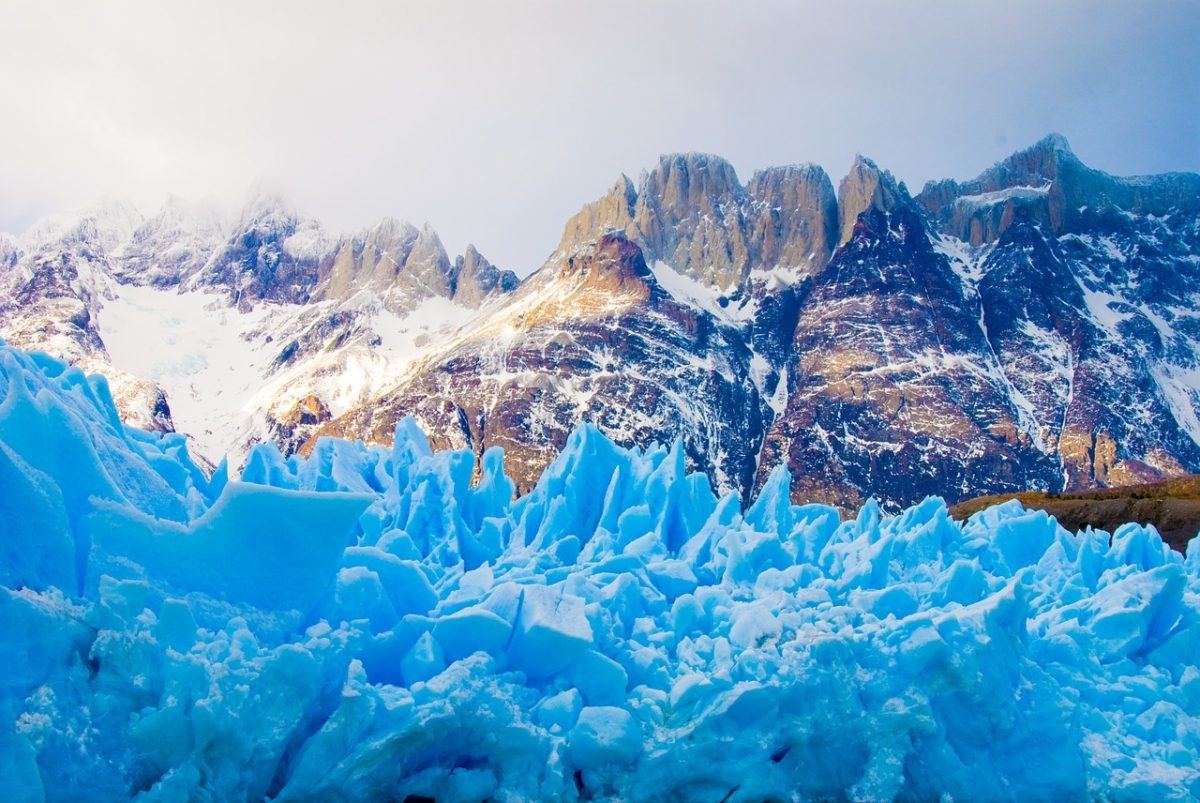
The “O” and the “Q” take 7 to 10 days to complete. Obviously, this all depends on your fitness level, and how you want to pace yourself; it’s a challenge not a race. It’s important to make time to actually take in the scenery and connect with where you are, especially when it’s somewhere as beautiful as this! If you hike the trek from west to east, you will trek through a range of forests, over ridges, around lakes, and pass glaciers until you reach the iconic three peaks of Los Torres.
Do note that over the winter season the longer routes are usually closed, so make sure you check the routes when planning.
So, you know me, of course I’m going to say that camping is the best way to do this! If, however, you do want a cushier option there are refugios along the way, which are basically simple cabins that you can stay in. You can even buy groceries and food along the way, but it is really expensive. Your best bet is to be prepared before you set off on the trek.
Some campsites charge and some are free; it’s worth planning your trek based on this. If you’re feeling flush and want luxury, you can book some accommodation on the trek before you set off.
Backpacking Puerto Montt
People end up in Puerto Montt by ferry from Puerto Natales. There are bus options to and from Osnoro, but it is pretty cool take take a ferry to Puerto Montt. The ferry is no frills, but the views are pretty outstanding and lets be honest you know it just sounds cool jumping on a cargo boat!
When you get to the city of Puerto Montt itself you’ll probably find it more built up than you would expect for somewhere seemingly so remote.
I guess civilization always feels particularly strange after an remote intrepid adventure. There is a lot going on in the city itself if you want to visit a museum, go out for a meal or chill in a cafe. It’s not the cheapest though, so you may not want to hang around in the city too long.
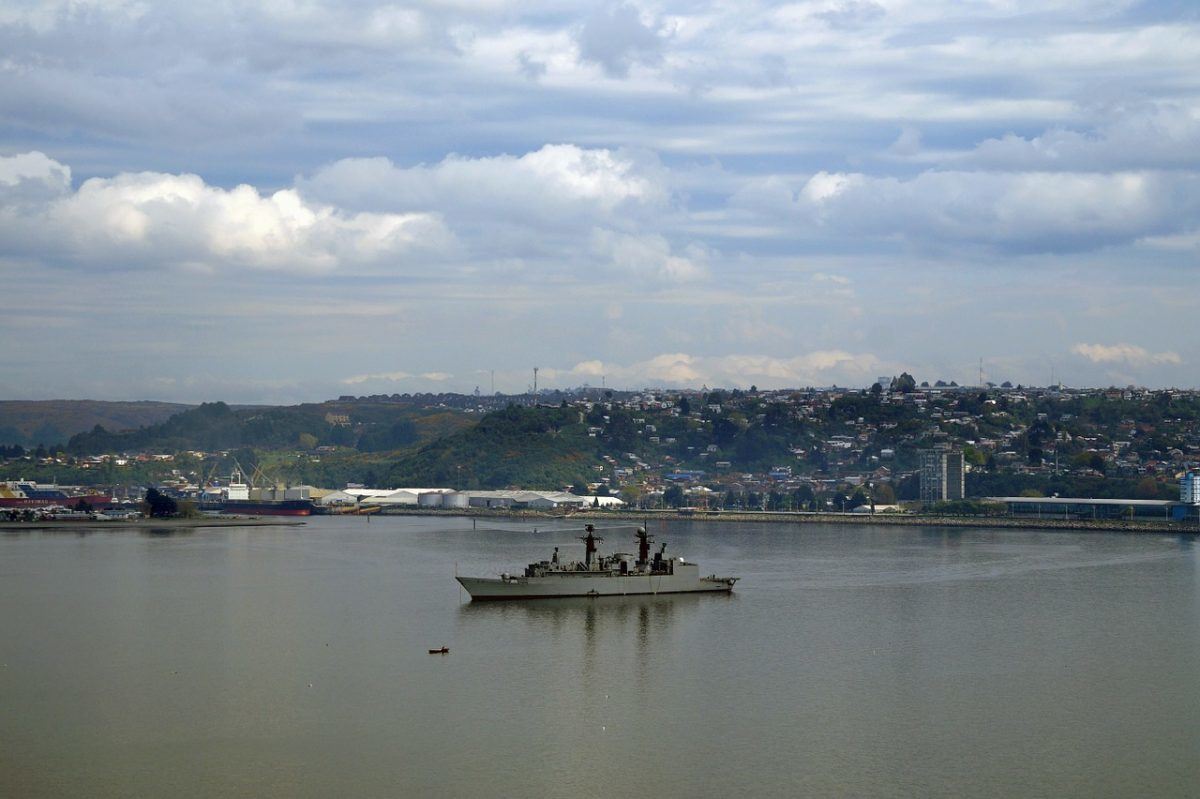
The best thing about Puerto Montt is that it is surrounded by beautiful waters, mountainous landscape and the odd volcano, it’s a beautiful place to explore. If you are a bit of a national park fanatic, you’ll find you are spoilt for choice in this area.
If you still have some trekking left in you, I would recommend either Vicente Pérez Rosales or Alerce Andino National Park. Both are stunning in their own way.
It’s tricky to find cheaper accommodation here. You may want to consider Couchsurfing or Airbnb. Even these can be a little tricky, so if you aren’t up for guest houses it could be an idea to book a dorm bed in advance.
Backpacking Easter Island
Ever fancied exploring one of the most isolated island in the world? Throw in some giant mysterious heads, super friendly locals, beautiful beaches, and a really impressive volcano to trek around and you truly have one of the most kick ass places on the planet! There really is no place like it.
LAN airlines is the main airline to get you there. Brace yourself for the bad news though: on average you now pay around $600 for a return flight. Cost really is the only downside of visiting Easter Island, but if you’re resourceful you can do it for a lot less than the average traveller.
For a start, you can get flights cheaper if you book well in advance and are flexible with your days. It seems that once you stay for around a week plus, the prices drop down a little. This may however feel like catch 22 because Easter Island is not a cheap island to stay on.
My solution is to be well prepared. Fill your backpack with pasta, camp, and explore everywhere independently. Not only is this a fun way to do most things, but in this case it gives you access to one of the most unique places on the planet for a tighter budget than most will manage.
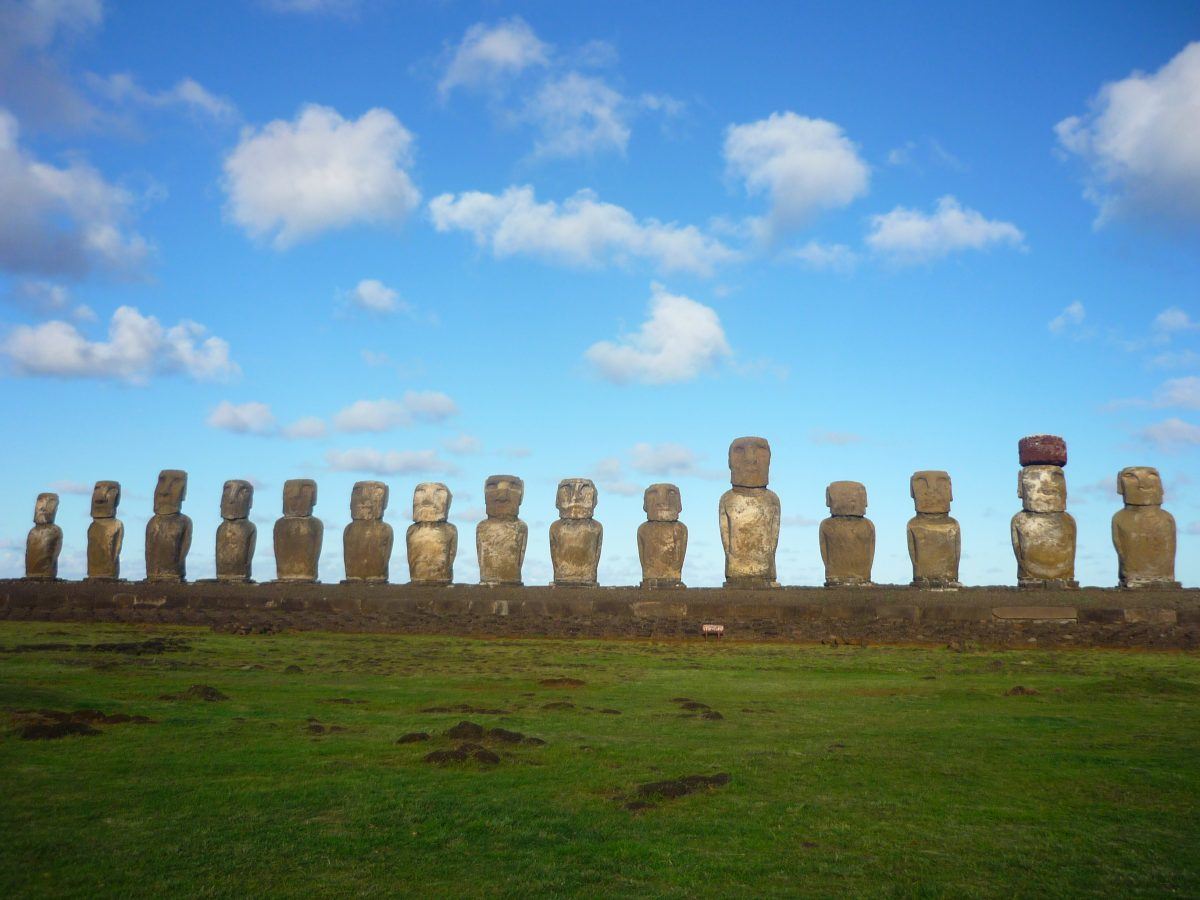
Wild card: you could actually save money travelling business class. A few people have reported saving money by flying business class. Yes, you read that right, it is always worth thinking and looking outside the box when trying to save money, especially on something as niche as getting to Easter Island.
When you get to the island there is loads to do, more than you might expect. As well as the iconic Moai heads that are spread out all over the island, there are some interesting underground tunnels and caves to check out.
Make sure you take time to trek round Rano Kau, an impressive extinct volcano. And don’t stop there; trek along the rugged coastlines, and soak in the unique feeling of being thousands of miles away from rest of the world.
You can surf, scuba dive, horse ride, or kick back and watch one of cultural dance shows. I know the last one might sound a bit touristy, but its actually pretty cool to watch. One way to enjoy the island is to rent a scooter and explore. This way you can see everything you want to see.
Make sure you make time to enjoy a sunrise and sunset at least once on the island. Just take a moment and picture waking as the sunrises, unzipping your tent, and looking out across an ocean, knowing that there is no one for thousands of miles in any direction. Now get yourself organised and get to Easter Island.
As mentioned, you can camp, but there are also hostels and airbnbs on the island that are worth checking out.
Getting Off the Beaten Path in Chile
Chile isn’t really on the beaten path to begin with. Arguably the capital, desert and parts of Patagonia do get quite a bit of tourism, but it’s still very little compared to so many places that are half as impressive.
The main way to really get off the beaten path in Chile is to trek independently through national parks you haven’t heard of before visiting Chile. The longer you trek for, the further from the crowds you get.

We’ve tested countless backpacks over the years, but there’s one that has always been the best and remains the best buy for adventurers: the broke backpacker-approved Osprey Aether and Ariel series.
Want more deetz on why these packs are so damn perfect? Then read our comprehensive review for the inside scoop!
By now you get the idea: Chile is full of epic bucket list experiences that many people only ever dream of doing. It is hard to travel here on the cheap, but if you’re resourceful, resilient and love adventure it is totally possible.
In case you are still struggling to prioritise what to do on your trip, I have put together the top 10 best things to do in Chile.
It’s a pretty exciting list and there really are some things you just shouldn’t miss out on if you’re over on this side of the world.
1. Watch the Sunset over the Moon Valley
There are loads of adventurous things to do in San Pedro De Atacama, but the one you can’t miss out on is watching the sun go down on what will look like mars.

Even if you just did this for the Instagram shot it would be worth it! The landscape is so dramatic it creates an atmosphere and leaves you feeling like you have actually been to another planet. There are loads of tours that will take you out here or you can hike or bike it yourself. Make sure you take an extra layer though. When that temperature drops it gets cold really quickly.
2. Hike up an Active Volcano
You know you want to do this and then live your life knowing you were bad ass enough to climbing an active volcano! Chile has around 500 active volcanoes, so you are pretty spoilt for choice.
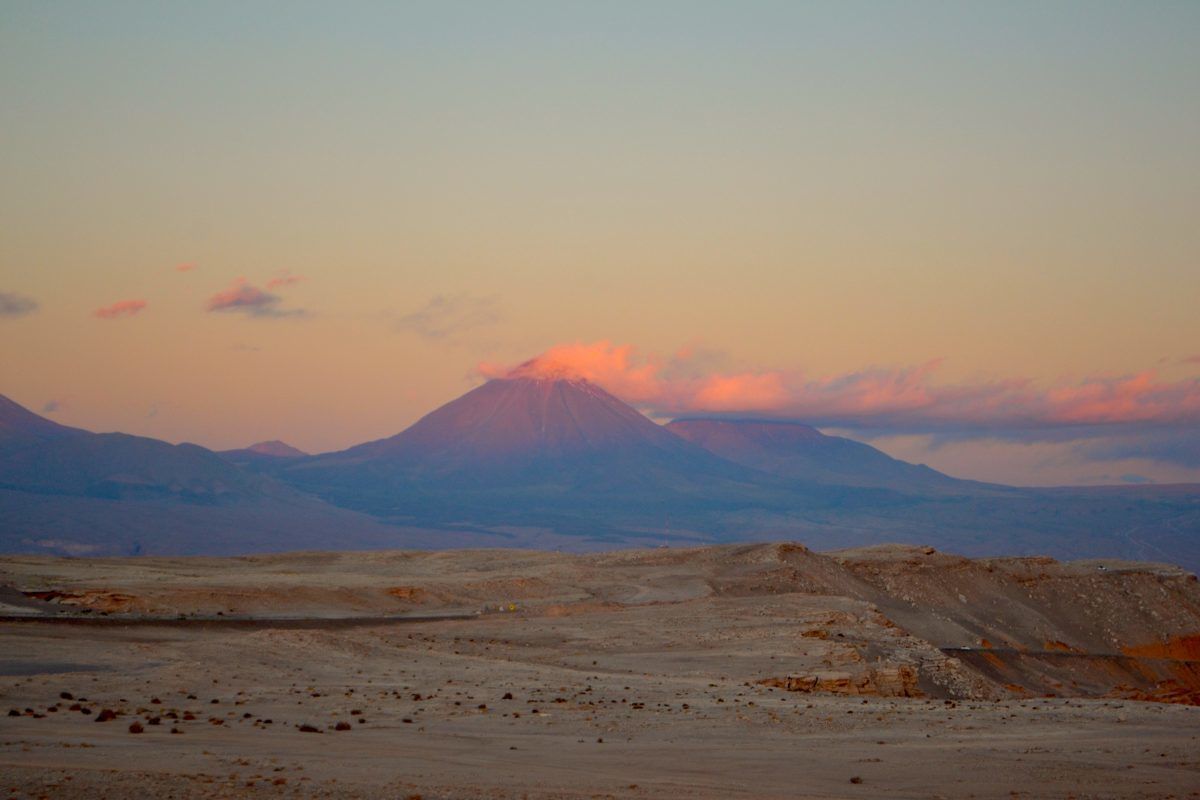
If you’re feeling brave you could opt for exploring the highest active volcano in the world and get yourself to Ojos del Salado. It’s worth noting this can be pricey if you want to go all the way up Ojos del Salado.
3. Try Pisco at its best
Chile is known for its pisco, so make sure you make the most of it whilst you’re here. They make loads of different cocktails from pisco, but the most famous is pisco sour and it is definitely worth trying.
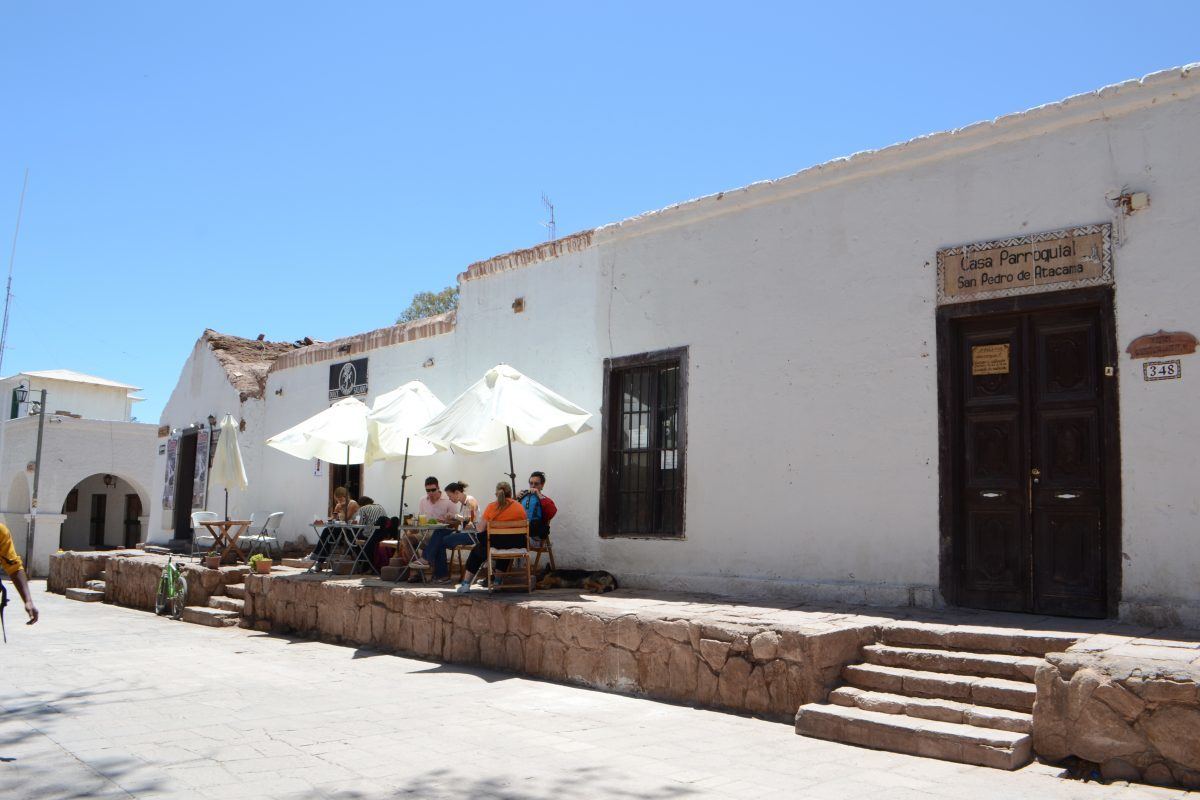
4. Visit the Mysterious Easter Island Heads
This really is one of those once in a lifetime bucket list trips you should do if you can hustle the money together! Also known as Rapa Nui, this incredible island is home to 887 massive, mysterious statues that will capture your imagination.
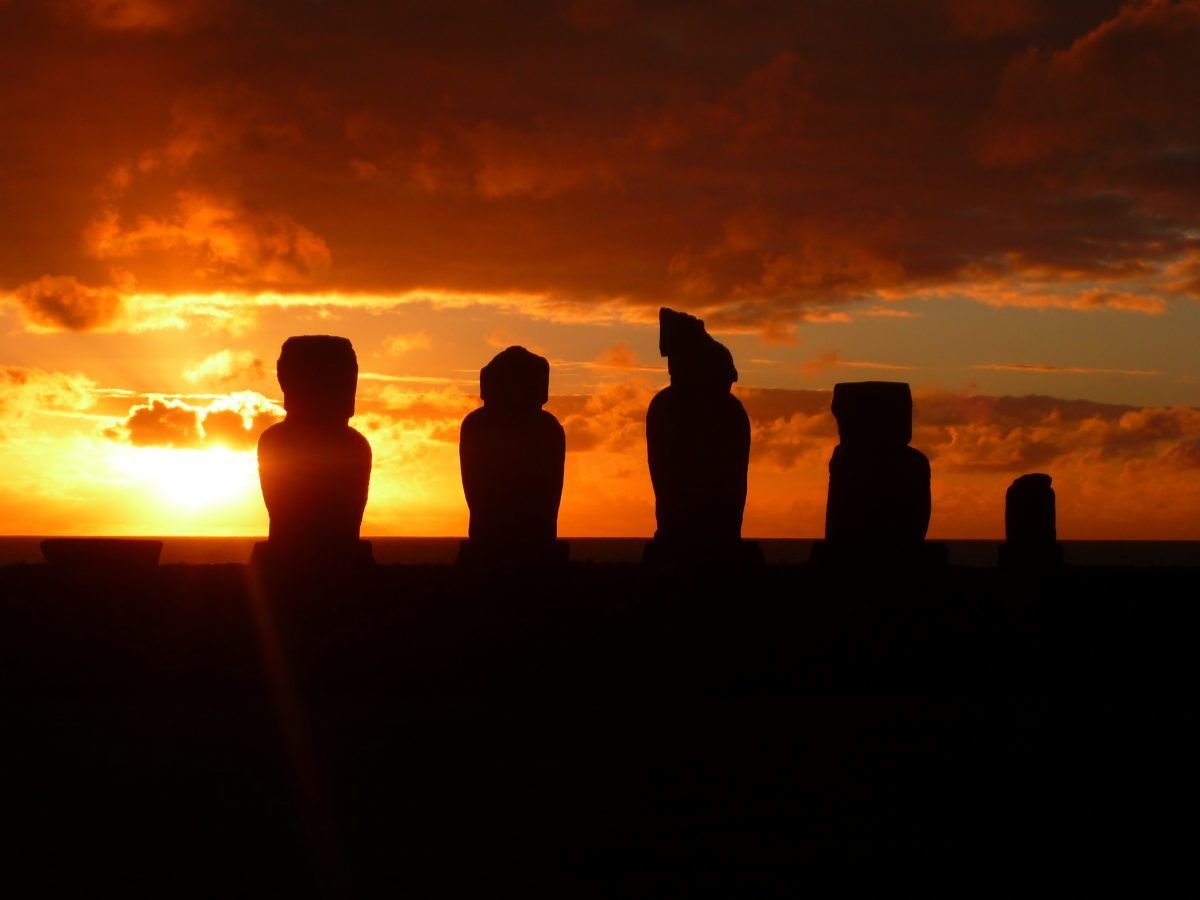
It is worth noting that they have some pretty cool festivals throughout the year. Although it’s more pricey to visit during this time, it’s worth checking out.
5. Trek for days through Patagonia
There is a reason everyone raves about trekking here and to be honest, until you go, you just won’t get it.
No one captures the true beauty of this place with a camera.
Nothing beats that feeling when you reach the end and know you have carried your own gear for days, survived your own camp cooking and not lost the track. Whatever season you go in, Patagonia always beautiful in its own way.
Check out Globemad for loads of information on trekking and ice climbing here.
6. Relax in a Hot Spring
There are so many hot springs across this stunning and unpredictable land. If you love a good hot spring you can easily get to more than one. There are a few posh ones, but I reckon the best ones are the rough and ready middle of nowhere ones.
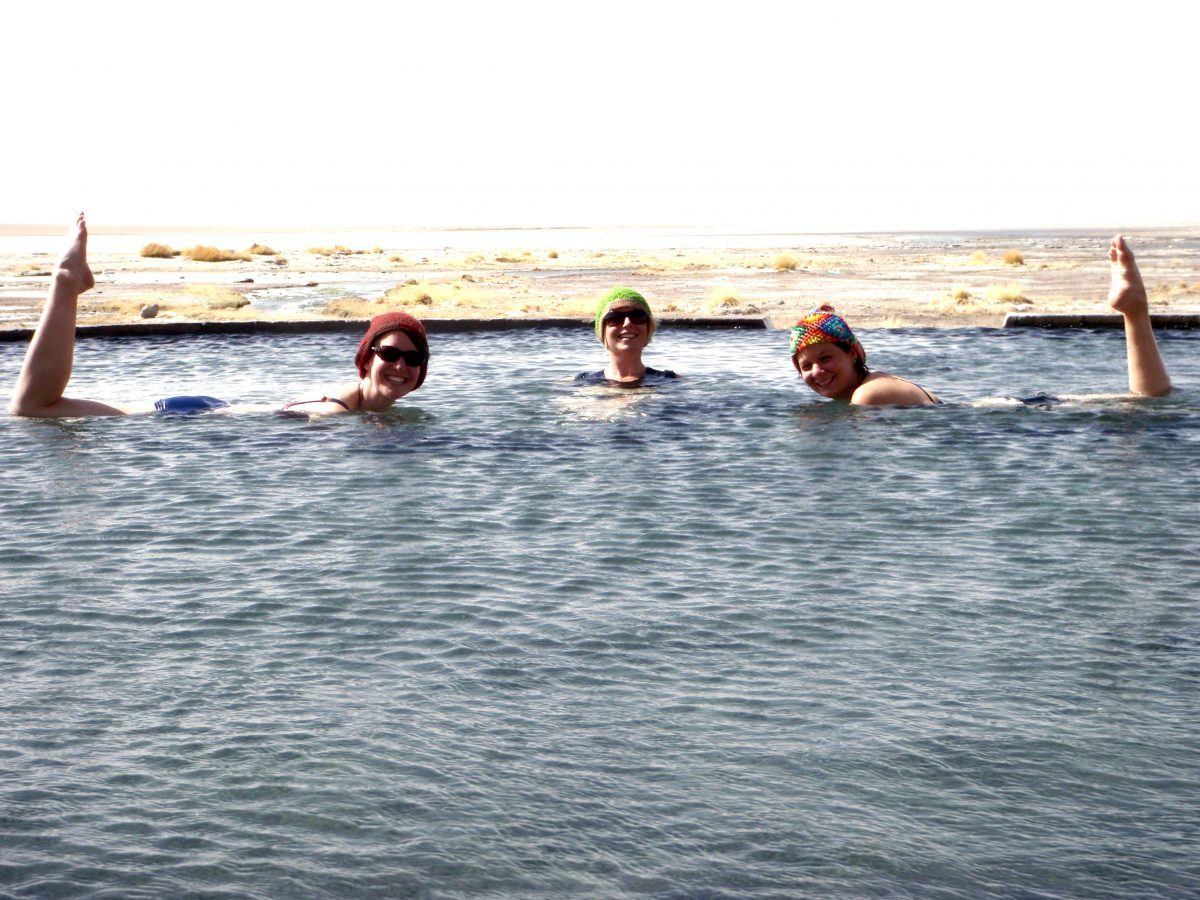
It’s just fun and surreal to be upto your neck in a natural hot spring whilst keeping your head warm with a much needed woolly hat on a freezing plateau or rugged mountain side.
7. Star Gaze in the Desert
There are many places to star gaze across Chile, but the Atacama is probably the best. You can wrap up warm and walk or bike out into the desert to enjoy the stars. We took head torches, a hot flask, and cycled until there was no more light pollution from San Pedro. You can also book onto tours where they’ll teach you loads and even join a group that takes you to an observatory.
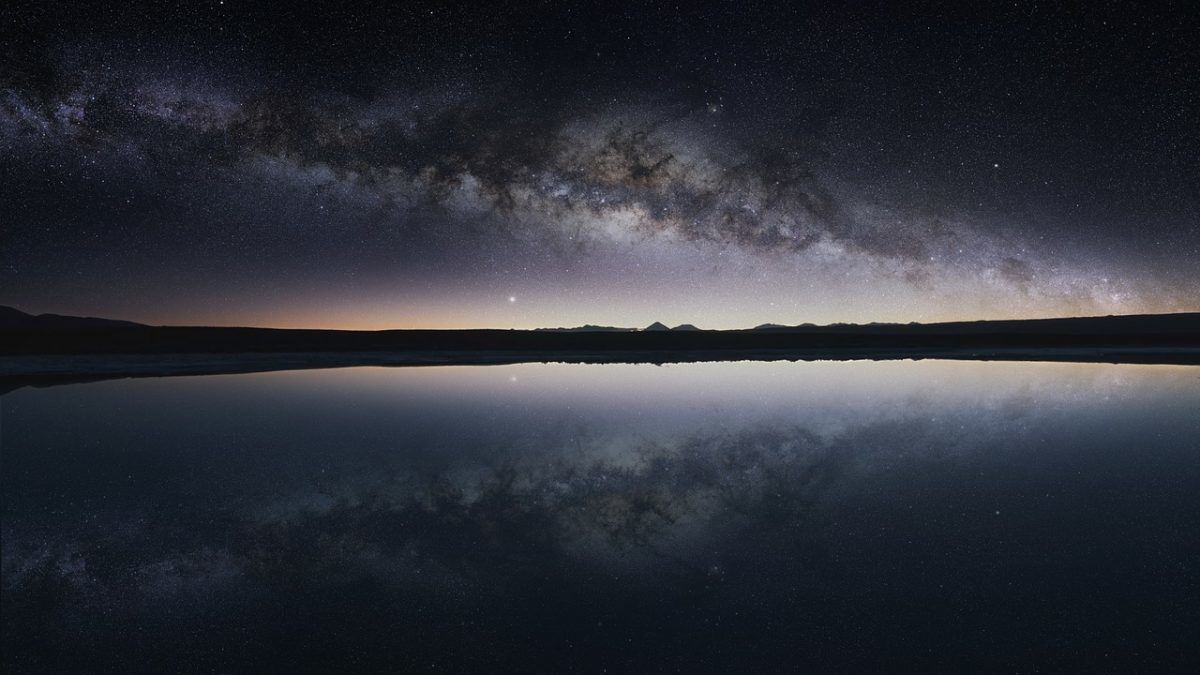
8. Explore a few National Parks
There are so many national parks in Chile, 36 to specific. If you’re all about the adventurous intrepid travel, then making time to explore a few national parks is a must.
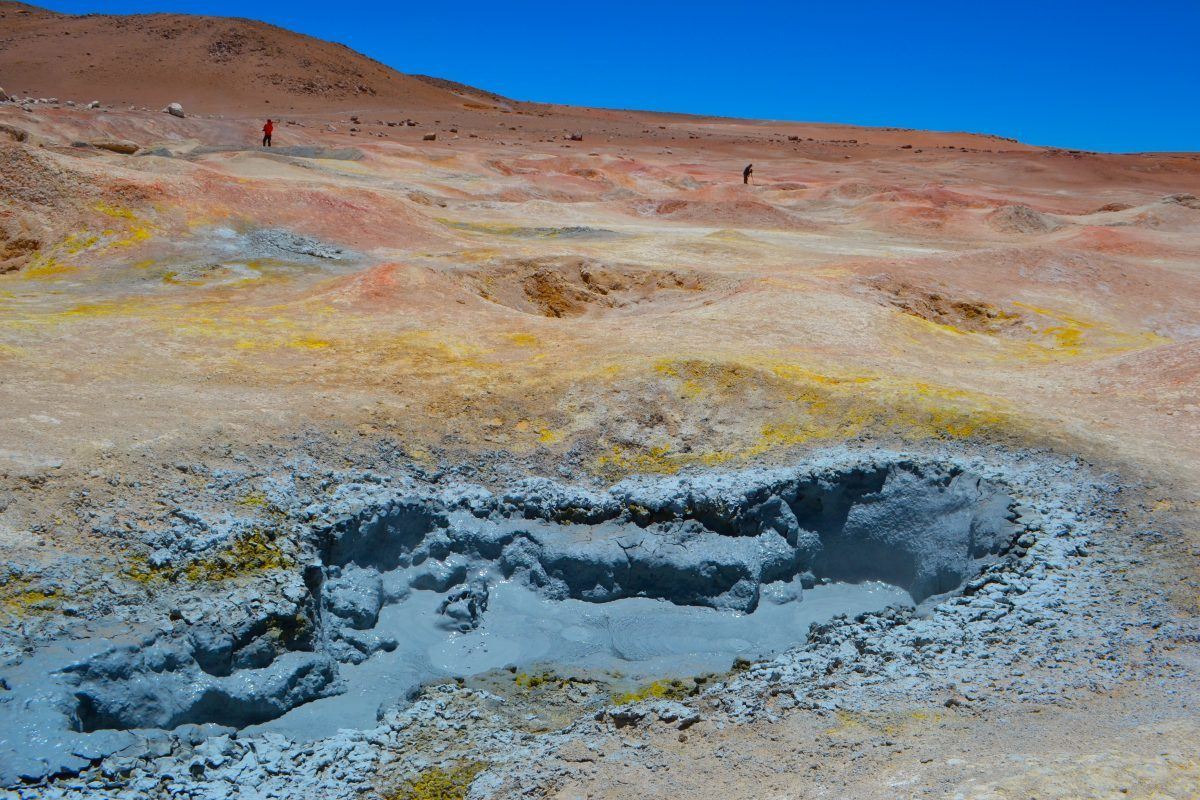
Radal Siete Tazas National Park has some stunning pools and waterfalls to explore. If you want more mountainous challenging treks, Conguillío National Park is more worthing visiting. Really you’re spoilt for choice.
9. Explore the Colourful Streets of Valparaiso
This town is iconic for good reason. There is so much to see here as you explore the colourful streets and high hills. You need at least a day just to scratch the surface of the artwork and graffiti that makes this place so unique.
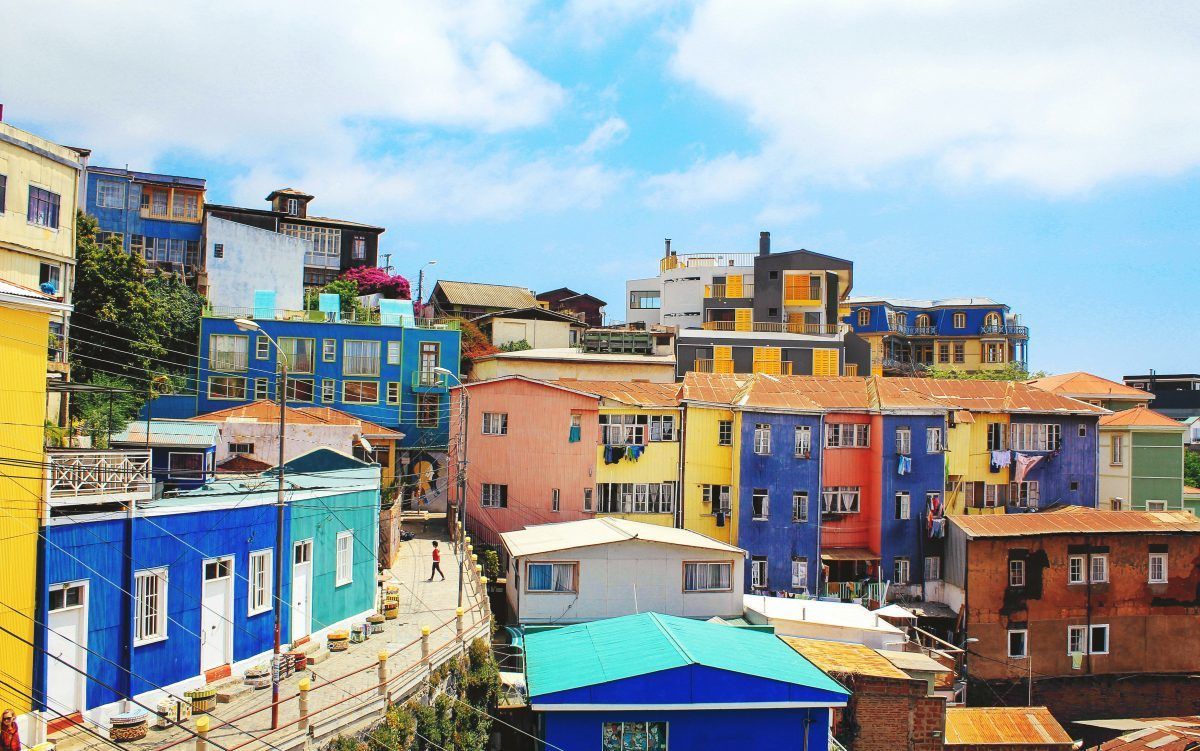
10. Get Tipsy at a Winery
This one goes without saying. When you visit a country that has some of the best wine on the world you’ve got to take time to taste it! A lot of it.

Most hostel offers wine tours, but the cheapest way is to make your way out to somewhere like Concho Y Toro on public transport and book yourself on the next tour round.

Wanna know how to pack like a pro? Well for a start you need the right gear….
These are packing cubes for the globetrotters and compression sacks for the real adventurers – these babies are a traveller’s best kept secret. They organise yo’ packing and minimise volume too so you can pack MORE.
Or, y’know… you can stick to just chucking it all in your backpack…
Naturally, Chile’s capital, Santiago, has loads of great hostels. Chile, however, isn’t overrun with backpackers, so there are less hostels than you might think. We have hunted out some of the very best for you. And don’t panic. You can always use Airbnb.
These are becoming increasingly popular in Chile. Airbnb, if you don’t already know, is an awesome way to make your trip more authentic! You can find some awesome apartments and home-stays for cheap prices. Otherwise, Couchsurfing is the cheapest way to go, and a great way to meet other travellers; however, they can be hard to pin down in Chile, and chances are you will need to be pretty good at Spanish. It’s always worth checking out the profile, which will say what language they speak!
The Best Places To Stay in Chile

It is really tough to keep the cost down in Chile. It can be done, you just have to drop your comforts and be resourceful.
Unless you wild camp, eat beans, hitchhike, and only visit places in the wild (that no one has heard of), you’re not going to travel Chile on $10 a day. Still, these methods can keep your costs quite low and allow for some room to splurge on some great activities.
More realistically, however, you’re looking at around $35-$50 a day.
One of the best ways to save money is to travel on the outer fringes of the warm, more popular months of November to March.
A Daily Budget in Chile
Couch Surfing is the best way to meet locals and stay for free. There are some great couchsurfers in Chile; just make sure you give them plenty of notice. They seem to like to be organised.
Camping is really popular in Chile and the campsite fees tend to be minimal. Sometimes it is worth using them for those extra facilities. Otherwise, there are plenty of options to wild camp for free. Just make sure to leave no trace !
On that note, it is easy to spend upwards of $100 or more in Chile if you are booking private rooms, eating out often, and booking a lot of tours.
Money in Chile
The local currency is Chilean Pesos (CLP). Find out how much your money is worth today by using the up-to-date converter below.
ATMs are widely available everywhere, but you can expect a withdrawal fee for international bank cards, which is why I travel with a debit card that refunds me for transaction fees.
Visa and Mastercard are widely accepted in Chile. Always have cash on you when backpacking Chile and visiting smaller, family-run places! Many large stores in Chile accept cards, but a lot of out-of-the-way locations will only accept local currency.
Travel Tips – Chile on a Budget
- Camp : With plenty of gorgeous places to sleep out, Chile can be a great place to camp in the rural areas. Check out this post for a breakdown of the best tents to take backpacking. Or, if you’re feeling really adventurous and want to save some cash, consider picking up a backpacking hammock. You might save one or two dollars that way.
- Cooking : If you are camping a lot or really want to save some cash, it could be worth bringing a portable backpacking stove so you can do some of your own cooking.
- Couch surf : Check out Couchsurfing to make some real friendships and see this country from the perspective of locals.
- Hitchhike : Where appropriate, hitchhiking is a great way to save money on transportation costs.
- Pack a travel water bottle and save money every day!
Why You Should Travel to Chile with a Water Bottle
Plastic washes up on even the most pristine beaches… so do your part and keep the Big Blue beautiful
You aren’t going to save the world overnight, but you might as well be part of the solution and not the problem. When you travel to some of the world’s most remote places, you come to realise the full extent of the plastic problem. And I hope you become more inspired to continue being a responsible traveller .
Plus, now you won’t be buying overpriced bottles of water from the supermarkets either! Travel with a filtered water bottle instead and never waste a cent nor a turtle’s life again.

Drink water from ANYWHERE. The Grayl Geopress is the worlds leading filtered water bottle protecting you from all manner of waterborne nasties.
Single-use plastic bottles are a MASSIVE threat to marine life. Be a part of the solution and travel with a filter water bottle. Save money and the environment!
We’ve tested the Geopress rigorously from the icy heights of Pakistan to the tropical jungles of Bali, and can confirm: it’s the best water bottle you’ll ever buy!
Whether you’re exploring the Atacama desert, Santiago, or Patagonia, the summer season – more or less – runs from November to March as it is in the summertime for the southern hemisphere, therefore, high season for most places.
If you’re heading to Patagonia, summer is arguably the best weather to camp in. However, you are then competing with the crowds, especially for places to camp and stay. I would probably recommend trying to trek on either side of the high season to get the trails more to yourself. Plus, the fall foliage of Patagonia is absolutely stunning!
And no matter when you go, Patagonia is notorious for its high winds. Come prepared!
If budget is a dominating factor for you then you really should consider going just outside of the summer season as pretty much every tour and most accommodation is cheaper.
Festivals in Chile
Many, but not all, of Chile’s festivals are quite specific to localized places within the country, which makes them even more special. I’ve picked out a few of the more alternative, but still intensely cultural festivals I think you might like.
Vendimias: Any excuse to drink copious amounts of wine is fine by me! From March through to May, the wine regions hold many mini festivals that create a real buzz in the town squares. The squares really come to life with locals selling all sorts of local produce, and you should get to see some good old school grape stomping!
Santiago International Theater Festival: In January, the capital hosts a stunning three week festival made up of dance, visual art and music.
New Year’s Eve: Obviously this is celebrated in most places across the world and indeed throughout most of Chile, but – if you want to do it in style – head to the crazy colorful coastal gem that is Valparaiso to enjoy some huge fireworks and a great atmosphere by the sea.
What to Pack For Chile
Packing for your Chile adventure is especially important if you are trekking, and you need to be really well prepared for the intrepid.
At the very least you need to make sure you’ve got some technical clothing. A lot of different layers will help you balance your clothing for trekking whilst still allowing you to pack light. Make sure to pack a reliable windbreaker and rain jacket. Patagonia is known for extreme wind and weather change at a moment’s notice.
Although you can hire some gear in Patagonia, it really is worth making sure you have at least some camping and trekking basics of your own. Save yourself some money!
If you know that you want to camp and trek for pretty much the whole trip than you may want to consider taking all your own gear, if this is the case, check out our links on the best tents , sleeping bags , and pads .
It is worth taking least one good shirt or dress for when you hit the big cities and want to go out for a drink. Most travelers, however, wear activewear as most people that choose to travel in Chile are here for the intrepid landscapes and adventure.

Snoring dorm-mates can ruin your nights rest and seriously damage the hostel experience. This is why I always travel with a pack of decent ear plugs.

Hanging Laundry Bag
Trust us, this is an absolute game changer. Super compact, a hanging mesh laundry bag stops your dirty clothes from stinking, you don’t know how much you need one of these… so just get it, thank us later.

Sea To Summit Micro Towel
Hostel towels are scummy and take forever to dry. Microfibre towels dry quickly, are compact, lightweight, and can be used as a blanket or yoga mat if need be.

Monopoly Deal
Forget about Poker! Monopoly Deal is the single best travel card game that we have ever played. Works with 2-5 players and guarantees happy days.

Grayl Geopress Water Bottle
Always travel with a water bottle! They save you money and reduce your plastic footprint on our planet. The Grayl Geopress acts as a purifier AND temperature regulator. Boom!
So how safe is Chile to visit? Backpacking in Chile is about trekking in the wilderness, so your real safety concerns become more about your wild survival skills!
However, South America on the whole gets a bad rap for safety. Yes, you always have to be careful when travelling, but Chile really isn’t that dangerous for travellers. The real pinch points are when you’re wasted late at night trying to find your hostel.
Try to avoid being out by yourself, wasted and lost! Find a travel drinking buddy, or stick to your hostel.
Don’t flash your cash, you know the drill! If you are savvy and don’t get caught up in rough urban area you will most likely be fine.
For more general advice, check out these articles: A backpacker security belt to keep your cash safe on the road is always a good idea. If you are a bit newer to travel check out Backpacker Safety 101 for tips and tricks to stay safe whilst backpacking Chile. This post for plenty of ideas on ingenious ways to hide your money when travelling.
I strongly recommend travelling with a headlamp whilst in Chile (or anywhere really – every backpacker should have a good head torch!). This is, however especially important when you’re camping and hiking a lot! Check out Will’s post for a breakdown of the best value headlamps to take backpacking.
Sex, Drugs, and Rock ‘N’ Roll in Chile
Chiliens are known for their wine, and for good reason! You can pick up some pretty good stuff at low prices everywhere across Chile. If you want something a bit stronger than Pisco will be your drink!
The cities are where the parties are! As you may imagine the capital, Santiago, has great nightlife. Most hostels will point you in the right direction.
Dancing is a large part of Latin culture across South America, so you’re going to have to let go of those inhibitions and get into the latin vibe if you want to party like the locals.
Many night clubs will stay open until the early hours of the morning. If you happen to be in a closing nightclub, there is always someone who knows where the next stop is. As always, where there are all night parties, there is a lively drinking and drug scene…
Travel Insurance for Chile
ALWAYS sort out your backpacker insurance before your trip. There’s plenty to choose from in that department, but a good place to start is Safety Wing .
They offer month-to-month payments, no lock-in contracts, and require absolutely no itineraries: that’s the exact kind of insurance long-term travellers and digital nomads need.

SafetyWing is cheap, easy, and admin-free: just sign up lickety-split so you can get back to it!
Click the button below to learn more about SafetyWing’s setup or read our insider review for the full tasty scoop.
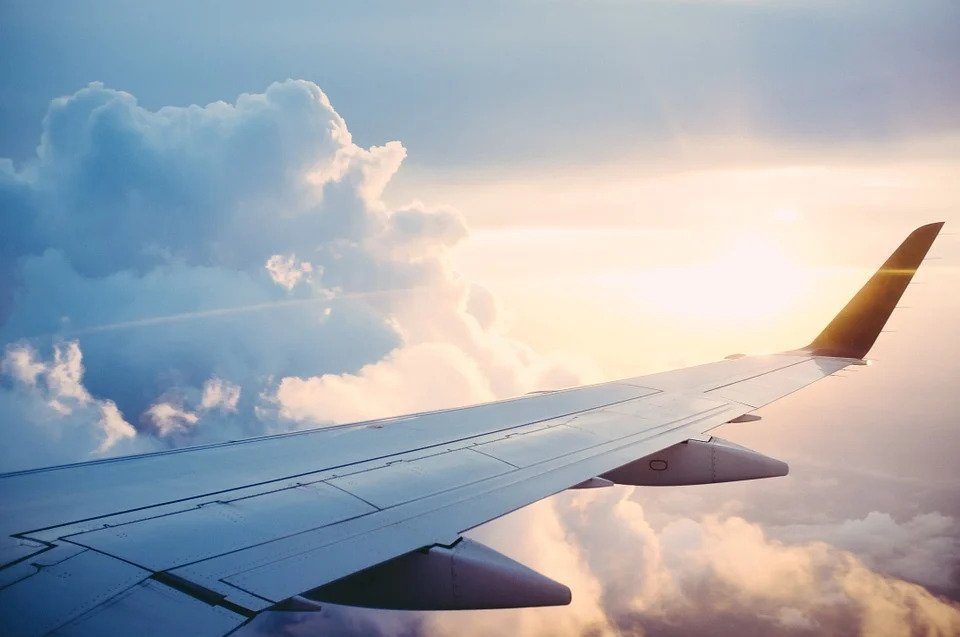
Most people will either be arriving in Santiago via a flight or coming overland from Argentina or Bolivia. If you are flying into the airport, you can get to the city centre by taxi, shuttles buses, or the metro.
Many people traveling from Patagonia via bus will most likely head to Osorno. Those travelling from Patagonia via boat will most likely head to Puerto Montt.
If you are travelling down to Chile from Bolivia, you can cross the border as part of a salt flat tour, or just take an overland bus.
Entry Requirements for Chile
The United Kingdom, along with most European countries, New Zealand and South Africa can get a 90 day tourist visa on arrival for free. Just make sure that you have a valid passport with at least 6 months left on it.
In the past, the U.S, Canada and Australia have been charged various steep ‘reciprocity fee’ and at the point of writing, they still do. However, there is much talk of them being taken away. It all comes down to politics and what the country in question is charging them to visit.
For Chile, you really do need to contact your own local embassy to see what the latest information is. I’ve found that this website can help give you a good idea, but you must check it against your own embassy information.
Note : Chile goes through bouts of checking for yellow fever cards. They are not that frequent, but they do have them, so make sure you have a yellow fever card if you are coming from a country with the Amazon.
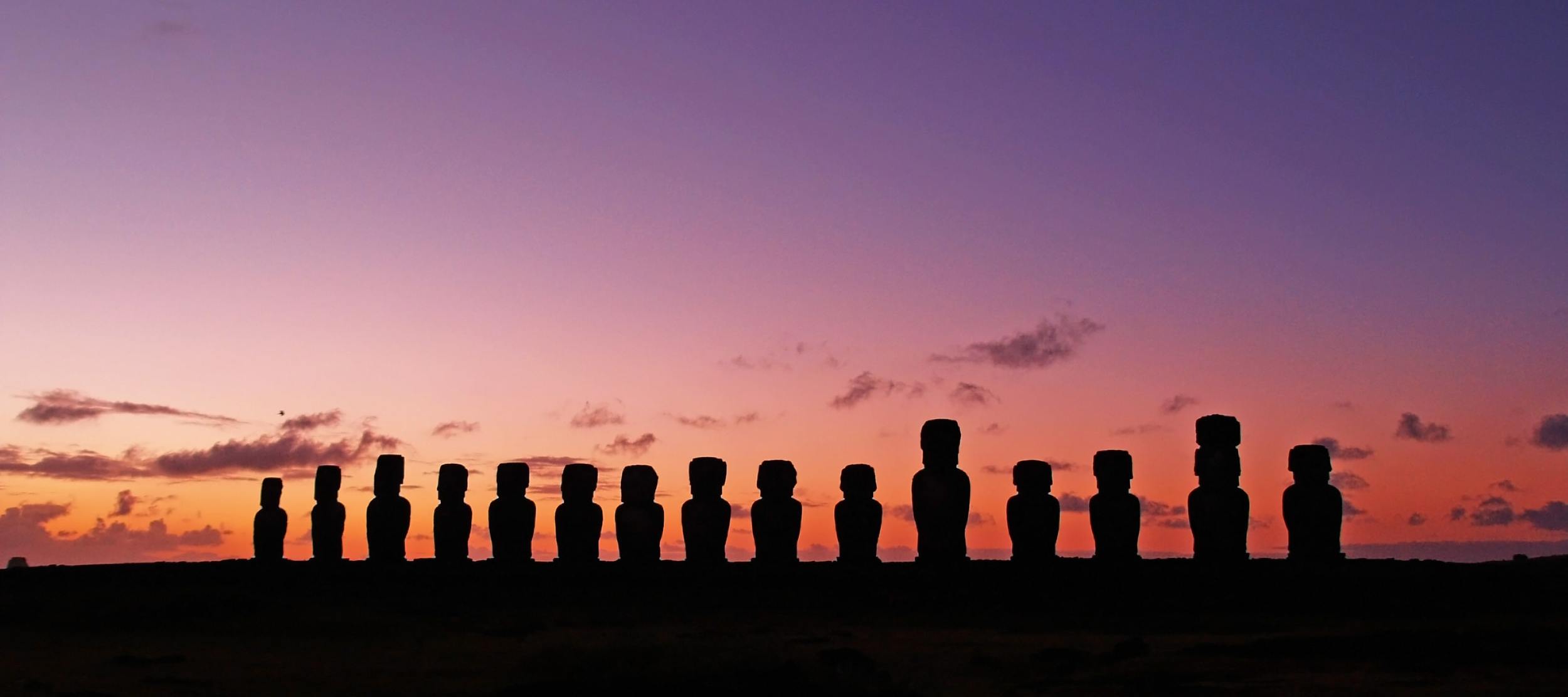
Get 15% OFF when you book through our link — and support the site you love so dearly 😉
Booking.com is quickly becoming our go-to for accommodation. From cheap hostels to stylish homestays and nice hotels, they’ve got it all!
Once you are in Chile, public transport is pretty well set up. The major cities have reliable bus systems and in some cases a decent metro line too.
Traveling by Public Transport in Chile
If you want to cover long distances, you can take some impressively comfortable overnight buses in Chile. Many of them have serious safety measures, huge comfortable chairs, meals on board, and they’re pretty affordable. This is just as well as internal flights are generally expensive in Chile and not really a good option for budget travellers.
You’ll be happy to hear that Chile is also well set up for taking buses overland into neighbouring countries.
If you are heading really far south into Patagonia there are various ferry options for getting around. Puerto Montt is the main hub for this.
You can rent cars across Chile and when you get upto the Atacama there are even companies that rent out campers, so you can chip in with a few travel buddies and go off on an adventure together.
Hitchhiking in Chile
Locals around Patagonia and the Atacama tend to be pretty sweet about picking up hitchhikers. Based on this I would imagine hitching to be fairly easy in most remote areas. As usual, it is really hard once you’re near the cities. Make sure you write your signs in Spanish. Very few people speak English in Chile.
Generally, you can get away with wild camping all over Chile and it really is one of the best ways to experience the natural wild beauty of the country. The exception is Patagonia’s National Parks, where you must stick to the official campsites on the main trails in Patagonia, but there are quite a few free options.
For more hitchhiking tips, check out Will’s hitchhiking 101 post .
Onwards Travel from Chile
The capital, Santiago, is your best shot at flying out on the cheap, but in many cases you are best travelling overland.
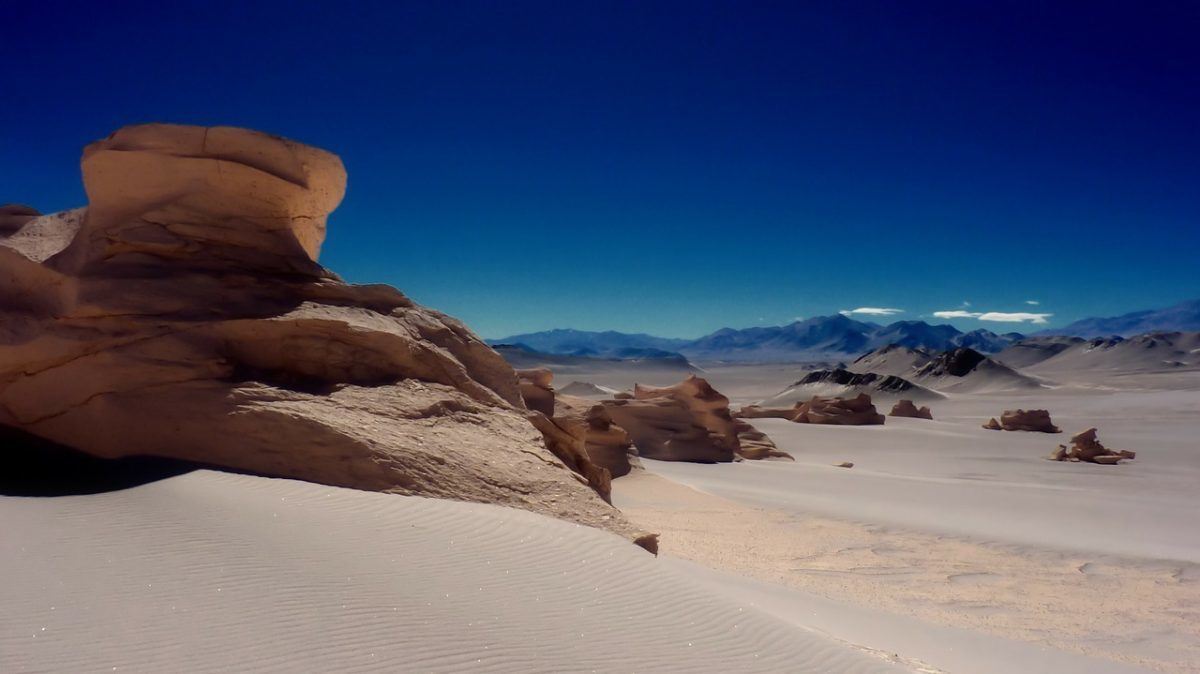
Onwards travel from Chile is pretty easy, there are loads of overland crossings into Argentina all the way up the country. If you reach the top and want to backpack through Bolivia , you can either get a bus or go across the salt flats as part of an overland tour. This cost around $120, takes 3 days and it’s awesome!
Chile enjoys relative stability and one of the strongest economies in South America. The average salary is $27k per year which is almost on a part with some western countries. As such it does attract migrant workers from all over Latin America. There are also expat roles available in Oil, mining, engineering and as well as English teaching jobs.

A new country, a new contract, a new piece of plastic – booooring. Instead, buy an eSIM!
An eSIM works just like an app: you buy it, you download it, and BOOM! You’re connected the minute you land. It’s that easy.
Is your phone eSIM ready? Read about how e-Sims work or click below to see one of the top eSIM providers on the market and ditch the plastic .
Work Visa’s in Chile
There are a number of different work visa’s available for Chile. The type an applicant needs varies depending on the nature of their employment. However, in all cases Visa applications can only be made once a job offer has been obtained.
Chile does also offer an Independent Worker Visa designed for contractors – this may be awarded to would be Digital Nomads but we don’t have any first hand knowledge of anybody obtaining one.
Teaching English in Chile
In order to teach English in Chile, most teachers will require a bachelor’s degree, and many schools prefer TEFL or CELTA certification. The average salary for teaching in Chile is $500 – $800 per month.
Volunteer in Chile
Volunteering abroad is an amazing way to experience a culture whilst helping your host community. There are plenty of different volunteer projects in Chile including teaching, construction, agriculture and pretty much anything.
Chile offers lots of opportunities for backpackers to offer up some time and skills and give something back to the community. There are plenty of ‘bread and board’ gigs in hospitality, as well as opportunities to work in animal care and conservation. A tourist visa is sufficient for most nationalities to volunteer for up to 90 days, but long-term travelers will need to apply for a temporary resident visa.
If you want to find volunteering opportunities in Chile, then we recommend that you Signup for Worldpackers – a volunteer platform that connects local hosts directly with traveling volunteers. As a Broke Backpacker reader, you’ll also get a special discount of $10 when you sign up. Just use the discount code BROKEBACKPACKER and your membership is discounted from $49 a year to only $39.
Volunteer programs run through reputable work exchange programs like Worldpackers are usually very well-managed and reputable. However, whenever you are volunteering, do stay vigilant especially when working with animals or children.
There are many types of places to ear in Chile.
For those on a budget, the random street vendors are the cheapest way to eat.
If you’re on a budget but don’t fancy cooking, keep your eyes open for interesting hole-in-the-wall food joints. We found quite a few run-down looking places in more urban areas serving simple rice and chicken ranging from $4 to $6.
There are also plenty of creative cafes that serve great coffee and sandwiches all over the bigger cities. Check out the standing coffee shops, which as the name suggests means you stand at tall tables whilst you have a coffee.
If you want to splurge, there are many high end restaurants serving gourmet food and great wine. There tends to be a great mix of both European and Chilean food.

Traditional Chilean Dishes
Empanadas: You will see these all over South America. They are somewhere between a baked pie and pastry, often filled with veg, cheese, olives or whatever they can find.
Churrasco and Chacarero: Basically a local steak sandwich often served with avocado, tomato and mayo.
Completo: AKA a guacamole hot dog. These hot dogs are piled high with all sorts of sauces and salad. They’re pretty tasty!
Porotos Granados: This is basically a bean stew made with fresh ingredients, more often served in the summer months.
Chorillana: This dish is originally from the colourful coastline of Valparaisó. It’s basically steak, spicy sausage, onions, fried eggs, and fries.
Fried Chicken: Doesn’t exactly sound like a dish, but they have it everywhere and often use different spices to make the grease taste better.
Humitas: This is a real staple across South America. It is basically crushed corn steamed in a husk.
Types of Traditional Chilean Drinks
Wine: Chile really is home to some of the best wine in the world . The red in particular is world class!
Pisco: This is white brandy with a distinctive taste, pretty good on its own and even better in cocktails.
Terremoto: This is Chile’s national cocktail, which translates as “Earthquake.” It is made up of cheap white wine, pineapple sorbet and grenadine.
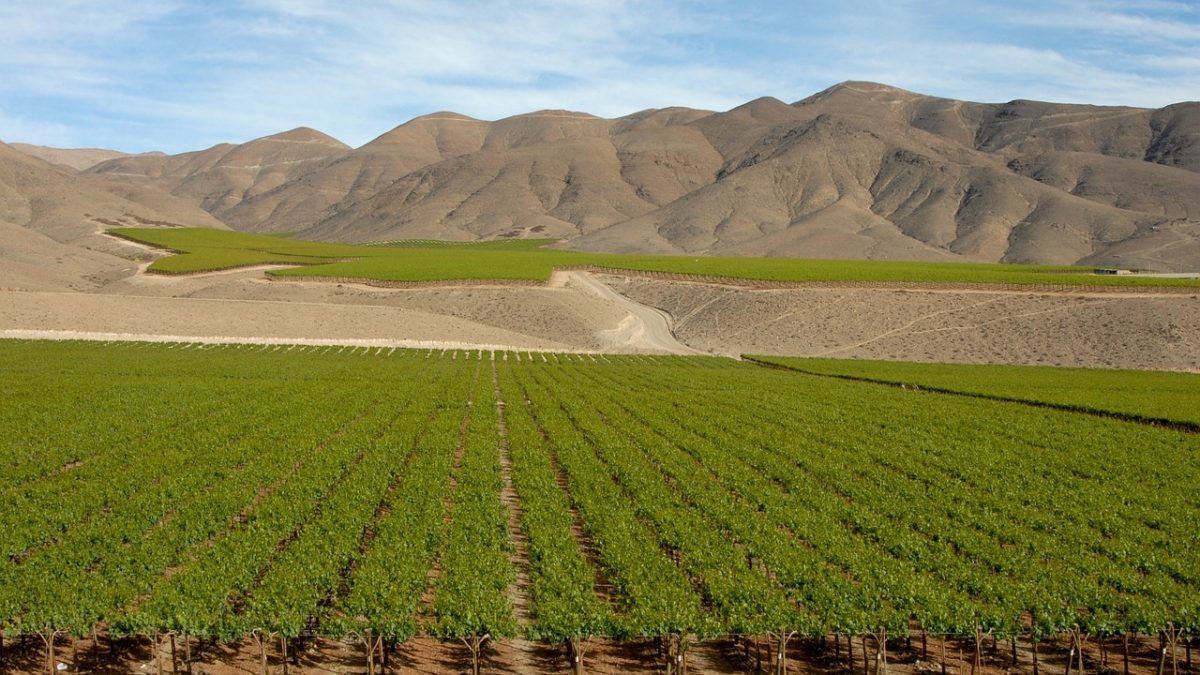
It is really important to know at least a little Spanish to connect with the locals in Chile. Outside of your hostel and specific tourist places you will find English is limited.
Even if the locals you are hanging out with do speak English, it seems to mean a lot to them if you can at least attempt to speak their language.
Chileans are warm, kind, hospitable, and often eager to help you. It’s also worth noting, they tend to be confident, passionate people, and sometimes this can come across as intense, but this really is just cultural.
Useful Travel Phrases For Backpacking Chile
Chileans speak Spanish, though with a notorious accent. I’ve listed some helpful Spanish travel phrases below.
Hello – Hola
Nice to meet you – Encantada de conocerte
How are you? – Cómo estás?
Good morning – Buenos días
Good afternoon/evening – Buenas tardes
Goodnight – Buenas noches
Thank you – Gracias
Please – Por favor
My name is… – Me llamo…
Help! – Ayuda
Goodbye – Adiós
No plastic bag – Sin bolsa de plastico
No straw please – No paja por favor
No plastic cutlery please – No hay cubiertos de plástico por favor
Sorry – Lo siento
Do you speak English? – Habla usted Inglés?
Cheers! – Salud
How much is it? – Cuánto cuesta?
I don’t understand – No entiendo
Books to read while Backpacking Chile
Below I’ve listed some great books set in Chile.
- The House of the Spirits – The mixup of the personable character with the a wider political position and fact with fantasy makes for a great balance of narrative whilst giving you a real insight into the country.
- Travels in a Thin Country – A British journalist shares her adventures from the tip of the toe of Chile. With every page she will fuel your wanderlust for Chile.
- Island at the End of the World – The Turbulent History of Easter Island – This is a great book for getting to grips with and connecting with this mysterious island. There are many theories and mysteries surrounding the island. This book helps give you a good idea of its history so you can come to your own conclusions.
- Lonely Planet Chile Travel Guide – Relevant, up-to-date advice and tips for backpacking through Chile.
A Brief History of Chile
Chile has been populated since at least 3000 BC. Some sources, however, claim that the first people arrived in Chile around 12,000BC!
During the 16th century, the Spanish invaded and colonized the region. This is where Chile gets most of its architecture from. In fact, you can experience Spanish influence in the food, some traditional dress, and certainly in the language!
There was some impressive indigenous resistance to this colonization, especially in what we now refer to as Patagonia. However, most of Chile became a Spanish colony between 1540 and 1820.
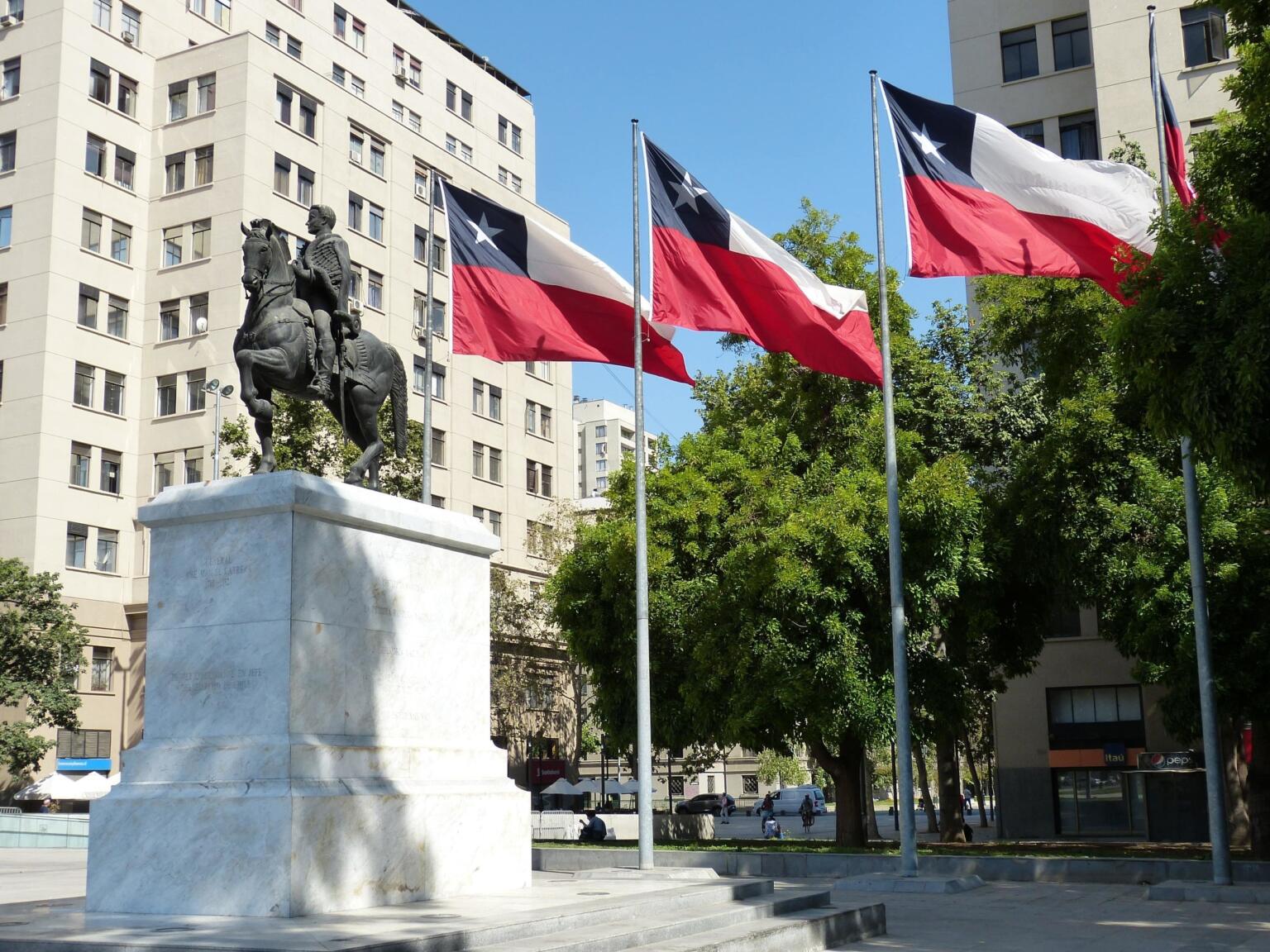
They were officially independent from Spain on September 18, 1810.
Much of Chile’s recent history is defined by the repressive Pinochet dictatorship from 1973 – 1990. His military coup was largely successful because of CIA assistance. He remained in a position of power until 1998, committing human atrocities and leading a brutal dictatorship.

Things go wrong on the road ALL THE TIME. Be prepared for what life throws at you.
Buy an AMK Travel Medical Kit before you head out on your next adventure – don’t be daft!
Trekking in Chile
Home to Patagonia, Chile is one of the best countries to visit in the world for hikers, mountaineers, and climbers. The possibilities are absolutely endless in Chile. I’ve listed 5 of the best hikes in Chile below:
1. The “W” Trek in Torres del Paine National Park – This park is home to the most popular trail in Chile, if not the world! The “W” trek takes 5-7 days, hitting all of the best views in the park. For more of a challenge, you can trek the “O” or “Q” trek, which combines the “W” with a full circuit over 7-10 days.
2. Trekking in the Atacama Desert – The driest desert in the world includes a mixture of salt lakes, sand, and lava flows. There are also plenty of natural hot springs to soak your feet after a hard trek!
3. El Morado Glacier trek – The best day hike if you want to get up close to some glaciers. It is also a lesser known route in Chile, so you will run into less crowds.
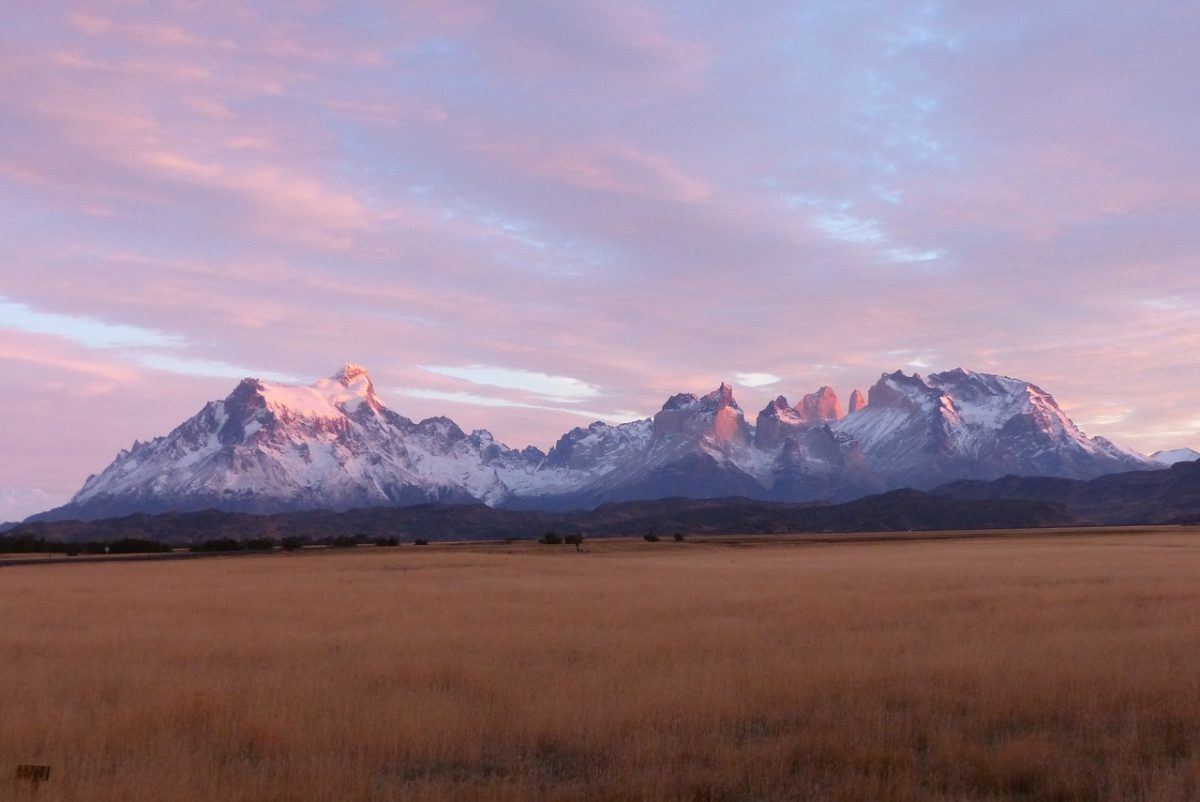
4. Grey Glacier in Torres del Paine National Park – This is a great trek that will allow you to hike over a glacier!
5. The Cerro Castillo Circuit – This is the perfect multi-day hike to get off the beaten path, complete with views of glaciers and lagoons. Be prepared, however for technical mountain passes. If you don’t have experience, we recommend hiring a guide.
Diving in Chile
Chile isn’t typically known for it’s diving, although due to its long coast, there are many places that you can explore.
By far the most impressive, iconic and interesting place to dive is Easter Island. The visibility is fantastic and there is plenty of sealife to see.
The main thing that steals the show though has to be the giant sunken Moai head. Yes, that’s right you can actually see one of the giant iconic heads as part of a dive!
Joining an Organized Tour in Chile
For most countries, Chile included, solo travel is the name of the game. That said, if you are short on time, energy, or just want to be part of an awesome group of travelers you can opt to join an organized tour. Joining a tour is a great way to see a majority of the country quickly and without the effort that goes into planning a backpacking trip. However—not all tour operators are created equal—that is for sure.
G Adventures is a solid down-to-earth tour company catering to backpackers just like you, and their prices and itineraries reflect the interests of the backpacker crowd. You can score some pretty sweet deals on epic trips in Chile for a fraction of the price of what other tour operators charge.
Check out some of their awesome itineraries for Chile here…
For me, Chile is all about intrepid adventures, getting out into the wilderness, and exploring landscapes straight from the Discovery Channel.
There is a rich Latin culture here that you can indulge in, but to be honest, you can get lot of this culture all over South America. Chile is beautiful and interesting in its own right, but it also requires resourcefulness to get around on a budget. In Chile you get what you put in. You have to be brave, pack your camping gear, and get out into the wild if you really want to see what makes Chile special!
No matter how little time you have in Chile, make sure you get to at least one national park … and down at least one – no 6 -bottles of local wine!
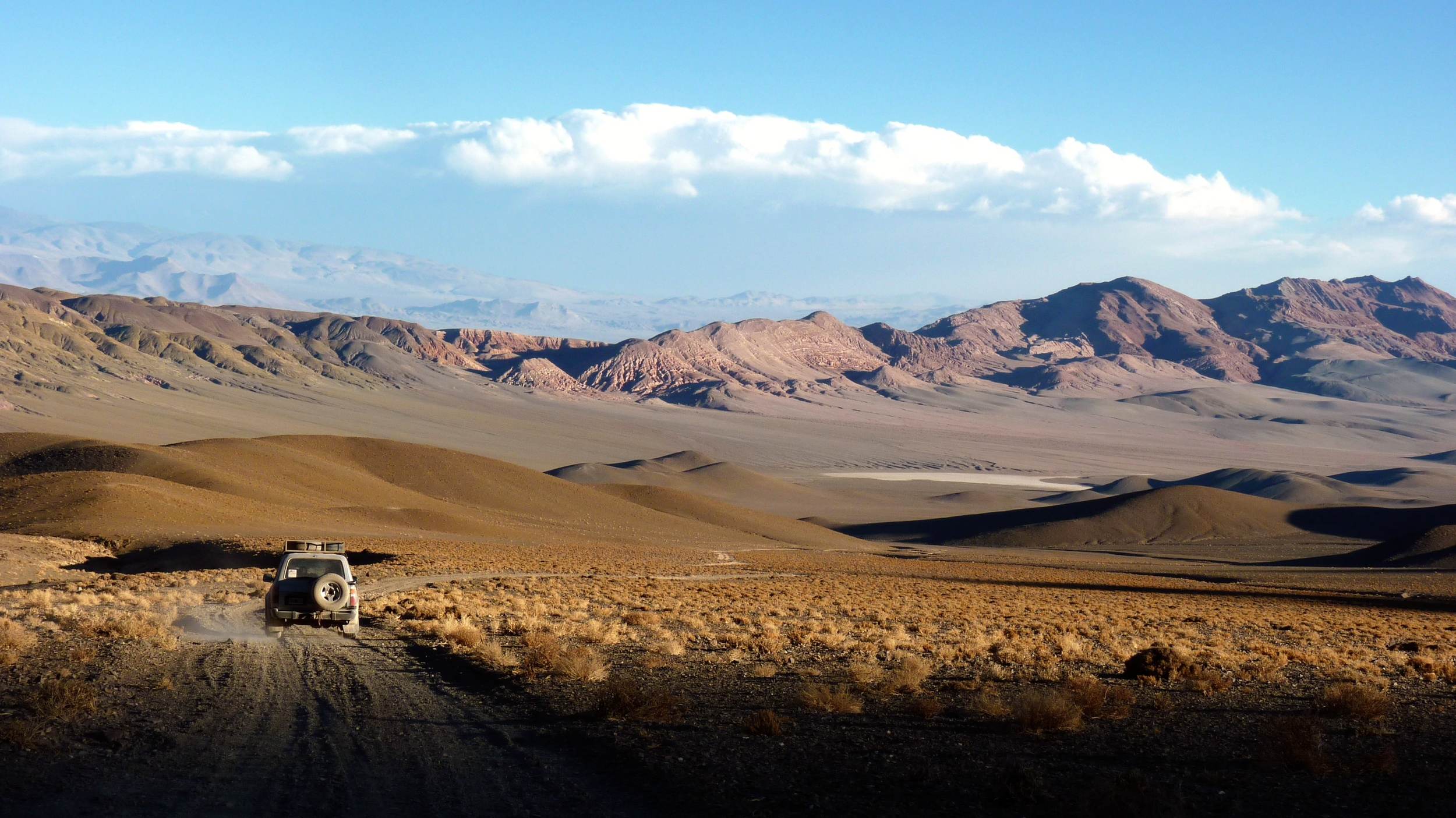
Being a Responsible Backpacker while Backpacking Chile
Go and watch A Plastic Ocean on Netflix – it’ll change how you view the plastic problem in the world; you need to understand what we are up against. If you think it doesn’t matter, get off my fucking site.
Don’t pick up single use plastic bags, you’re a backpacker – take your daypack if you need to go to the shop or run errands.
Bear in mind, that many animal products in countries you travel through will not be ethically farmed and won’t be of the highest quality. I’m a carnivore but when I’m on the road, I only eat chicken. Mass-farming of cows etc leads to the rainforest being cut down – which is obviously a huge problem.
Need more guidance? – Check out our post on how to be a responsible backpacker.
My biggest advice is to just be respectful to the local people and their culture. It’s not more complicated than that! Be kind and conscientious. If you are camping, make sure you take care of wherever you pitch and leave no trace behind!
Show the historical and archeological sites respect too, don’t be like the Dutch idiot who tried to cut an ear off one of the big heads on Easter Island and got charged $17,000!
- Argentina Backpacking Travel Guide
- Choosing the BEST Travel Backpack
- Backpacking South America Travel Guide
- How to hitchhike
Buy Us a Coffee !
A couple of you lovely readers suggested we set up a tip jar for direct support as an alternative to booking through our links. So we created one!
You can now buy The Broke Backpacker a coffee . If you like and use our content to plan your trips, it’s a much appreciated way to show appreciation 🙂

Share or save this post

This article is about the chile travel guide to the customers. Barrio Bellavista. It’s colourful, full of culture, has great places to chill, and has some of the best hostels in Santiago.There are national parks available in the chile. This is the information of about the chile.
Amazing guide! Thank you for sharing all this information with us. Chile is an amazing country and I strongly recommend a visit!
Leave a Reply Cancel reply
Your email address will not be published. Required fields are marked *
Save my name, email, and website in this browser for the next time I comment.
Notify me of followup comments via e-mail.

Travel the Carretera Austral, the essential guide (2024)
In this complete guide to travel the Carretera Austral you will find information to travel the scenic Chile’s Southern Highway, one of the most beautiful in the world.
The Carretera Austral starts in the city of Puerto Montt , crosses scenic landscapes between lakes and mountains, culminating after 1230 km in the town of Villa O’Higgins . Let’s describe it in this complete guide.
Table of Contents
Getting to some of the starting points of the Carretera Austral
There are several alternatives to travel the Carretera Austral . Taking into account that normally the starting point is from the city of Puerto Montt in the north or from the region of Aysen in the extreme south.
– Arriving at one of the starting points by plane
- Getting to Puerto Montt : It is possible to get to Puerto Montt, the starting point for visiting the Carretera Austral in the north, on a flight from Santiago de Chile, Punta Arenas or Balmaceda. There are regular flights every day.
✈️ Check here for cheap flights to Puerto Montt .
- Getting to Balmaceda : The airport is located on the southern part of the Carretera Austral, very close to the border with Argentina and 57 kilometers from the town of Coyhaique. There are direct flights from Puerto Montt or Santiago de Chile.
– Can it be done by bus?
Visiting the Carretera Austral by bus is not impossible . You just have to take into account the infrequency of public transport . In addition, you often have to make several combinations to get from one place to another. If you arrive in Chile via Santiago, the best way is to get to Puerto Montt by bus or plane and from there rent a car.
– Visiting the Carretera Austral in your own or rented car
It is clear that the best option to travel the entire Carretera Austral and stop to enjoy the landscapes is either in your own car or a rental car.
It must be taken into account that the route is cut in three sections due to the accidents of the terrain.So you have to do part of this route aboard a ferry. The three navigable stretches are:
- Caleta La Arena to Caleta Puelche : 45 minutes of navigation.
- Hornopirén to Leptepu : 4 hours of navigation.
- Fiordo Largo to Caleta Gonzalo : 45 minutes of navigation.
🚗 See here the prices of rental cars in Puerto Montt .

– Doing the Carretera Austral by ferry
If you are going to travel the Carretera Austral, there are options to a rrive by ferry to different points . And by the way, you can see the fjords and the entire coast of southern Chile:
- Route from Puerto Montt to Chaitén or to Puerto Chacabuco : in the first case, it is about 10 hours of navigation and in the second, it is a day of navigation.
🚢 Check the route from Puerto Montt to Chaitén with Naviera Austral (in Spanish). 🚢 Check the route from Puerto Montt to Puerto Chacabuco with Navimag .
- Route from Quellón in Chiloé : if you are on the island of Chiloé there are several ferries that connect Quellón with different ports of the Carretera Austral such as Chaitén, Puerto Cisnes or Puerto Chacabuco.
Check the route from Chiloé with Naviera Austral (in Spanish).
- Route from Puerto Natales : it is possible to travel by ferry through the Ice Fields region from Puerto Natales , passing through Puerto Eden and arriving at Puerto Yungay.
🚢 Check the route from Puerto Natales with Transbordadora Austral .
So, what is the best option?
As we have already commented before, the best way to visit the Carretera Austral is to do it by own or rental car , unless you want to visit only a section or navigate. Public transportation between cities is limited and there is no service every day.
Keep in mind that if you visit the Carretera Austral by car, the further south you go the greater the distance between towns, although fortunately gas stations are no longer a problem as you can fill up in most of the towns along the Carretera Austral (Hornopiren, Chaitén, Futaleufú, Palena, La Junta, Puyuhuapi, Puerto Cisnes, Puerto Aysén, Puerto Chacabuco, Villa Maniguales, Coyhaique, Puerto Río Tranquilo, Villa Cerro Castillo and Chile Chico). La Junta, Puyuhuapi, Puerto Cisnes, Puerto Aysén, Puerto Chacabuco, Villa Maniguales, Coyhaique, Puerto Río Tranquilo, Villa Cerro Castillo and Chile Chico, Cochrane, Tortel). However, many sections of the Carretera Austral are still gravel roads , although they are gradually being paved.
Along the Carretera Austral, there are several border crossings with Argentina . These are: Futaleufú in Chile with Esquel and Trevelin, Chile Chico with Los Antiguos and Balmaceda with Estancia Valle Huermules.
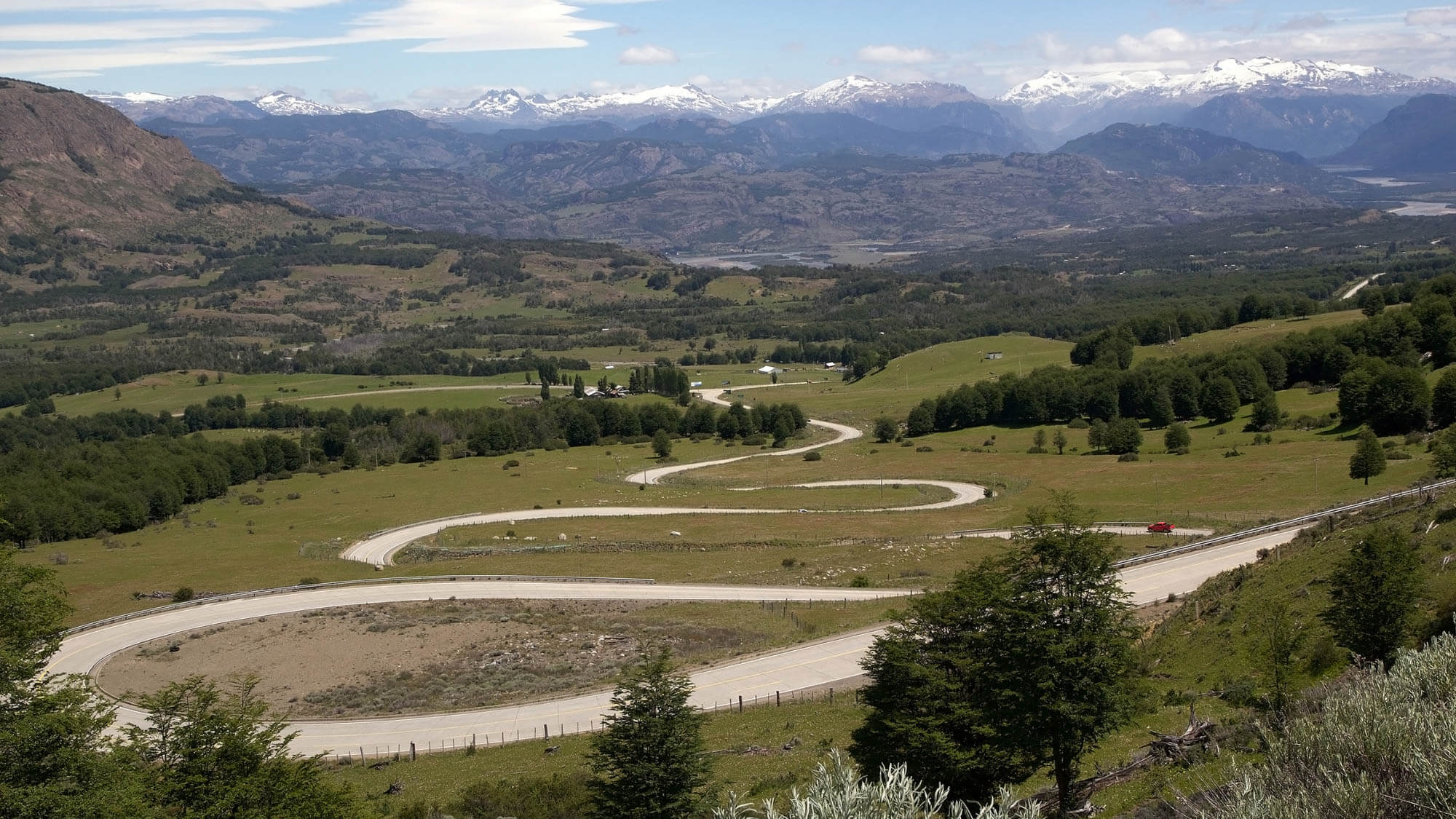
Are there ATMs to withdraw money?
Yes, fortunately many of the cities and towns on the Carretera Austral have ATMs for withdrawing money. Puerto Montt, being the largest city, has the most ATMs. But places like Puerto Río Tranquilo, Coyahique, Puerto Cisnes, Chile Chico, Chaitén and Puerto Aysén also have ATMs for cash withdrawals.
You can pay by card in many gas stations and shops , but keep in mind that in remote places the connection is often unstable and therefore sometimes you can’t pay by card even if the shop has a device to do so.
Do you need to carry enough cash to do the Carretera Austral? Our advice is not to skimp on this . If you stop at a petrol station to fill up and the system fails, you will have to pay in cash. The same goes for shopping or eating in a restaurant. The advantage is that you can pay for items such as hotels and excursions in advance by credit card.
Best time to travel the Carretera Austral
The best time to visit the Southern Highway is during the summer , late spring and early fall (from November to April) when the weather is pleasant during the afternoon. In addition, the length of the day, in terms of sunlight, is long. As the route is so vast, the further south you go the weather will tend to be colder, so it is recommended to bring warm clothes , even if the visit is in summer.
There are certain places where the visit should be done outside the summer season. This is the case of the Marble Chapel (Capillas de Marmol). During this time of year the lake water rises considerably due to thaws and it is not possible to go into the caves.
In the southern part of the Carretera Austral, the frequency of rains is constant , so it is recommended to bring a raincoat. It can even snow in summer.
From May to September the weather is very col d and, added to the fact that most of the activities are outdoors, it is difficult to visit the sites.
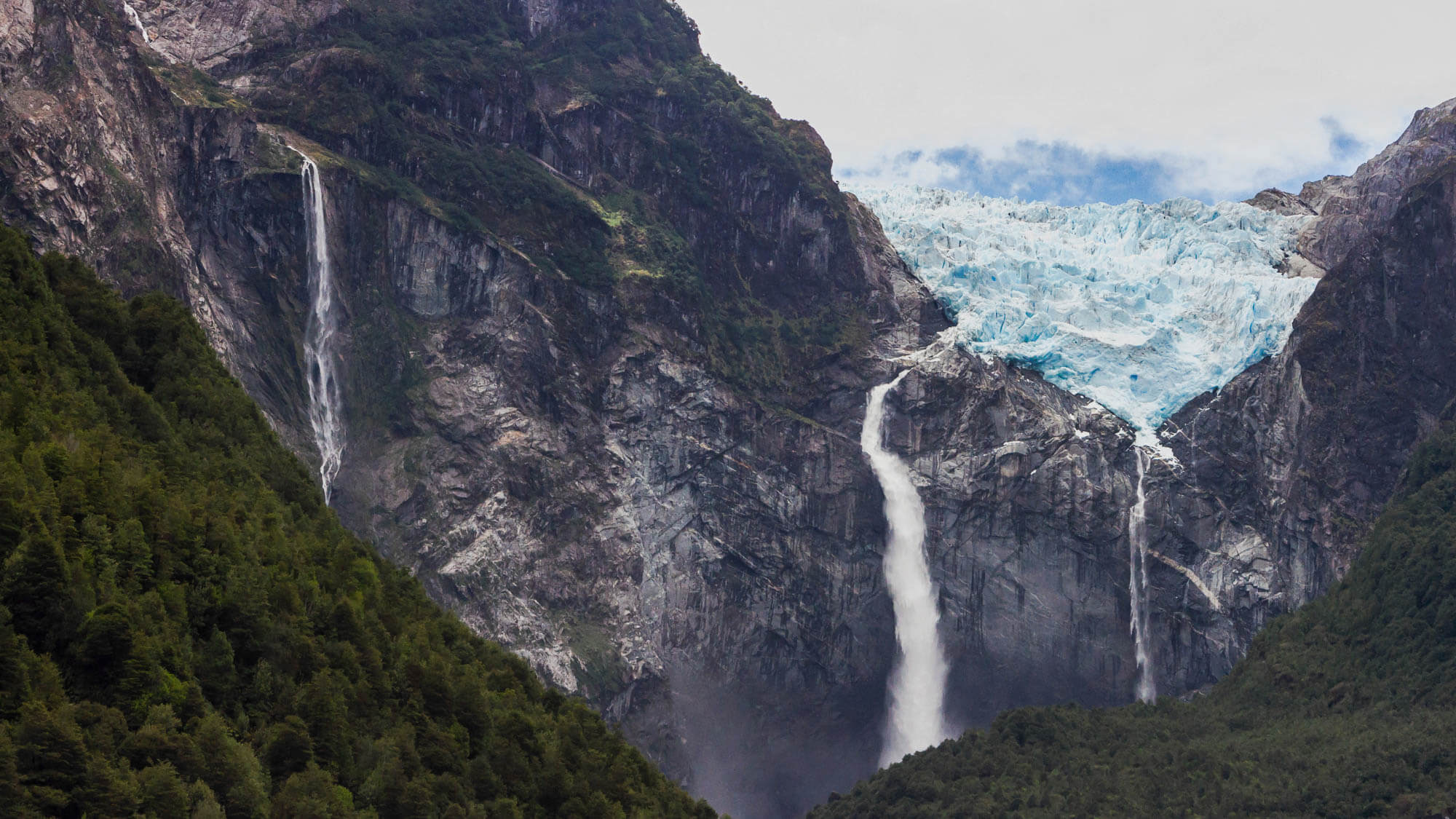
Accomodation in Southern Highway
🏨 Check here where to stau in Carretera Austral and get your ideal accommodation.
Must-see sights and attractions in Carretera Austral
- Top 5 things to do in Carretera Austral
- Other attractions to visit in Carretera Austral
Activities to do in Carretera Austral
- Take a break at the hot springs
- Mountain biking
- Navigation through channels
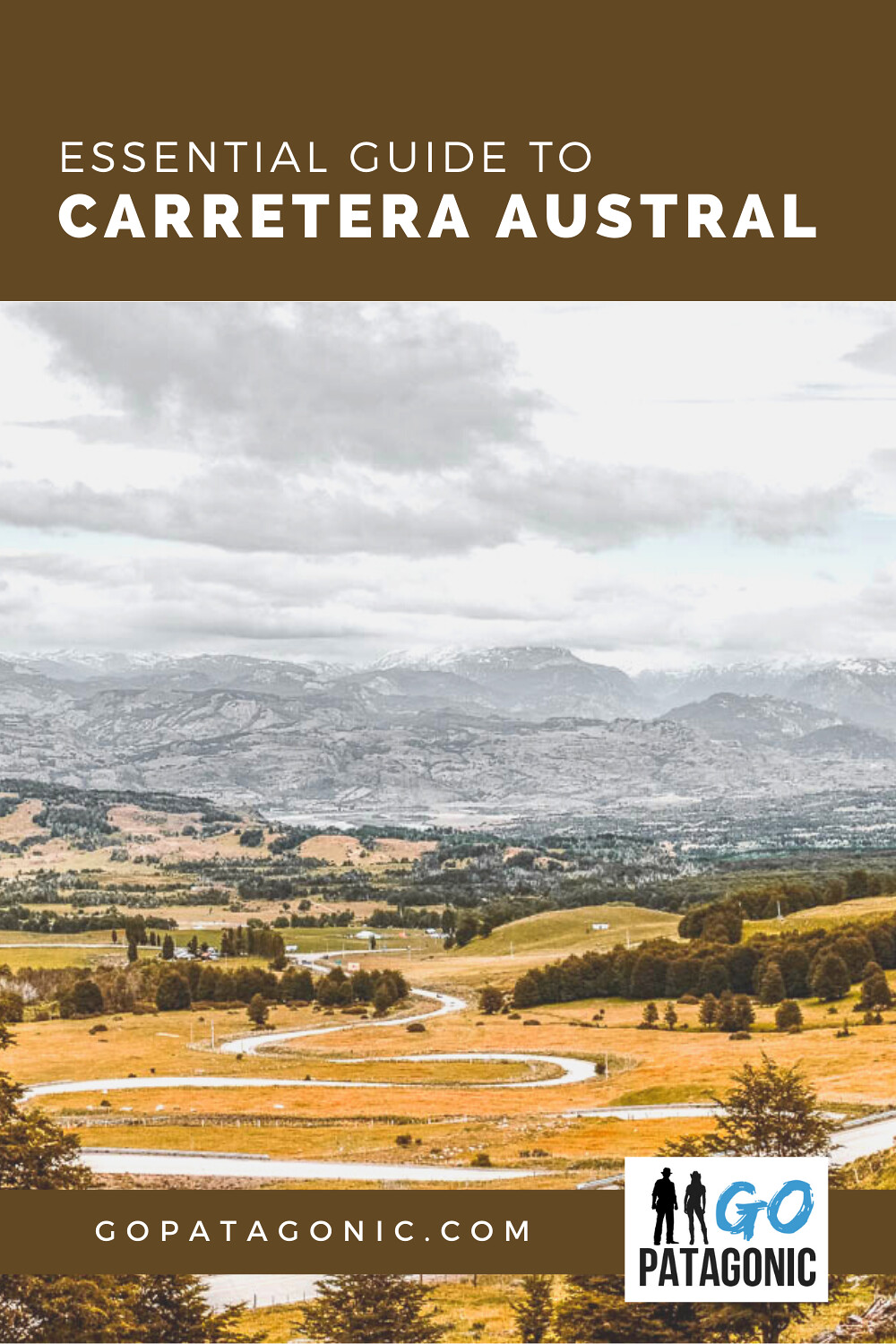
Comparte esta entrada:
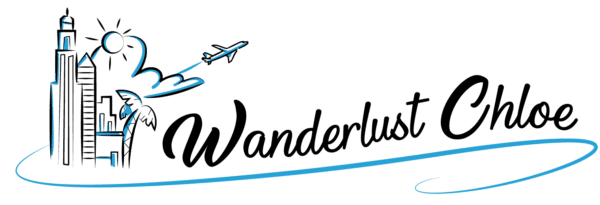
15 Things To Know About Travelling By Bus in Chile
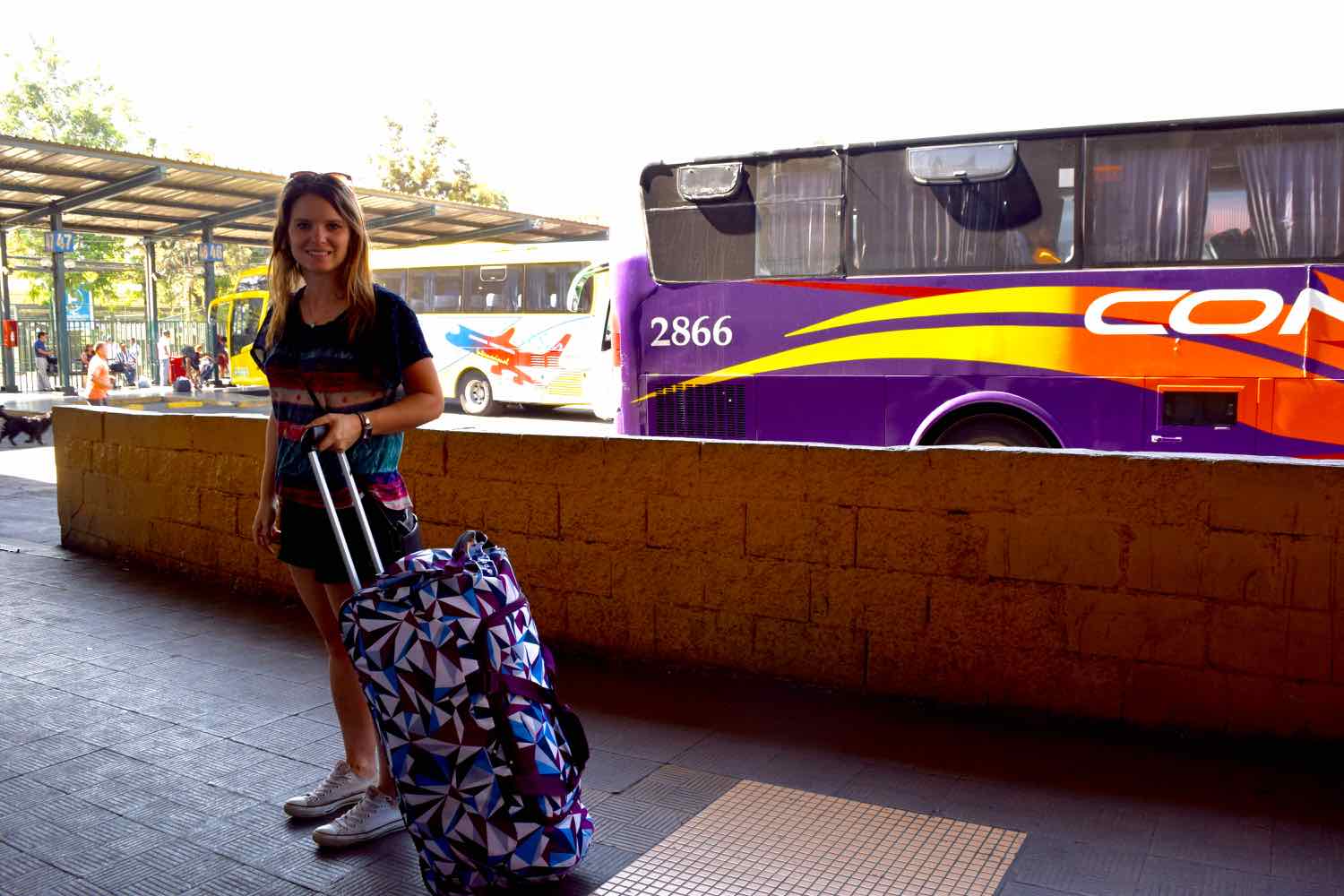
Looking to travel around Chile by bus? Find out all you need to know about buses in Chile in this helpful travel guide.
You’re planning a trip to Chile…? Great! No doubt one of your first thoughts will be “how will I get around?” With a length of over 4000km, it’s a very long and rather thin country, making things a tad awkward.
Rather frustratingly, some of the most beautiful spots are at opposite ends of the country, for example the Atacama Desert and Patagonia.
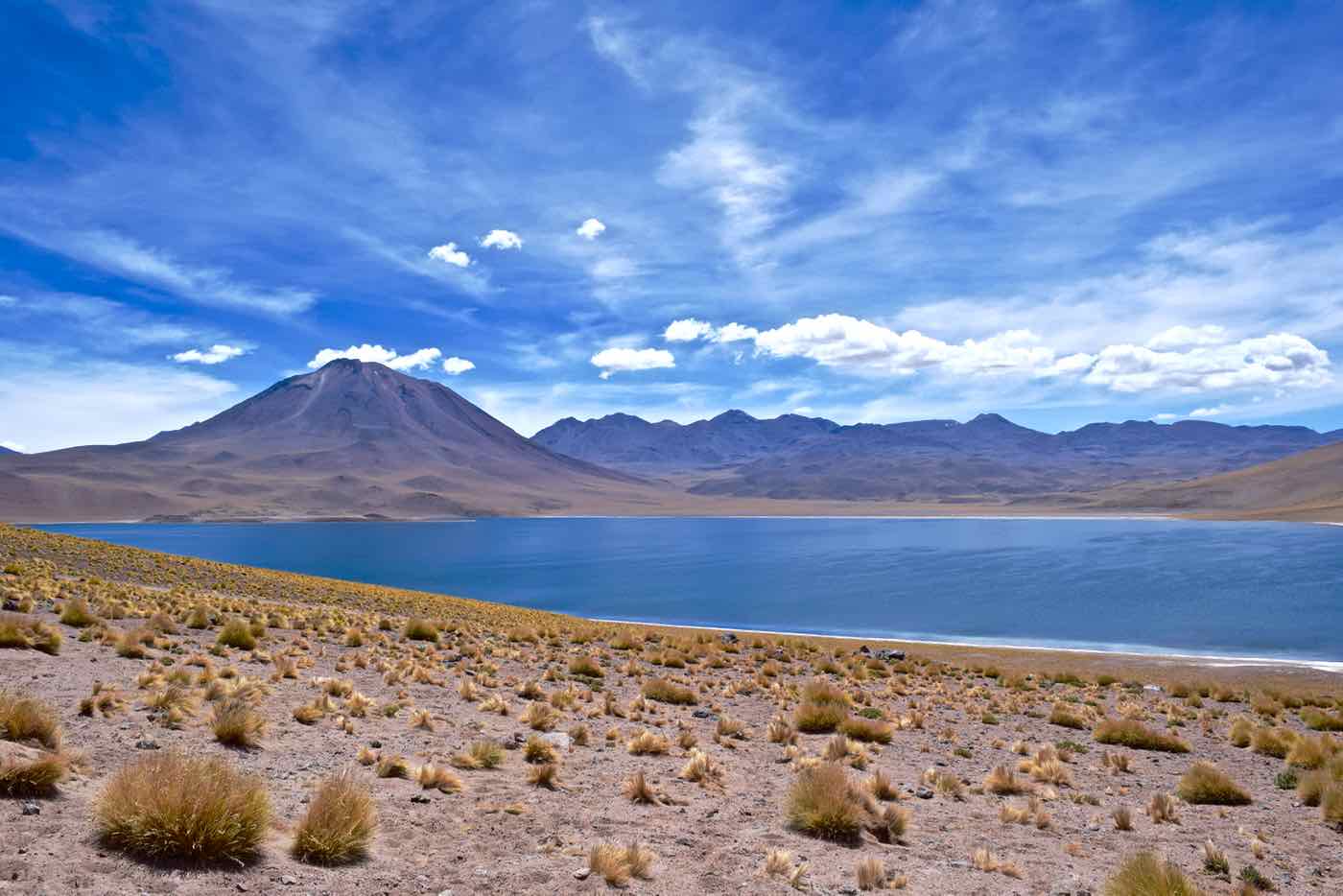
So, to travel in Chile, you have three main options:
Hire a car in Chile Pros – Get off the beaten track, Chile’s roads are well signed and drivers seem reasonably sensible compared to their South American neighbours! Cons – Tiring if you’re covering long distances and may be uncomfortable in a foreign country.
Fly in Chile Pros – Time efficient Cons – Many routes are expensive
The two main airlines operating in Chile are LAN and Sky Airlines. We flew with Sky from Santiago to Calama (close to the Atacama Desert) for around £130 return. We never received a confirmation email and were concerned the booking hadn’t gone through. Thankfully, it was all fine once we got to the airport!
Travel by bus in Chile Pros – Great on a budget, good amenities, perfect for long journeys. Cons – Not always direct to where you need to go, and some of the windy roads will leave even the most seasoned traveller a little queasy.
The bus option is the most cost-effective and provides not only a comfortable way to travel, but it’s also a great way to see the country’s stunning landscapes.
If your grasp of Spanish (like mine) isn’t great, then arriving at a big bus terminal such as Santiago’s central bus station will feel overwhelming. From my experience, here are some tips on what to expect, how buses in chile work, how much a ticket costs, and how not to get caught out!
1. Buses in Chile are generally high quality modes of transport. The main companies you’ll see are Pullman and Turbus but depending on the destination you’ll encounter the likes of JAC, Jet Sur, Nilahue, Cruz Del Sur, Gama Bus and more.
The buses in Chile are what we would describe as coaches in the UK, and many are double decker.
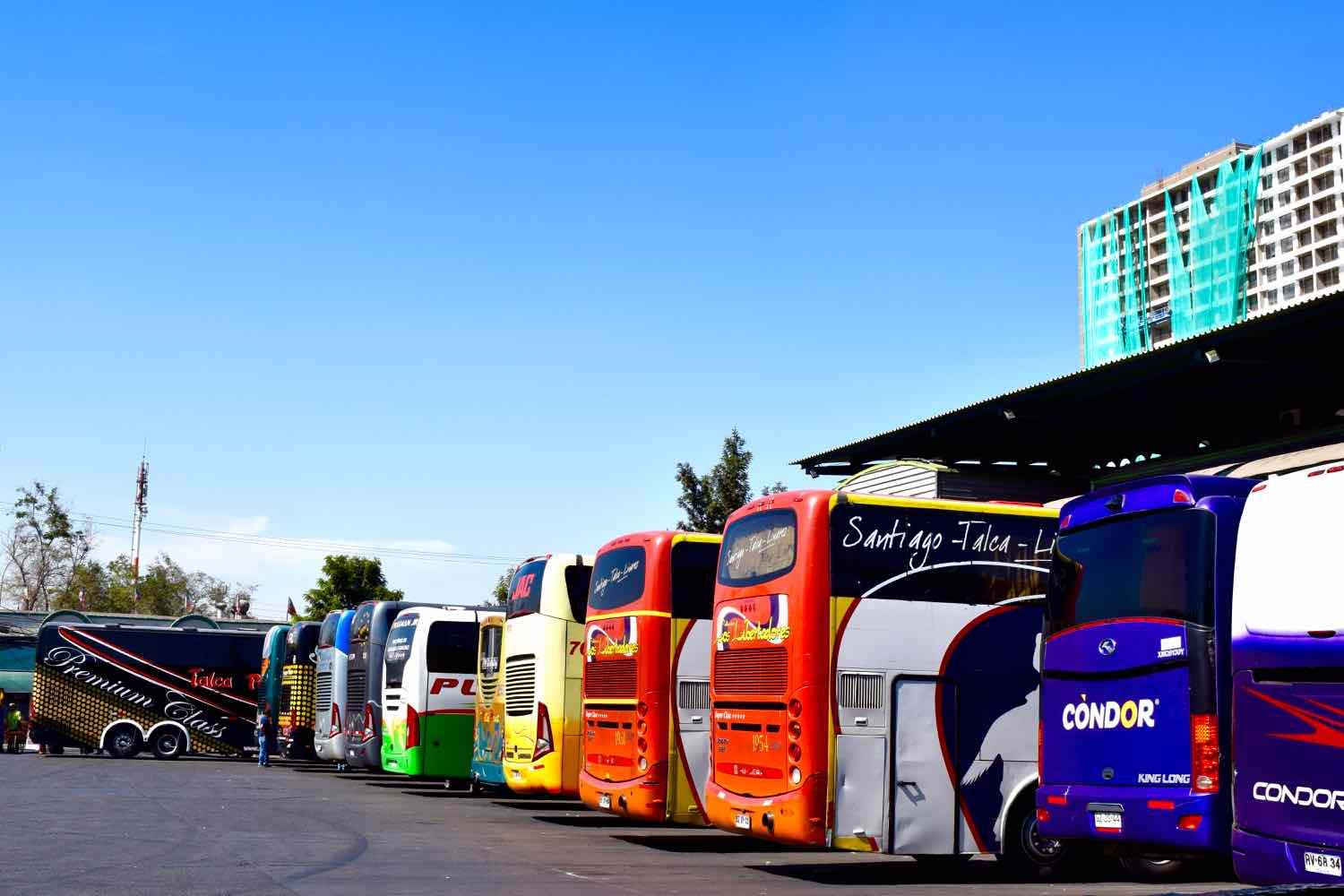
2. Chile’s buses generally run on time! In the four weeks I travelled around the country, the buses either left on time or were only a few minutes late.
3. They’re used to carrying luggage. Most have a limit of 30kg per person but nothing was ever weighed. People put everything from large cool boxes and suitcases to bikes in the hold area.
When you hand your luggage over they put a numbered sticker on it and give you the tag (like a cloakroom ticket). Don’t lose it – you’ll need it to reclaim your luggage when you reach your destination.
4. There isn’t a big organised system. Don’t expect a screen with stand numbers. The general rule is to buy a ticket and hope there is a number on it!
If not (like at smaller terminals) just look for the name of the bus company and show the conductor your ticket. You’ll find out pretty quickly if it’s the right bus for you!
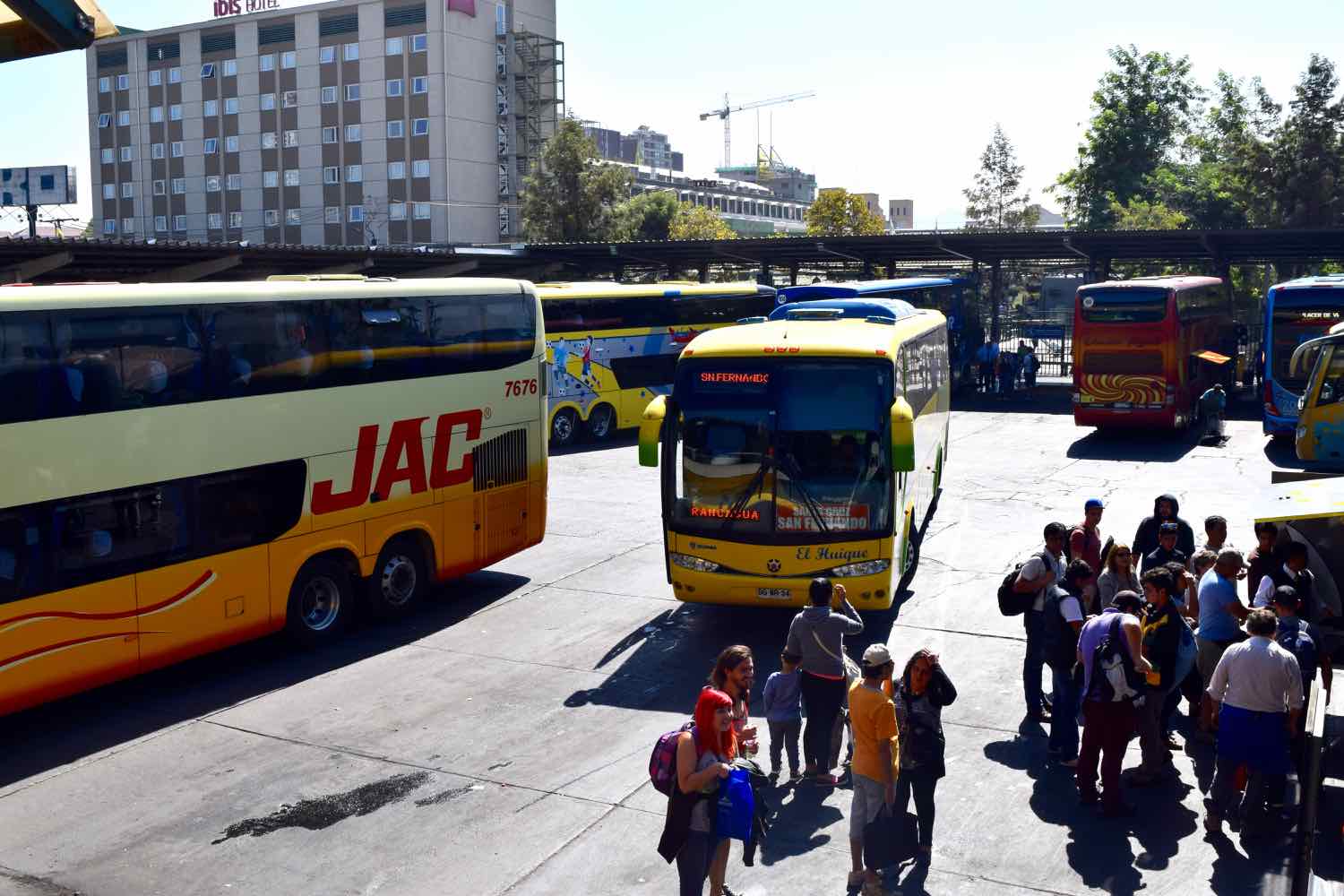
5. Some towns have several bus terminals.
Confusingly, some smaller towns have separate bus stations for Pullman and Turbus, so if you’re trying to line up two buses, you may have to hotfoot it around the block to a different terminal.
6. Santiago is a bit of a minefield with several bus terminals!
The main ones are Terminal Sur and Alameda which are both near the University.
Make sure you know which one you need before you head there, or allow plenty of time to walk between them.
7. Overnight buses are actually pretty good. As Chile is such a long country, many companies run overnight services to cover the large distances between destinations such as Santiago and Atacama, Puerto Varas, Pucon and down to Patagonia.
These are designed for comfort and depending on your budget you can opt for a semi cama (reclinable seat), a salon cama which reclines further and is usually wider, or even a flatbed.
On many you’ll find curtains not only on the window, but also between you and the person next to you, allowing for a bit of privacy as you catch some zzzzzs! From our travels, I’d rate Turbus and Pullman as the best bus companies in Chile.
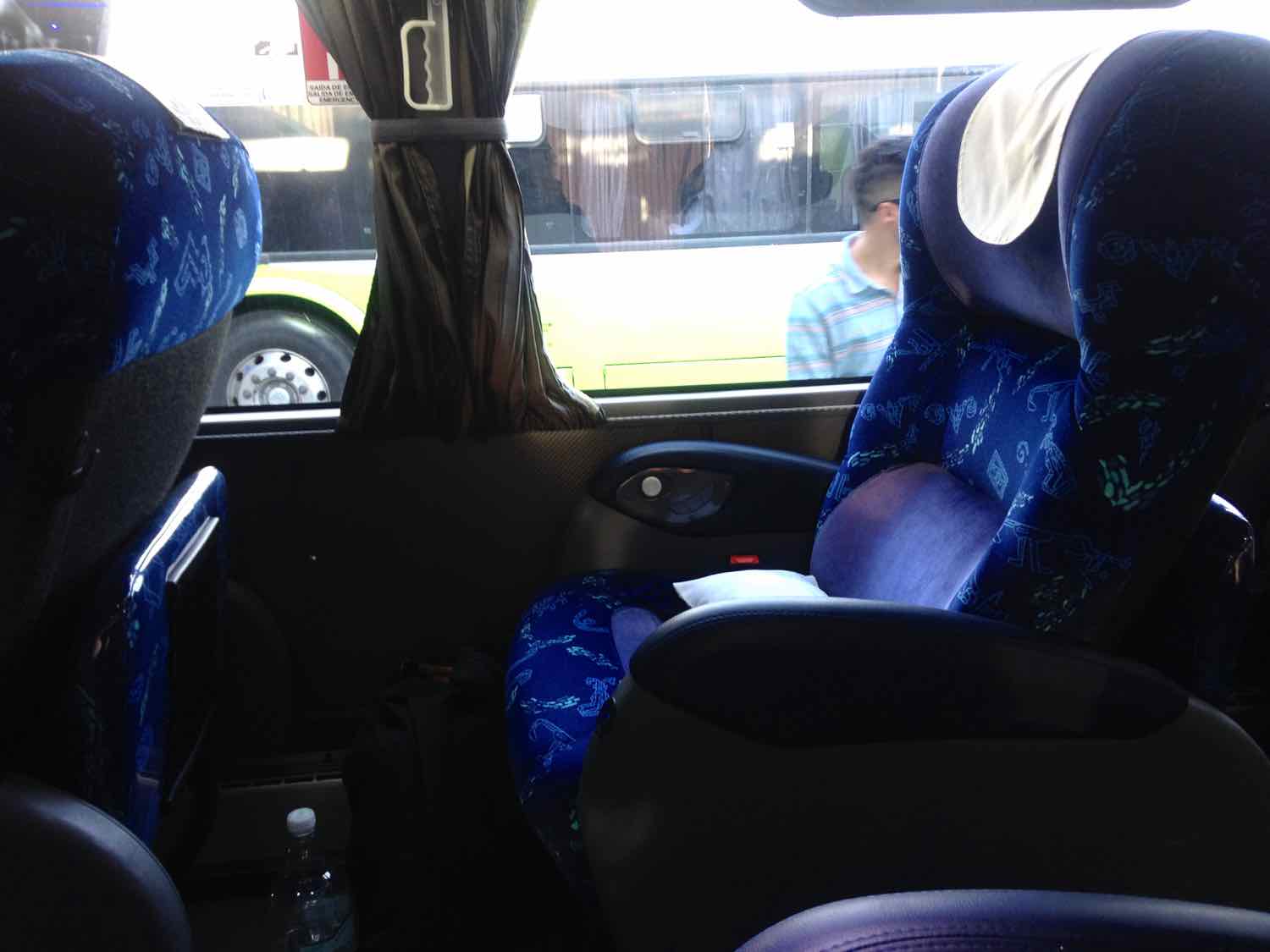
8. Amenities. All have air conditioning, but be prepared – sometimes they’re freezing, other times they’re boiling. Some have USB sockets to charge electronics and others even have plugs.
The Turbus service I took overnight from Santiago to Puerto Varas had a special wifi connection that allowed you to watch a selection of films on their server for free.
They were even in English with Spanish subtitles – bonus! They have a toilet downstairs and some give you a breakfast bag in the morning containing a cookie and a carton of juice.
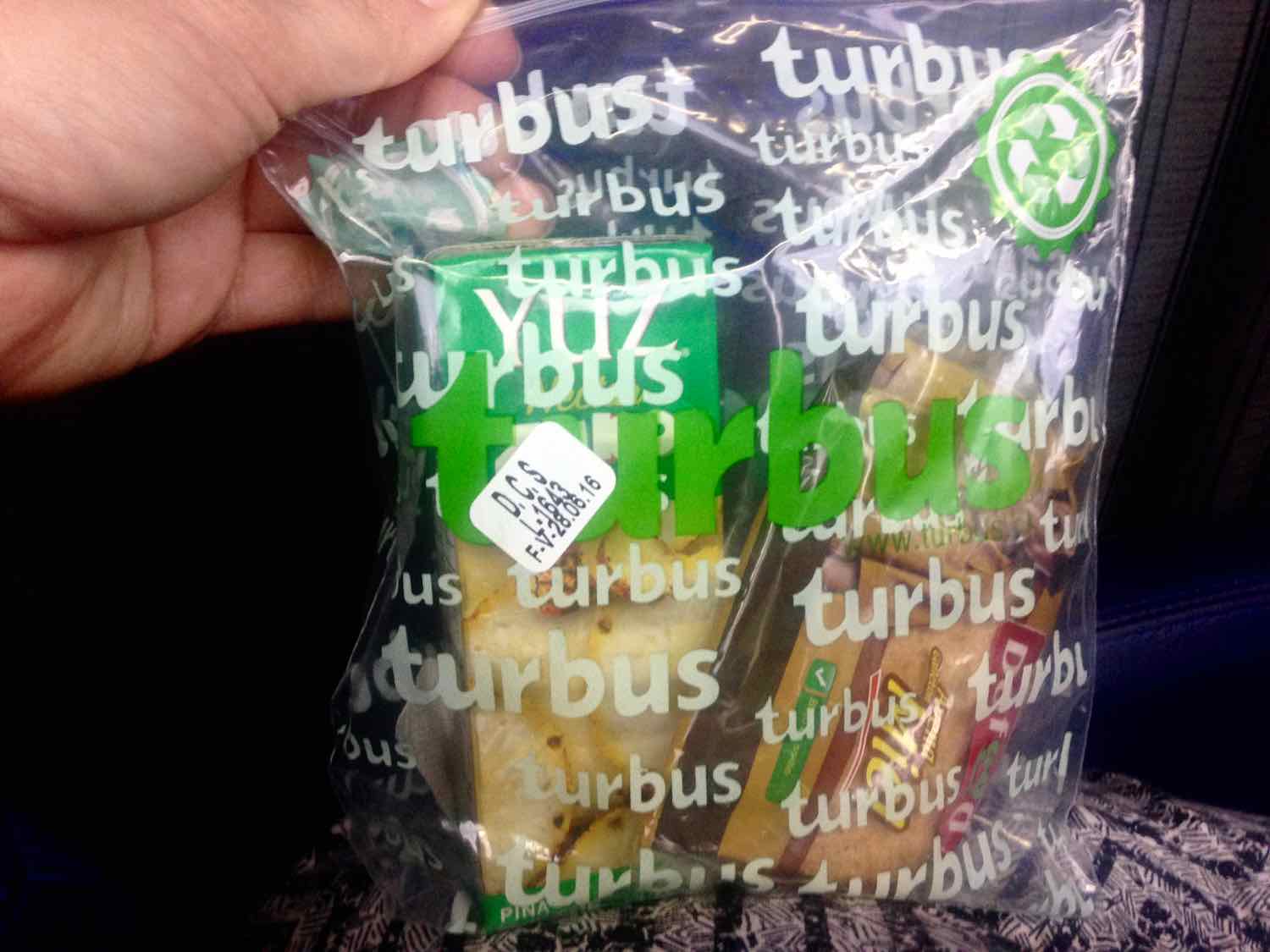
9. Shop around. Many terminals have counters for several companies all selling the same routes.
If you have time, patience, and basic Spanish, ask at each counter as prices can vary according to time of day and how many buses they have running.
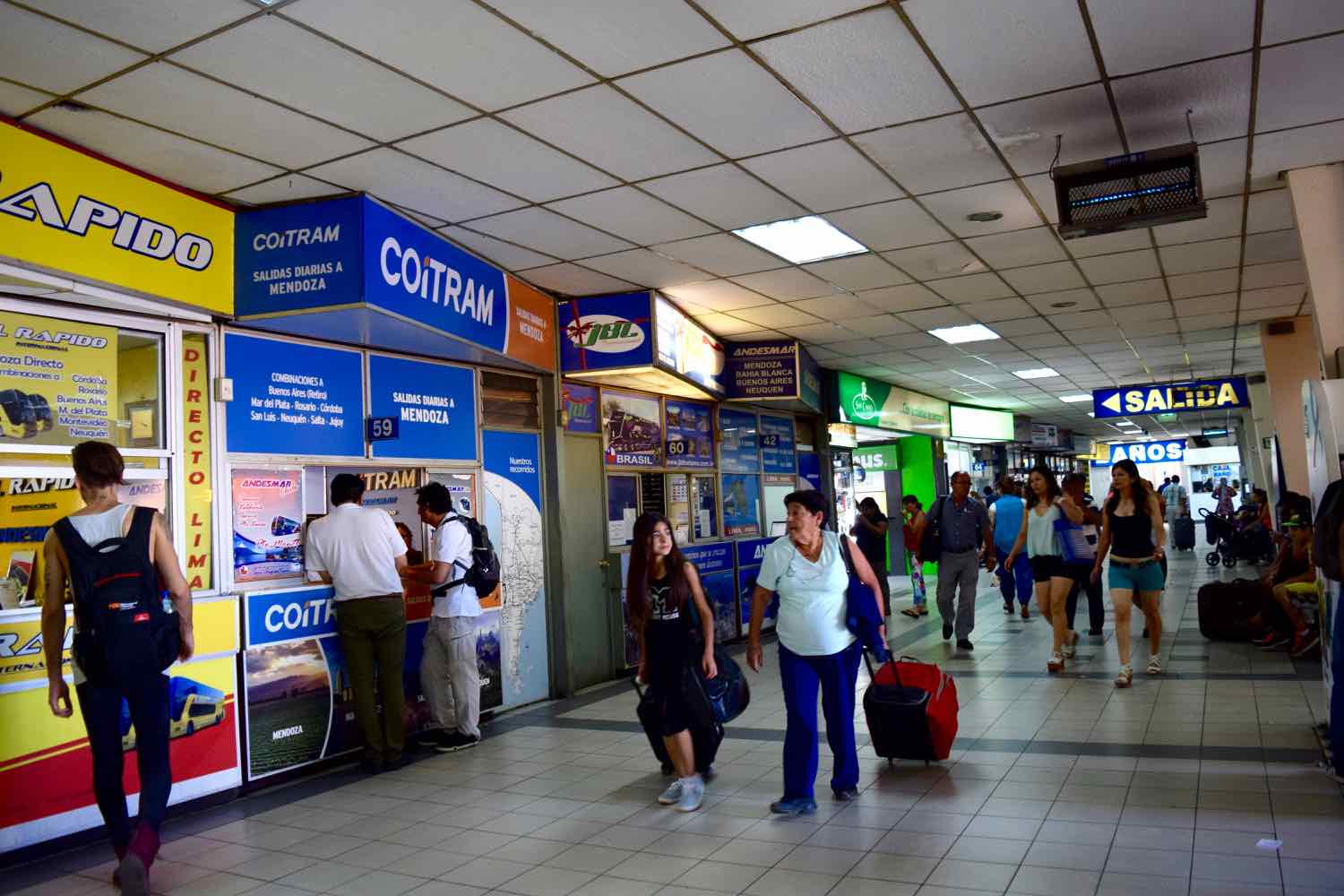
10. Book longer journeys a few days in advance. While it’s probably not necessary to plan far ahead in general, with longer journeys (particularly overnight services e.g from Santiago to Mendoza) it’ll be beneficial to book in advance.
These routes tended to be fully booked when they left. We never missed out as we made sure we booked a few days before.
11. Many towns have ticket offices for the major bus companies, making it easy to book ahead and check times in advance.
12. Booking tickets… beware some of the websites are a little tricky and unstable! I tried to book several times with Cruz Del Sur and Pullman with no luck. Websites timed out or didn’t accept my card! Hopefully this has improved since my trip, but just a little warning!
Some asked for a RUT (Chilean tax ID) which foreigners do not have. I’d suggest taking a look at Recorrido – a site that allows you to compare and book several bus companies.
The only bus I booked online was with Andesmar from Santiago to Mendoza, which worked fine.
13. If you’re travelling from Chile to Argentina by bus, take one leg of the journey during daylight hours. The journey up into the Andes Mountains is one of the most spectacular bus journeys I’ve ever taken!
Sometimes there are lengthy queues at the border so be prepared to wait a while. Also, if returning at night, pack some warm clothes as it gets very cold both on board the bus, and outside when clearing the border.
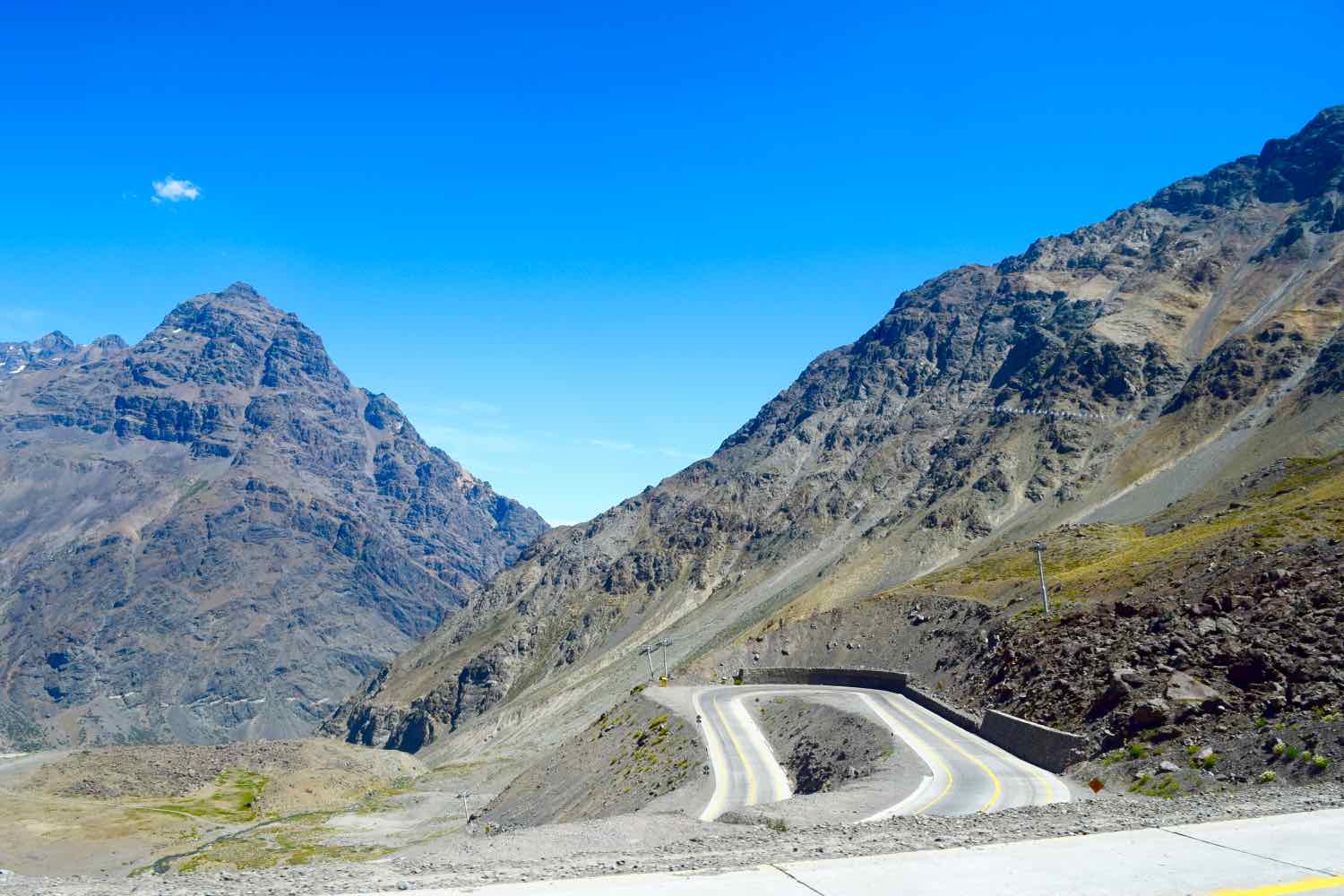
14. Pick your seat carefully. Even with air conditioning, Chile’s buses can get very warm during the day with the sun beating down. See if you can figure out which side the sun will be on and book a seat on the opposite side.
15. Pricing. Here are a few prices from my travels… but please note these were in 2016, so they will have increased a lot now. Please note these are one-way tickets and in Chilean Pesos (1000 Chilean Peso = approx £1)
Santiago Airport – Santiago Centre $1.600 Santiago – Puerto Varas $52.900 (salon cama) Santiago – Valparaiso $5.600 Santiago – Pichilemu $7.000 Valparaiso – Vina Del Mar $480 Viña Del Mar – Santiago $4.000 Puerto Varas – Pucon $7.000 Pucon – Temuco $2.000 Temuco – San Fernando $18.000 San Fernando – Santa Cruz $2.000 Santa Cruz – Santiago $4.000 Santiago – Mendoza (return) $19.000 outbound (daytime) $35.000 return (night)
One of the wonderful things about seeing a new place is the mixture of transport you take to get there. It’s certainly a major part of the adventure!
One last tip – if you’re travelling by bus, I’d recommend picking up some Dramamine for travel sickness. I suffered quite badly due to the windy roads and lengthy journeys, so will always have a pack ready now! Have an amazing time in Chile.
If you’re looking for more tips for your trip, don’t miss these travel guides:
- Top 5 Places To Visit In The Atacama Desert, Chile
- Top 5 Places To Go Wine Tasting in Chile’s Colchagua Valley
- The Best Luxury Hotels In Santiago, Chile
- El Valle de la Luna, Chile – The Moon Valley: A Travel Guide
Found this post useful? Pin it for later to help with your trip planning…
Chloe Gunning
With a passion for food, fun and adventure, Chloe is the content creator behind one of the UK's top travel blogs Wanderlust Chloe. From volcano boarding in Nicaragua, to sailing around Sicily and eating her way around Japan, her travels have taken her to some of the coolest spots on the planet. Named Travel Influencer of the Year in 2022, Chloe regularly works with a number of tourism boards, producing inspirational travel content across multiple platforms. Find out more about Chloe here.
15 thoughts on “15 Things To Know About Travelling By Bus in Chile”
In Chile, did you find that it is cheaper to buy bus tickets at the terminal compared to buying them online?
Hey Trinity – I’m not too sure! We bought them at the terminal in general but it may be cheaper in advance.
Yes, they’re cheaper if you buy in their website.
should we bring a lunch if we are leaving Chile in the morning and arriving in Mendoza that afternoon? Can we bring wine to enjoy on the trip?
That sounds like a good plan to me!
Chloe, thanks for this post. I have been to Chile and was trying to remember some of the prices and other details of the buses as I write about my Chilean adventures on my travel blog. And you brought back beautiful memories from my South American life. Way to go 🙂
Thanks Priyanka – so glad you enjoyed it! Hope your blogs are going well!
Hi Chloe Great article and really useful, thanks. One question though, in a few weeks I will be bussing from Santiago to Mendoza by Andesmar, however, there are so many bus stations I’m struggling to work out where I need to leave from. Do you have the address or any other advice regarding this? Many thanks
Hi Paul – ah I’m afraid I’m not too sure so would hate to give the wrong advice! It’s a little while back since I did that trip…
Travelled with Turbus a few times this holiday. Yesterday was nearly disaster. Booked tickets from Antofagasta to Calama at 5 p.m. Were at the bus terminal at 4 p.m. Waited, there were a few delays. No bus to Calama for 5 p.m. Nobody knew anything… Until the bus tot 6 p.m showed up…Went to Turbus counter . Bus for 5 p.m. has been cancelled.. here is your money back! Now what? All buses tonight are full… We had to look for the Only other company that had tickets for the last trip of the day… and had to wait for another 4 and a half hours…this Was after we couldn’t get out of San Pedro, caused by the Bolivian winter…..
Hello Paul, you mentioned people were putting even bikes in the cargo. Do you happen to know if they would take surfboards? Thanks!
This is an awesome blog, super helpful! Perhaps an odd question – but going from Santiago > Mendoza – would you recommend sitting on the left or right of the bus – or it doesn’t matter?
Hi Tiffany – I think sitting on the left is better… but I’m not 100% sure!! I remember some epic mountain views on both sides!
Hey!! How far in advance can you book bus tickets online (as a foreigner)?
I think around one month before, right up until the actual day of travel.
Leave a comment Cancel reply
Getting around in Chile is one of South America's great adventures

Aug 20, 2023 • 8 min read

Whether you choose to move by bus, boat, train or airplane, Chile is full of highlights to enjoy © Andria Hautamaki / Getty Images
Chile may be narrow, but the distance between Punta Arenas, in the south, and Arica, in the north, is about 5000km (3100 miles). That’s about the same as the distance between New York and San Francisco. Needless to say, getting around this fascinating South American country poses some challenges.
This long and slender South American country is only 356km (221 miles) wide at its widest point, but finding transport from east to west is harder than finding transport between the north and south. Most long-distance bus routes trace the spine of the country, running north and south from the capital, Santiago.
The key thing to keep in mind is that navigating Chile takes time. Roads become increasingly rugged as you approach Chile's southern tip and boats become an essential part of the travel mix, with the reward of spectacular scenery as you navigate between the islands. Whether you choose to explore by bus, boat, train or airplane, here is the lowdown on the best ways to navigate up, down and all around Chile.

Cover long distances like a local by bus
Buses are the most popular way to get around in Chile for locals and travelers on a budget. Pullman and Turbus are the largest companies and dominate the market, with routes running all over the country. Smaller companies can often be a better bet for niche destinations, including small resort towns or surf beaches.
Recorrido is a good English-language website for comparing fares and booking without a Chilean ID number (which many other bus booking websites require). In general, buses are quite comfortable, air-conditioned and often have onboard entertainment, wi-fi and USB outlets. If it’s a long-distance bus, you can also expect an attendant to serve snacks or a light breakfast.
Unlike elsewhere in Latin America, buses generally depart at the scheduled time in Chile, though arrival times will depend on traffic conditions, particularly if you’re traveling to or from the congested capital, Santiago . Premium seats are sold as semi cama or salón cama and are usually wider, more spread out and have a deeper recline; they tend to be in a smaller downstairs section of a double-decker bus. You won’t regret spending the extra pesos on any long-haul trip.
Bus terminals are not always in the best part of town and many urban bus stations have a reputation for petty crime. If possible, travel in pairs or groups, and keep a watchful eye on your valuables and luggage. Also, be sure to confirm the arrival station – different bus companies may use different stations in larger cities, rather than every company using the same bus stand.

Explore Chile's cities by taxi
Most cities in Chile have taxi services running around downtown, and to and from airports. Prices are quite affordable by international standards. Ride-sharing apps such as Uber and Cabify work in Santiago and many regional cities, and you can use them to summon a ride.
Very few drivers speak English, so if you don't speak Spanish, apps are an easiest way to make sure you end up where you want to go. Licensed taxis can be the best way to get around after dark in large cities, to avoid the risk of petty crime.
Trains are useful for urban travel
The Santiago Metro is, by far, the best and cheapest way to get around the capital. Its sprawling network is growing rapidly, and trains will take you to most places you’d want to visit (except the airport). You can purchase a single fare or load up a " Tarjeta bip! " with cash for multiple trips on both the metro and city buses (which are now mostly electric).
No other city in Chile has a metro system, but Valparaiso and several other large cities have commuter rail networks, supplementing widespread local bus services. Trains were once a pillar of domestic travel for longer routes, but are now little used outside of Chile's Central Valley; the Empresa de los Ferrocarriles del Estado (EFE) service from Santiago to Chillán is the only route likely to appeal to visitors, though there are also occasional tourist trains from Santiago to coastal resorts or nearby wine valleys.

Bikes are great for city exploring and wilderness rides
Santiago is one of the more bike-friendly cities in Latin America, with a vast network of ciclovias (bike lanes) that you can use to get around. There are several different bike-share options; the most common is Bike Itaú . Other cities with strong bike cultures include Viña del Mar , Concepción, Temuco and Puerto Varas.
Many visitors travel to Chile for multi-day cycling trips around the scenic Lake District or down the Carretera Austral in Central Chile. Bring (or hire) a bici todo terreno (mountain bike) or touring bike with beefy tires. You also need to be ready for the climate; rain is common from Temuco south, while water can be in short supply on routes north from Santiago. Carry food and plenty of drinking water for long-distance rides.
Chilean motorists are usually courteous, but on narrow two-lane highways without shoulders, cars can be a real hazard. Ferries in Patagonia often charge a bicycle fee; you can also transport your bike by bus to avoid long rides. Most towns have bike-repair shops but carry spare inner tubes and a repair kit to be safe. Don't expect much support infrastructure in remote areas such as the Carretera Austral.

A rental car opens up lots of wild adventures in Chile
To properly explore Chile’s wildest corners, you’ll need to rent a car. Most highways and byways are well-maintained, though in rural areas in the Andes, on the Altiplano or in Northern Patagonia , roads are often unpaved and riddled with potholes. Carrying a drum of extra gas on the Altiplano is a must, while flat tires on the Carretera Austral are par for the course (always check your spare is in good condition).
Rental cars in Chile tend to be slightly more expensive than in North America or Europe, particularly if you want an automatic car; manual cars are the more common and cheaper option. Fuel costs are also at the higher end of the scale, while hefty tolls on the Pan-American Highway (and throughout Greater Santiago) can add up quickly. Some companies will accept a driving license from your home country; others ask for an International Driving Permit.
If you plan on exploring areas away from the capital, it’s best to rent a car on arrival instead of driving all the way from Santiago. Note that most rental companies don’t allow you to cross the border into Argentina, Peru or Bolivia.
Cover long distances in Chile by air
You may want to avoid flying for environmental reasons, but flights can save huge amounts of time on long-distance trips, for example from Santiago to the far south of Chile. LATAM is the principal airline in Chile, with the widest network of domestic flights and highest quality of service. Sky Airline and JetSmart are newer low-cost carriers that also cover much of the country and can have slightly cheaper fares (sometimes not much more than the price of a bus ticket for well-trafficked routes).
Be careful to read the fare details, however, as the cheapest tickets typically only include one personal item of luggage such as a small backpack. All commercial Chilean carriers have a good reputation for safety, so you can let timetables and prices determine which airline to fly with.
In general, most regional capitals in Chile have an airport, with the exception of those close to Santiago, which rely on Arturo Merino Benítez International Airport as their main hub. If you have a bit of flexibility, flying into busier hubs such as Puerto Montt (in the south) or Calama (in the north) can bring cheaper fares and more convenient flight times.

Explore Chile's southern islands by boat
Traveling in the south of Chile can often be easier – and more fun – by boat than on land. Popular ferry routes through the fjords include Puerto Montt to Puerto Natales, Puerto Yungay to Puerto Natales and Punta Arenas to Puerto Williams – all routes with amazing scenery en route. Ferries also link offshore islands such as Chiloé and the various islands of Tierra del Fuego with the mainland.
Several ferry companies in Northern Patagonia whisk travelers across the border to Argentina. Consider taking the scenic ferry route from Petrohué (near Puerto Varas) to San Carlos de Bariloche, or the adventurous route from Villa O’Higgins (at the end of the Carretera Austral) to Candelario Mancilla for onward hikes to El Chaltén .
Traveling the Carretera Austral by car requires timing your journey to match the departure times for several car ferries along the way at points such as La Arena, Hornopirén and Caleta Yungay, but fares for cars and pedestrians are reasonable.
Accessible travel in Chile
Chile does not have the best infrastructure for travelers with disabilities, but a dedicated group of activists is fighting to make the country more accessible. Access ramps are not common except in larger cities, though the law now requires new public buildings to provide disabled access. Few hotels have rooms adapted for those with impaired mobility, but lifts are common in large hotels.
The Metro in Santiago and some newer urban buses have access ramps and spaces for wheelchairs, and some street crossings have noise-indicated signals for the blind. Those in wheelchairs will find Chile's narrow and poorly maintained sidewalks awkward to negotiate.
One of the largest tour companies for travelers with disabilities, Wheel the World , is based in Chile and it runs tours up and down the country. For more information, check out Lonely Planet’s Accessible Travel Online Resources .
This article was first published Oct 19, 2021 and updated Aug 20, 2023.
Explore related stories

Tips & Advice
Sep 12, 2024 • 9 min read
Patagonia offers a wonderful combination of outdoor adventures, wildlife, ancient history, and cowboy culture. Here are the 14 best places to go.

Aug 23, 2024 • 7 min read

Jul 31, 2024 • 4 min read

Jul 30, 2024 • 7 min read

Jun 30, 2024 • 11 min read

Jun 29, 2024 • 7 min read

Jun 28, 2024 • 7 min read

Jun 10, 2024 • 6 min read

Jun 10, 2024 • 8 min read

Jun 1, 2024 • 7 min read
- Share full article
Advertisement
Supported by
The 52 Places Traveler: In Chile, a Gorgeous, Very Rainy and Sometimes Lonely Journey
Though she only got to see part of Chile’s Route of Parks, our columnist found plenty of joy — and solitude.

By Jada Yuan
Our columnist, Jada Yuan, is visiting each destination on our 52 Places to Go in 2018 list . This dispatch brings her to Chile, where she explores a section of the Route of Parks, a trail that will eventually connect 17 of the country’s national parks; it took the No. 6 spot on the list and is the 11th stop on Jada’s itinerary.
Ten minutes into my drive down the dirt highway that transects Chile’s Parque Pumalín in northern Patagonia, I had to pull over. Not for any mechanical reason, just to stand and stare in awe. Dense forest had suddenly given way to a lake flanked by mountains — a Chia pet landscape of undulating greenery beneath a vivid blue sky streaked with cirrus clouds.
Minutes later, I came to another screeching stop. This time at a rocky stream overrun with gunnera plants , otherwise known as Chilean rhubarb or dinosaur food, for having leaves so enormous they could wrap my 5-foot-6 frame like a burrito. I’d seen one or two gunnera earlier in my Chile stay, in the rain forest of Alerce Andino , the northernmost entry on the Route of Parks (named after the towering, ancient alerce, or larch, trees that are like Chile’s redwoods). But to walk among the gunnera in abundance, amid mountains untouched by human hands, felt like stepping into a time machine. “This is just like Jurassic Park,” I whispered, to no one.
My 50-mile trip south through Pumalín should have clocked in at around an hour. It took me four. That meandering was spiked with so much joy. But it was also the first time, in two and a half months of solo travel, that I have felt truly lonely. There’s nothing like shouting out, “This is so beautiful!” to an empty car to make you wish for company.
THE SOUTHERN HIGHWAY
Ever since I saw the list of destinations for my yearlong 52 Places trip, the Route of Parks had been emblazoned in my mind: “Road trip!” Technically, the “route” is a rebranding of a portion of Chile’s epic Southern Highway, or Carretera Austral, which stretches from the industrial city of Puerto Montt in the north to the skinny tip of the country in the south. As part of that, this January, the Chilean government signed an accord with the nonprofit Tompkins Conservation to place an additional 10 million acres of combined public and private parkland under its protection. The goal is to create a 1,500-mile adventure-tourism trail that would be unmatched in the world.
Right now, though, it’s a road with a hodgepodge of opportunities to fend for oneself in all kinds of wilderness. And that, of course, is the appeal. Large swaths of it were unpaved and under construction and full of potholes from intense, constant dumps of rain. Gas, cell signal and fellow humans are sparse as it snakes between beaches and the Andes, across fjords and through rain forests.
Most international backpackers I met had started in the far south at the Route’s famed, glacier-filled Torres del Paine . With the help of the travel writer Stephanie Dyson , I chose to head the opposite way (as do many Chileans traveling from Santiago) and maximize my time in Pumalín — a former private park that the government recently took over as part of the Tompkins accord. It’s also relatively accessible from Puerto Montt via the Carretera Austral. Which is to say it took me nine hours just to get to the entrance, four driving along stunning coastline and five more on three fjord-crossing ferries. I’d do it all again, except for the part where the dirt highway disappeared and all that was left was a ditch filled with mud and boulders that made horrifying sounds as they scraped the bottom of my rental car.
DEALING WITH THE DELUGE
Chaitén, the quaint seaside town that served as my base in the park, is a backpacker’s depot for Pumalín and destinations south, hosting arrivals by bus and infrequent ferry. Hostels abound, but my lodging, Hotel Mi Casa , seemed like an outlier, a Germanic chalet up a forest road I only found through quizzing children playing soccer on unmarked streets. If there is a single stoplight, I don’t remember seeing it.
Ten years ago, the entire settlement had to be evacuated when the adjacent Volcán Chaitén erupted unexpectedly for the first time in over 9,000 years. Stalwarts moved back and rebuilt, but there’s still a ghostly row of collapsed houses on the street closest to the mountains.
It wasn’t lava that caused the destruction, though, but a mudslide of volcanic ash triggered by rain, which I experienced as a biblical deluge four of my five days in Pumalín. The name of Chaitén means “basket of water” in the native language of Huilliche.
“What do you do when it rains like this?” I asked Federico Lynam, the owner of Hotel Mi Casa .
“The same thing we always do,” he said. “We work hard, we eat our meals. If we stopped doing anything because it rained, nothing would ever get done.”
One day, exploring Chaitén’s cemetery of houses during a rare moment of sunshine, I found myself in a field, where a brown horse munched on grass next to a brown leather La-Z-Boy. Just beyond them was a building that looked exactly like where I’d go if I wanted to get killed in the post-apocalypse. The gunnera plants in the front lawn were so overgrown that they reached the roof, a colony of Audrey II’s from “Little Shop of Horrors.” Graffiti covered every wall, and the blue bars on the doors and broken windows, plus many tiny rooms with many tiny toilets , seem to confirm that I’d wandered into an abandoned prison.
Then the rain returned, flowing through holes in the roof as if from a sprinkler. I wasn’t scared, yet, just cold. I posted a tweet, mainly to create a record of where I was. Half an hour passed, then an hour. The rain wouldn’t let up and now my phone was dead and the day’s light was beginning to fade.
I could see my car in the far distance. The wind was gusting with such force that the rainfall rose off the pavement in waves. I took a deep breath and ran. Water flew up my nose and soaked my socks, which wouldn’t dry for days — and I was laughing. Laughing and running. And there was my car but I didn’t open the door. I wanted to stand there, getting wet, taking it in.
THE FRIENDS YOU MEET ON VOLCANOES
Determined to get in one hike in the window of what looked like a rain-free day, I set off on the three-hour round trip trail up Volcán Chaitén. I hadn’t counted on quite how remote and steep it would be. A sea of burned sticks that were trees before the 2008 eruption towered above a undergrowth of ferns. My pace was so slow that people who’d passed me on their way up were lapping me on their way down. I realized I hadn’t told anyone where I was, and hadn’t had a cell signal for days. All I had in my backpack was photo equipment, two liters of water and a packet of salami.
Then the rain began again, coming down so hard it flowed off every plant in mini-waterfalls. I wondered who would notice I was missing (probably my mom) and how long it would take to find my body.
By the time I crested the top of the volcano, a moonscape of ash and the charred remains of what must have once been grand alerces, three hours had passed. All of my photographic equipment failed at once. Chilly cloud cover had made my fingers numb. And I still had to hike down.
A lone figure in a black hoodie emerged from the clouds, and we circled each other silently before I finally asked him if he spoke Spanish or English. He broke into a huge grin: English. His name was Manuel Knoche, a 33-year-old Berliner who had been traveling for six months. He, too, was a little lonely and ill-prepared: he had hitchhiked to the wrong volcano, had walked two hours on the highway to get to this one, and had no idea how he was going to get back. I had a car, I told him. If he was willing to walk at my slow pace, I’d be happy to give him a lift. He said sure.
The clouds cleared for a minute, revealing a barren red-dirt mountaintop. Then they came back, bringing hail.
On the way down, Mr. Knoche and I had plenty of time to talk. He had spent his 20s playing drums in and managing punk rock bands. He was on a yearlong sabbatical from his job as a social worker. By the time we’d gotten down the mountain, we had plans for dinner (at Chaiten’s surprisingly good Pizzeria Reconquista ) and to keep traveling together for the rest of the time I had in Chile. I’ll spoil the ending now: nothing romantic happened, and we still WhatsApp across separate continents.
“I was a journalist, he was a German punk rock drummer. We met in a hailstorm on a volcano in Chile,” is a pretty good start to a rom com, though.
THE WAY STATION THAT BECAME A HOME
My jaunts through the rain-soaked parks were stunning but wore me down. Puerto Varas, a small city north of Puerto Montt , was the antidote.
Located on Lago Llanquihue, Chile’s second largest lake, and filled with charming Germanic architecture, it reminded me of an Alpine ski village magically transported waterside. Shops for outdoor gear (I bought hiking boots) and delicious restaurants abound. (Try Casavaldés , La Marca , Casa Mawen and Mesa Tropera .)
Some find the city bougie , and it is. It’s also pleasant and cosmopolitan and easy in a way that made me feel like I could relax. And I’m not alone. I met a woman from San Francisco who’d gone there for a year and stayed for several more. Her father liked being there so much that he bought a dairy farm he’s converting to a nut farm. I had taken a full-day guided hike to Alerce Andino from there before Pumalín and convinced Mr. Knoche to come back with me so we could check out the rest of the Los Lagos Region.
Our travel styles were certainly different, but I admired his ability to wake up every morning with a sunny attitude, and an openness to what the day might bring him. One day, he went for a walk and brought back a friend, Lukas Lencak from Slovakia, whom Mr. Knoche had met earlier when they were both backpacking in Argentina. Mr. Lencak was a 31-year-old service engineer who’d quit his job to travel.
Like us, he had arrived at Puerto Varas on a whim and couldn’t bring himself to leave. Two days had turned into six. “It’s just so nice here,” he said, echoing what all of us seemed to feel. Long-term travel is an amazing privilege with exhilarating returns, and exhausting side effects. Hold onto the places and people that let you breathe.
PRACTICAL TIPS
You don’t need a four-by- four to drive the Carretera Austral, but be prepared for your rental car to take a beating — which is why most companies require a $1,500 credit card deposit. (Or take a one-way rental with Wicked Campers , like a Colorado family I met.) Ask for directions once on the ground and carry written maps; Google Maps and cell signal are both unreliable. Ferries are often the only way to drive to a given park. Book well in advance and pay particular attention to schedules .
Alternatively , buses are affordable and plentiful. Just watch your stuff. Mr. Lencak told me he’d met 10 to 12 people who’d traveled through Puerto Montt and three of them had been robbed.
You have heard about Chilean wine, but Patagonia is beer (and pisco sour) country. Start with Cervecería Austral and try everything else. The best thing I ate was at the dive restaurant Cocineria El Comedor in Chaitén, a hearty stew of beef, carrots and potatoes called carbonada, perfect for those (seemingly always) rainy days.
Short on time? Base yourself in Puerto Varas and take day trips to the Los Lagos region. Start with a full-day guided hike through Alerce Andino. Another day, tackle the trifecta of Lago Todos los Santos (a cheap half-hour boat ride), Petrohué Waterfalls and a sunset drive up Volcán Osorno. (Set off early and you can hit all three.) All of the walks are easy enough for children and grandparents alike.
Not a hiker? Sendero de Alerce in Parque Pumalín is an a short, flat walk through an amazing alerce grove. Afterward, head to Termas de Amarillo, a set of swimming-pool-like hot springs set in the rain forest south of Chaitén. The road is, of course, impossible to find. Going while it’s raining is double the fun.
Jada Yuan will be traveling to every place on this year’s 52 Places to Go list. For more coverage or to send Jada tips and suggestions, please follow her on Twitter at @jadabird and on Instagram at @alphajada .
Previous dispatches:
1: New Orleans
2: Chattanooga, Tenn.
3. Montgomery, Ala.
4. Disney Springs, Fla.
5. Trinidad and St. Lucia and San Juan, P.R.
6. Peninsula Papagayo, Costa Rica
7. Kuélap, Peru
8. Bogotá, Colombia
9. La Paz, Bolivia
10. Los Cabos, Mexico
Next dispatch: Denver, Colo.
Jada Yuan is the 52 Places Traveler . She spent over a decade at New York Magazine and its websites as a contributing editor and culture features writer. Her cover stories and features have appeared in Cosmopolitan, Vogue, Elle, Glamour and Bloomberg Businessweek. More about Jada Yuan
Exploring the Outdoors, One Step at a Time
Hiking is a great way to immerse yourself in nature and tune out the chaos of city life. the tips below will help you get ready before you hit the trail..
Intrigued by a trail marker he spotted upstate, a photographer set out to follow a meandering — and little-known — hiking route north to the Catskills from New York City .
Hiking offers a host of mental and physical benefits. If you’re new to it, here’s how to get started .
Fourteen years and one Apple App of the Year award in, AllTrails has become something rare: a tool that works for both experts and newbies .
Make sure you have the right gear . Wirecutter has recommendations for anything you might need — from hydration packs to trekking poles . And remember to try on hiking boots at the right time of the day .
These clever apps and devices will help you to find your way, triage an injury and generally stay out of trouble on the trail.
Planning to venture out for a nighttime hike ? Opt for wide, easy-to-navigate paths.

- Huasco Valley
- San Pedro de Atacama
- Elqui Valley
- Antofagasta
- Limarí – Fray Jorge National Park
- Bahía Inglesa
- Alto El Loa
- La Serena and Coquimbo
- Copiapó Valley
- Tagua Tagua – Almahue Valley
- Alto Colchagua Universidad Glacier
- Cachapoal Valley
- Portillo Ski Resort
- Pirque and Maipo Valley
- Aconcagua Valley
- Valle Nevado Ski Resort
- El Colorado Ski Resort
- Curicó Valley
- Maule Valley
- San Antonio/Leyda Valley
- Colchagua Valley and Santa Cruz
- Casablanca Valley
- Viña del Mar
- Cajón del Maipo
- Robinson Crusoe Island
- Rancagua and Sewell
- La Parva Ski Resort
- Rano Raraku
- Llanquihue Lake
- Chillan Ski Resort
- Puerto Montt
- Osorno and Puyehue
- Valdivia and Corral
- Pucón and Villarrica
- Panguipulli
- Temuco and Lago Budi
- Arauco Territory
- Puerto Varas
- Chilean Antarctic Destination
- General Carrera Lake
- Tierra del Fuego
- Coyhaique and Puerto Aysén
- Carretera Austral
- Torres del Paine
- Puerto Natales
- Punta Arenas
- Family recreation
- Coastal beaches
- Lakeside Beaches
- Hot Springs
- Spa and relaxation
- Patagonian cruises
- Lake sailing
- International cruises
- Visits to observatories
- Astronomical facilities
- Indigenous Peoples and Ethnotourism
- World Heritage Sites
- Archaeology
- Paleontology
- Poetry and Literature
- Typical gastronomy
- Gastronomy of the world
- Hiking y trekking
- Skiing and snowboarding
- Mountainbike
- Horseback Riding
- Mountain and rock climbing
- Sport fishing
- Kitesurfing and water sports
- Ice walking
- Overland 4×4
- Paragliding and aerial sports
- Wildlife watching
- Landscape photography
National Parks
- Bird Watching

Updated the day 17 January, 2024
- Entry Requirements
Frequently asked questions
Requirements for entering chile.
As of May 9th, the Protected Borders Plan is no longer in effect. This means that the request for a PCR test and random tests in the entry to Chile are eliminated. A current vaccination certificate will not be required when entering Chile.
Chile opened several of its border crossings for tourists, including Santiago, Iquique, Antofagasta, and Punta Arenas airports. You can check the terrestrial open border crossings here: at this link .
The people who oversee this supervision are the authorities in charge of migratory control at airports, border controls, etc. (Policía de Investigaciones, mainly), and it will take place upon entry registration in the country.
Every foreigner who enters the country as a holder of a temporary residence permit must prove before the control authority that they have the legal means for survival that allow for their stay in the country during the period of validity of their permit, as well as that of people subject to their dependency who accompany them.
The way to prove the amount can be shown in different ways, including cash, a bank account statement, a credit card, etc.
Travelers shall have their Single Entry Form (FUI) , their round-trip ticket, and a reservation at a tourist service registered in SERNATUR or an invitation letter from the Provincial Delegation.
Protocols for your favorite attractions
The new post-Covid-19 tourism will demand strict standards of hygiene and sanitation of spaces, therefore, the invitation is to adopt these recommendations and adopt a new travel culture
PROTOCOLS FOR TOURIST LODGING
WHAT SHOULD TOURISTS DO TO COMPLY WITH THEM?
When you arrive and check-in…
- Observe the social distancing required.
- Allow establishment to take your temperature and disinfect your hands.
- Avoid exchanging papers, brochures, or pencils.
- Prefer digital pre-checking.
- Wear face mask at all times.
- Pay with bank card or via electronic transfer.
During your stay…
- Always remember to wear face mask.
- Wash your hands frequently. The hotel should have areas enabled to wash hands with soap or hand sanitizer gel dispensers.
- Leave keys or cards in the containers provided.
- Prefer activities or meetings in open spaces.
- Notify hotel staff if you have Covid-19 symptoms or suspect you have them.
When going to eat…
- Self-service should be kept to a minimum. Ideally, the tourist should not handle food.
- Ideally, buffet breakfast should not be available. If they cannot be eliminated, make sure that safety measures are available to implement.
Ski Centers
SKI CENTER GOOD PRACTICES GUIDELINES
- Ski centers have special structure and operation features; hence you will find that measures vary based on the activity.
- Observe the instruction of each establishment or activity. If, for instance, you go to a restaurant, the rules will be the same as those that are implemented throughout the country and observing allowable capacity, social distancing, use of face mask, and washing of hands is prioritized.
If you are at the establishment’s ticket office or entrance…
- Prioritize buying tickets online to help minimize overcrowding.
- Observe the minimum recommended distancing.
- Clean your hands. There will be hand sanitizer gel dispensers available in the ticket control area and throughout the center.
- Learn the rules implemented by the establishment.
- Remember to use snow gloves and “face mask type” protection suitable for the location, otherwise you will not be able to enter.
- Allow your temperature to be taken and complete the health self-survey.
- Locker rooms will not be available, arrive ready from home.
- Each center will have sanitization guidelines such as glove disinfection. Observe the instructions of the establishment’s instructors and staff.
Facilities or equipment rental…
- Rental services will only operate if physical distancing and maximum capacity are ensured and if entrances are controlled with unidirectional flow per station.
- Prefer contactless card payment.
- If there is a digital pre-rental plan available, use that option.
- Respect the minimum distancing established.
- Everything must be properly disinfected. You can help by avoiding touching objects with your hands.
Restaurantes and coffee shops
GASTRONOMIC SECTOR PROTOCOLS
WHAT SHOULD TOURISTS DO TO COMPLY?
- Do not enter the premises while at full allowed capacity.
- Let the establishment take your temperature and disinfect your hands.
When sitting…
- You should always wear face mask, but when taking it off to eat you should not leave it on the table.
- Remember that everything will be disinfected and you must observe the distance with whom you are attending. Menu will not be on printed paper.
- Observe the number of people allowed per table.
If you go to the restroom…
- Everything will be disinfected. However, avoid touching handles and faucets directly with your hands.
- Prefer drying with paper towel, which should be available to users.
When leaving…
- Prefer bank card or electronic transfer payment.
- Remember to wear face mask.
- Maintain social distancing and leave through approved exits.
The restaurant must sanitize tables after each customer use and make sure that all utensils are disinfected and ensure kitchen and restroom cleanliness. Ventilation of areas is the restaurant’s responsibility and recommended protocol must be followed in its entirety.
Adventure tourism
GOOD PRACTICES GUIDELINES FOR ADVENTURE TOURISM
WHAT MUST TOURISTS DO TO COMPLY WITH THEM?
In public service offices…
- Observe the number of people allowed inside.
- Make pre-reservations via digital channels or telephone.
- Allow temperature to be taken.
- Avoid exchanging printed material.
- Wash your hands constantly. Disinfectant dispensers should be available in the establishment.
During the activity…
- Notify if you have any Covid-19 symptom.
- If possible, buy travel insurance coverage for the type of activity.
- Number of people per group and capacity as per the recommendations of the health authorities. Observe them.
- Find information on the safety practices and restrictions of the company you are hiring.
- If you are in an enclosed area, remember to wear face mask.
GOOD PRACTICES GUIDELINES FOR CAMPING
Upon arrival…
- Remember that the use of face mask is mandatory.
- Observe the area’s entrances and the instructions provided upon your arrival.
- Wash your hands properly and constantly.
- Keep the recommended social distancing.
- If you made reservations, remember that you should have previously accepted the establishment’s contingency plan terms.
- If you did not make reservations, you will be sent a document electronically on the contingency plan, which you must accept to formalize your stay.
- Prefer electronic transfers or bank card payments.
- If possible, communicate with the person in charge of the campsite by phone to avoid moving around the establishment.
- Observe the posted signs with information on restrictions.
- If the campsite includes dining room or common areas, remember that said areas must be closed if ordered by the health authorities.
- Be aware of health care centers around you and inform the staff if you have any Covid-19 symptoms.
Mice Tourism
GOOD PRACTICES GUIDELINES FOR MICE TOURISM
Meeting venues…
- Everything must be previously disinfected and ventilated.
- Entrances and exists must be defined and restricted if several are available.
- Observe distancing allowed while standing and sitting.
- Observe the number of attendees allowed.
- Wash your hands constantly.
- Avoid exchanging pencils, papers, or folders.
Coffee breaks…
- Avoid exchanging objects with other attendees.
- Everything will be disinfected and utensils will be disposable. Observe this restriction and contribute to its enforcement.
- Remember, always maintain the recommended distancing.
- Upon arrival, allow the establishment to take your temperature and find out about the practices implemented by the venue. Remember that you must fill out a health statement truthfully and report if you have coronavirus symptoms.
Rural Tourism
GOOD PRACTICES GUIDELINES FOR RURAL TOURISM
- Remember to always wear face mask.
- Observe the recommended social distancing.
- Find out about the venue’s rules and read brochures or posters on restrictions.
- Avoid touching the venue’s objects.
- Remember to fill out your health statement online.
- Allow the venue to take your temperature.
If you decide to use rural tourist lodging…
- Do not forget your face mask and hand washing.
- Observe the venue’s restrictions and social distancing.
- Avoid the exchange of printed material.
- If possible, make reservations in advance through websites, social networks, WhatsApp or telephone.
- Prefer bank card or electronic transfer payments.
- If you use keys, place them in their assigned containers.
- Objects such as carpets or cushions will be removed from rooms.
- Observe these changes which are intended to prevent the spread of the virus.
- If you use food services, remember to observe the allowed capacity.
If you use trails…
- Ask what tours, circuits, and activities are allowed.
- Observe the frequency established for their use.
- Remember the maximum number of people allowed per tour and observe that restriction.
Tour guides
GOOD PRACTICES GUIDELINES FOR TOUR GUIDES
WHAT MUST TOURISTS KNOW?
- Tour guides operating independently must decide the tenor of the tour, sanitary measures, regulations, etc.
- Before formalizing your reservation, you must read and accept the implemented regulations and guidelines.
WHAT MUST TOURISTS DO TO COMPLY WITH THESE GUIDELINES?
Before starting the tour…
- You must fill out a document in which you accept the terms of the activity, declare your physical condition, and health history.
- Let them take your temperature and check for coronavirus symptoms.
- Listen carefully to all the information that the tourist guide provides you.
- You should never remove face mask.
- Remember to wash hands constantly. If there are not facilities or hand sanitizer gel available, the tour guide should provide them.
- Observe the number of people allowed per tour.
- Observe all the instructions provided taking into account that if you enter a place it may have different rules. Read them and follow them.
- If you interact with other tourists, remember to keep the recommended social distancing.
- The tourist guide will inform you about health services near the area. Keep them in mind in case of an emergency and tell the tourist guide if you have any Covid-19 symptom.
PROTOCOLS FOR CEREMONIES
- Observe the maximum capacity allowed and find out about the district’s phase where the ceremony is held. The number of people allowed in the venue will be based on that.
- Make sure that the ceremony does not last more than 2 hours.
- Remember that wearing face mask is mandatory at all times.
- Avoid overcrowding and observe social distancing.
- Sanitize your hands frequently.
Swimming pools
PROTOCOLS FOR THE USE OF PUBLIC SWIMMING POOLS
Before arriving…
- Book tickets online or buy them in advance to avoid crowds.
- Make sure that you do not have any symptoms or have not been in contact with anyone that is infected.
- Organize going to a public swimming pool with your closest family group and avoid socializing with other people.
- Avoid bringing too many accessories and implements that can be shared. Bring just the necessary things.
While in the premises…
- Observe the allowed capacity, exits and entrances, and social distancing.
- Do not take face mask off, except when entering the pool.
- Remember that you cannot use slides or games.
- Arrive with swimsuit on, remember that lockers will not be available to change clothes.
- When using restrooms, observe the corresponding queue to avoid overcrowding and remember to wash your hands.
- Do not stay in the pool too long. It will be controlled to avoid overcrowding.
Commerce and services
PROTOCOLS FOR TRADE AND SERVICES ESTABLISHMENTS
- Wear face mask always.
- Observe the site’s recommended physical distancing.
- Prefer bank card payments and sanitize your hands after use.
- Disinfect your hands.
- Allow the venue to take your temperature and check your health upon arrival.
- Observe the venue’s allowed capacity and implemented safety measures.
GOOD PRACTICE GUIDELINES FOR BEACHES
WHAT SHOULD TOURISTS DO TO COMPLY WITH GUIDELINES?
In the area…
- Observe the distance defined by the concession holder. At least one meter, avoiding all physical contact.
- Remember that the use of face mask is still mandatory, except when entering the sea.
- Follow the authorities’ self-care recommendations.
- If you go with children, avoid using the children’s playgrounds and, if they do, clean contact areas before using.
- Hand washing is still permanent even if you are at the beach.
- Clean and disinfect personal items at all times.
- Don’t litter. Discard waste at the assigned areas.
- Remember to bring and take care of cleaning supplies, such as hand sanitizer gel, face mask, and disinfectant wipes. When you leave, do not leave them discarded.
- Avoid sharing lotions or personal items, as well as food or fluids.
- If you buy items, buy them in approved establishments that comply with health protocols and, if possible, pay with bank cards.
- If you use chairs or beach chairs, avoid sharing them and make sure they are properly sanitized.
AIRPORT PROTOCOL
WHAT SHOULD TOURISTS DO TO COMPLY WITH PROTOCOL?
At the terminal:
- The use of face mask is always mandatory.
- Remember to sanitize your hands.
- Observe, in any terminal area, the one-meter distance with a passenger of another group.
- Fill out the Passenger Location Form accurately.
- Enter the passenger terminal alone, with the exception of minors, senior adults, or people requiring assistance.
- Follow the health authorities’ instructions of and obtain information on the venue’s protocols.
Before flying:
- Observe the one-meter distance and floor markings installed for this purpose.
- Distancing between people of a same household will not be required.
- Avoid touching the venue’s handles, devices in place and your face.
- Follow the instructions of aviation personnel.
- Carry the least number of items in your pockets to avoid overcrowding the control area. If this is not possible, keep them in your hands so that they can be quickly placed on trays.
- Queue only if you are called to board.
- Keep at least one meter away from the boarding queue.
After the flight…
- Remove your luggage only when instructed.
Urban parks and aquares
URBAN PARKS AND SQUARES PROTOCOL
Before arriving:
- Coordinate visits and avoid going in large groups.
- Find out about the corresponding allowed capacity of each area you wish to visit.
- If you must buy a ticket, prefer purchases in advance and online.
- If possible, bring your own disinfecting items plus a bottle of water to avoid sharing with others.
On the venue:
- Observe the allowed capacity of each park, trail, or square.
- You cannot remove your face mask, as its use is always mandatory.
- Keep the recommended distance of at least 1 meter between people of a same group and 5 meters between different groups.
- Avoid touching surfaces. If not possible, remember to disinfect your hands and do not touch your face.
- Observe the instructions of each area, such as the use of benches, special exercise areas for seniors, facilities, or safety tapes.
- Do not leave waste in the area. Discard waste in the nearest waste container.
MUSEUM, CULTURAL CENTER, AND ART GALLERY PROTOCOLS
Establishment…
- Prefer buying or booking tickets online.
- Find out sanitary measures of each place and observe them.
- Comply with physical distancing rules.
- Remember to wear face mask at all times.
- Sale and consumption of food is prohibited inside these establishments to prevent visitors from taking off their masks.
- If you enter a coffee shop or store inside the establishment, observe their instructions and protocols.
- Everything must be properly sanitized. Contribute to cleanliness and wash your hands frequently with water or hand sanitizer gel.
- Observe the maximum capacity allowed. If you must wait outside to enter, maintain social distancing and respect the line.
- If you can schedule a guided tour, prefer that option. This way schedules will be maintained and crowds will be avoided.
During your tour…
- Do not remove your face mask.
- Maintain physical distancing.
- Wash your hands frequently.
- Avoid touching objects, handles, or gadgets.
- Observe the instructions provided by tour guides or those posted by the establishment.
- Prefer electronic or bank card payments.
PROTOCOL FOR ZOOS OPEN TO THE PUBLIC
WHAT MUST TOURISTS DO TO COMPLY?
- Do not remove your mask at any time.
- Comply with entry protocol focused on checking your health status. Allow the establishment to take your temperature.
- If possible, bring your own alcohol or hand sanitizer gel plus a bottle of water.
- Prefer groups of few people.
- Observe the instructions and safety measures of each place.
- Maintain a minimum distancing of 1 meter from other groups of visitors.
- If you enter an allowed enclosed area, observe the allowed capacity.
- Keep the allowed distance from animals and observe boundaries.
PROTECTED WILDLIFE AREA PROTOCOLS
- Let the establishment take your temperature.
- You must enter with a face mask and wear it inside the site.
- Help preventing overcrowding.
- Listen carefully to safeguard instructions provided at the beginning of the visit.
- Remember to keep your distance. Two meters recommended for groups or families.
- Your group cannot exceed 15 people.
- Be aware of cleaning and self-care measures.
- Do not have direct contact with park rangers, people from local communities, or others without the mandatory security measures.
- Don’t forget to frequently wash your hands and sanitize your personal items such as backpacks, clothes, bottles or others after the activity.
- You must attend the mandatory prevention induction sessions. They may be online or in person.
- Collaborate with the park ranger’s instructions and safety measures such as taking the temperature.
Facilities…
- Long or difficult trails may be closed to minimize not only contagion risks, but also accidents that could increase the work load of health care systems, police, or firemen.
- When using individual trails, maintain the recommended physical distancing.
- It is very likely that lookouts will be closed since they may be a source of contagion. Observe the instructions of each area you visit.
- If you decide to eat in the destination’s assigned areas, observe physical distancing at each table.
- In case of grills, there will be an allowed capacity to observe distancing.
Astrotourism
GOOD PRACTICE GUIDELINES FOR ASTRONOMY CENTERS AND ASTROTOURISM
Before the tour:
- Book tickets online or by phone in advance.
- Find out about the safety measures and protocols implemented for your experience. Help make sure that everything is observed.
- Face masks are mandatory for the entire experience.
- Maintain a distance of 1.5 to 2 linear meters with another person.
- Observe markings installed at each area. Follow the venue’s rules and safety instructions as well.
- Wash your hands or use hand sanitizer gel when necessary.
- Avoid handling objects.
- Carry and protect your personal and hygiene items.
- Remember to bring warm clothes. Tours are at night and the company may not provide these items to avoid contagion.
- If you visit enclosed facilities, observe the venue’s rules.
- When using restrooms, use disposable paper towels to dry your hands.
- Prefer electronic or bank card payment.
PROTOCOL FOR CASINOS, GAMBLING, AND ENTERTAINMENT ESTABLISHMENTS
WHAT MUST TOURISTS DO TO COMPLY WITH THE PROTOCOL? Inside the venue… • Observe the allowed capacity as well as physical distancing and recommendations issued. • Remember that the use of face mask is mandatory at all times. • Avoid generating agglomerations. • Disinfect hands constantly, especially after handling shared objects. • Find out the stage of the venue’s community. The operation must observe the Step by Step Plan and measures such as venue capacity or operating days may change. • Prefer bank card payments. Slot machines, bingos, and games… • You will only be able to use slot machines that have been sanitized and are not blocked or disabled. • Disinfect hands and objects continuously. Cleaning items for this purpose will be available in these areas. • Disinfect slot machines before use. Disinfecting wipes will be available on site or the staff will provide you with a cleaning kit. • Avoid exchanging tokens and other items. • Observe the venue’s demarcations. • Consumption of food and beverages is prohibited.
Agencies and tour operators
TRAVEL AGENCIES AND TOUR OPERATORS GOOD PRACTICES GUIDELINES
Before going to a place…
- Check schedule online or by phone.
- Schedule in advance your service to avoid overcrowding the place.
- Make sure you do not have any coronavirus symptoms before going.
When you are in a place…
- Remember to use face mask and observe recommended distancing.
- Wash your hands frequently and avoid touching objects.
- Allow your temperature to be taken while entering the place.
- Your cell phone will be the option to inform you when you are at the place to avoid using brochures or printed material.
- When paying prefer electronic transfers or bank card payments.
- If you use cash, wash your hands thoroughly before and after doing transaction.
During the tour…
- Follow the instructions of your tour guide and observe the imposed restrictions.
- Remember that not all destinations are enabled.
- Avoid close contact with other people and touching objects in places.
GOOD PRACTICES GUIDELINES FOR ENOTOURISM
Upon arrival to the vineyard, remember that…
- You must allow the establishment to take your temperature and fill out an online health statement.
- You must carry your identification. The venue’s personnel will request identification for preventive and traceability purposes.
- Wearing face mask is mandatory.
- Hand washing is essential to prevent the spread of Covid-19.
- Keep the required social distancing.
- It is your obligation to find information on the measures implemented by the venue. Read posted signs.
- If you make reservations online, you are helping to minimize contagion.
- Each area should be properly disinfected, however, avoid touching handles, keys, or tables to minimize contagion.
- If you use the venue’s rest rooms, dry your hands with paper towel.
- Always listen to the Tourist Guide, he/she will inform you about safety measures.
- Groups cannot exceed 10 people. Contribute observing this rule.
- The vineyard will redistribute parking lots and spaces to avoid overcrowding. Contribute observing this measure.
- Prefer bank card payments, electronic transfers, and online reservations.
Touring the vineyard…
- Take advantage of the natural resources that the vineyards offer.
- Avoid manipulating objects, lids, or signs.
- During wine tasting, the tour guide should use gloves and avoid, for example, touching glasses with the bottle’s neck.
- Use hand sanitizer gel and clean your hands before entering the wine tasting area.
- If you are assigned a tasting glass, keep it in a safe place and remember that it is for your personal use.
- Observe allowed capacity and recommended social distancing.
- Avoid manipulating the available products.
- Wash your hands and remember to wear face mask.
Chile takes care of you

Check out the indispensable recommendations for your next trip to our country. here
Tourist confidence
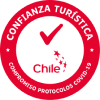
Choose the services that have joined our protocols against COVID
Social networks


IMAGES
VIDEO
COMMENTS
These Chile itineraries for ten days and two weeks rely on the fact that you will take some long-distance transport to travel between the regions. Yes, flights can be expensive, but if you plan ahead, you can get a good deal with Sky Airline (the low-cost airline) and LATAM (the more upmarket airline).
Best road trip for wine lovers. Santiago-Santa Cruz; 180km (112 miles); allow 1-3 days. This popular ruta del vino (wine route) uses the Pan-American Highway as a fast way to tackle three of Chile's most important wine regions - the Maipo, Cachapoal, and Colchagua Valleys. Note that it's best to have a designated driver for this trip ...
A ramshackle town hugging the depressingly-named—yet enchantingly picturesque—Last Hope Sound, Puerto Natales is deep in cowboy country. To get to grips with the Patagonian pursuit of sheep farming, board the speedboat to Estancia La Península on a one-day tour of their 19,000-hectare family ranch.
The Carretera Austral Highway is the 775-mile (1,250-kilometer) Route 7 from Puerto Montt to Villa O'Higgins. Chasing the Chilean coastline, meandering through fjords, narrow valleys, dipping in and out of fast flowing rivers and gawping at the dramatic waterfalls. This road is extremely romantic and photo-perfect as well as peaceful, but at ...
Day 1: Santiago de Chile. The capital of Chile—Santiago de Chile. We arrived in the morning, so we had the whole day to check off the must-see places in Santiago. And as there are very few of them, we were done by noon. On the other side, it's wise to plan a light itinerary for the first day. Santiago lies in the -4 GMT zone, so the jet lag ...
Travel from Chile to Argentina across the stunning Andean Lakes, also known as the Lakes District. Beginning in Santiago, you will travel to Puerto Varas, in Chile, and then across the lakes to Bariloche, Argentina, taking in the stunning mountain scenery, before ending your trip in Buenos Aires. view trip ⤍
Distance: 20 km (12.5 mi) in a bus + around 1 500 m (4 921 ft) ascent. Locations: Pucón, Villarrica Volcano, (Huerquehue NP) Accommodation: same as day 7. Our Tips for 2 Weeks in Chile: Pack for all seasons, from north to south side of Chile, there's every possible weather situation you can think of.
Santiago // 7 days // We passed through Santiago a total of 3 times on our travels through Chile - mostly to catch buses and planes. Our time in the city amounted to about a week, but in retrospect, I'd argue you can cover most of Santiago in 3-4 solid days.. First up, let's start with the views. Santiago boasts the Andes in the horizon (and while the air can be quite smoggy!) you can ...
South America's skinniest country spans a volcano-fringed desert, fertile wine valleys, pristine fjords, and glacier stippled mountain ranges making it the ultimate destination for adventure travelers. This guide to Chile is a one-stop-shop for planning, covering everything from must-see places, tantalizing local cuisine, and money-saving ...
2 or 3 weeks in Chile budget. Going out in Chile can be expensive but bus transportation is affordable and the entrance to most sites is either free or cheap. It's also fairly easy to couchsurf and hitchhike, bringing down the overall cost of travel in Chile. You can check departures times and prices for all bus journeys on Recorrido.cl.
10. The Elqui Valley. Best place for stars and pisco. This fertile valley on the southern fringe of the Atacama Desert is the epicenter of Chile's pisco industry, with a half-dozen distilleries where you can learn about the nation's revered brandy (as well as toss back a few sours).
Family Travel. 8 of the best things to do in Chile with kids. Sep 23, 2023 • 7 min read. With some patience - and a bit of basic Spanish - the thin South American nation of Chile can be the perfect setting for a family adventure.
Chile is a very long and narrow country offering a huge variety in naturel & cultural destinations. In this article I will show you a sample Chile itinerary for 10-14 days. Starting in the capital Santiago de Chile towards the northern Atacama Desert and Iquique on the coast.
Chile Travel Guide. Last Updated: September 3, 2024. Chile is one of the most slender and longest countries in the world — it's just 150 miles across at its widest point! From the snow-capped volcanoes of Patagonia and blistering heights of the Andes to world-class wineries and Maoi sculptures of Easter Island, there are a lot of wonderful ...
Drive 2.5 hours further south to find Valle Chacabuco. Use Valle Chacabuco as a rest stop—or hike the 14-mile Lagunas Altas Trail to spot guanacos and condors among the alpine lakes. Finish the ...
The country has a good road network, and driving is a quick, relatively stress-free way of getting around. Chile's rail network has fallen into decline and only limited services are available. South of Puerto Montt, ferry services provide a slow but scenic way of travelling as far as Puerto Natales. By air. By bus.
Backpacking Chile 2 Week Itinerary #2: 1 Month in Patagonia. Patagonia is home to some of the most beautiful, majestic, and harshest scenery in the world. This Chile and Argentina itinerary will hit all of Patagonia: the impressive Andes mountains crowned with glaciers, waterfalls, glacial lakes and marshlands.
24 de August de 2024 by Flor Vallejo. In this complete guide to travel the Carretera Austral you will find information to travel the scenic Chile's Southern Highway, one of the most beautiful in the world. The Carretera Austral starts in the city of Puerto Montt, crosses scenic landscapes between lakes and mountains, culminating after 1230 km ...
Here you have a travel guide including 5 must-see locations. Ruta 7 or Carretera Austral starts in the south of the Los Lagos Region and crosses the entire Aysén Region. To get there, you can take a plane to El Tepual Airport in Puerto Montt and move south, or arrive directly at Balmaceda Airport , one hour from Coyhaique .
So, to travel in Chile, you have three main options: Hire a car in Chile Pros - Get off the beaten track, Chile's roads are well signed and drivers seem reasonably sensible compared to their South American neighbours! ... Cons - Many routes are expensive. The two main airlines operating in Chile are LAN and Sky Airlines. We flew with Sky ...
Trains were once a pillar of domestic travel for longer routes, but are now little used outside of Chile's Central Valley; the Empresa de los Ferrocarriles del Estado (EFE) service from Santiago to Chillán is the only route likely to appeal to visitors, though there are also occasional tourist trains from Santiago to coastal resorts or nearby ...
Technically, the "route" is a rebranding of a portion of Chile's epic Southern Highway, or Carretera Austral, which stretches from the industrial city of Puerto Montt in the north to the ...
El Chalten and Perito Moreno Glacier are some of the not-to-miss attractions in Argentinian Patagonia so is Torres del Paine in Chile. The suggested 10-day Patagonia itinerary gives you enough time to explore the area. You can join an organized 9-day tour that starts and finishes in El Calafate.
Entry Requirements. Bring your hotel/accommodation reservation to be checked or the letter of invitation signed before a Public Notary in Chile. Proof of economic resources through copies of bank accounts or another certificate that proves the possession of, at least, USD $ 46 for every day of residence in Chile.